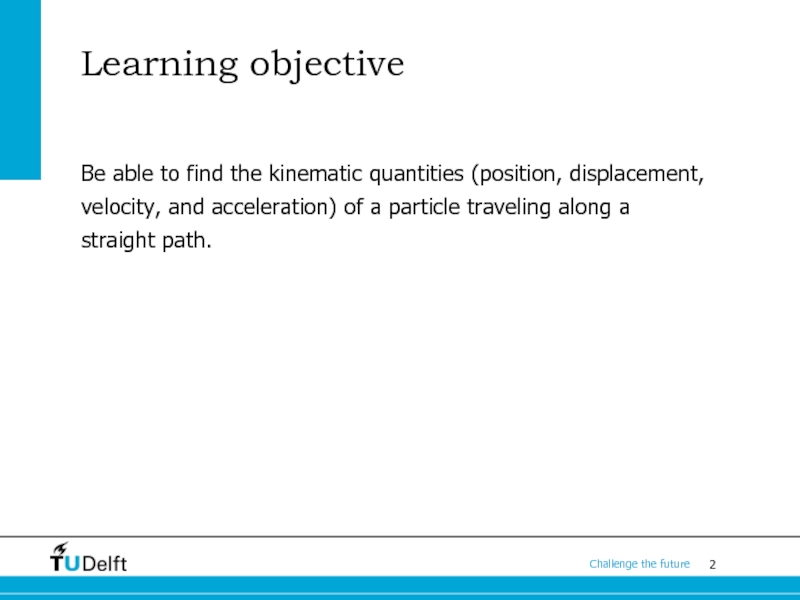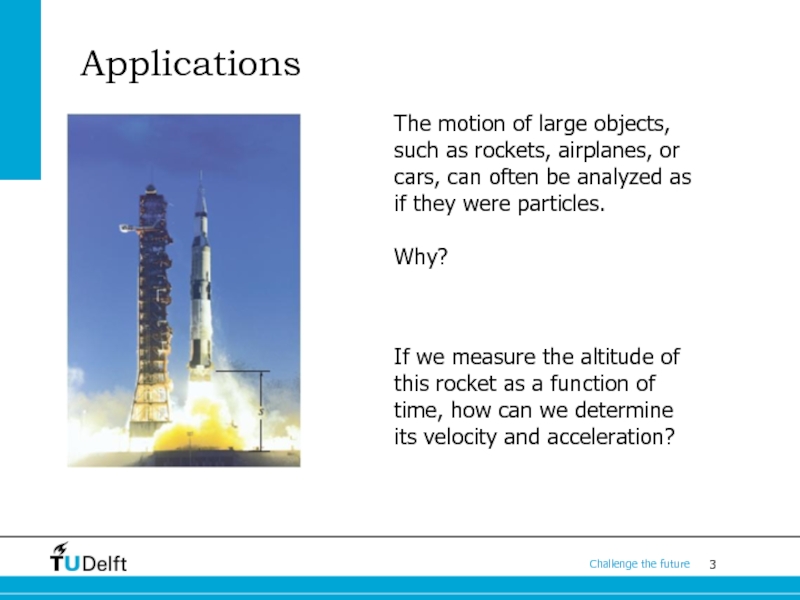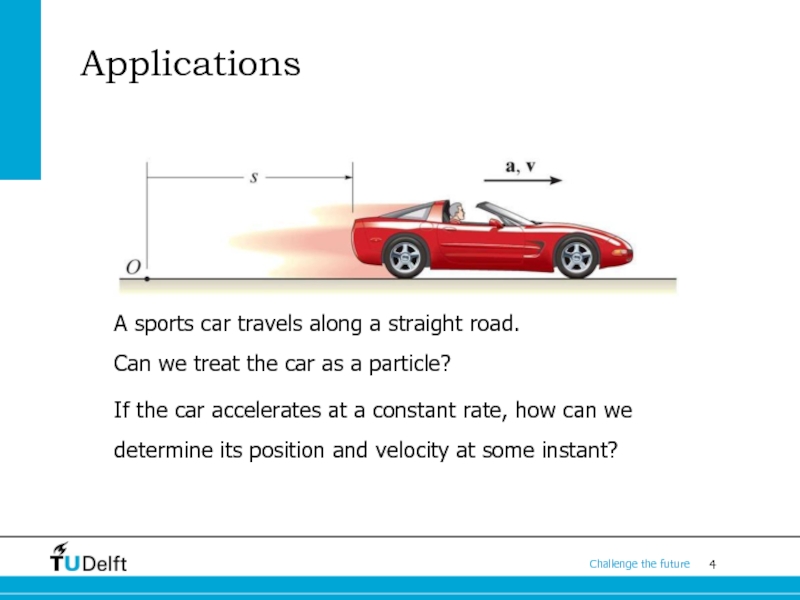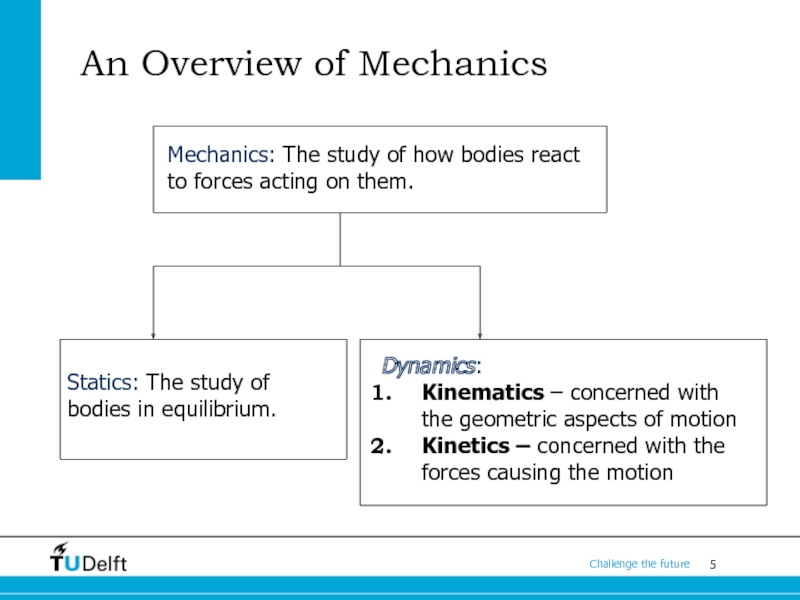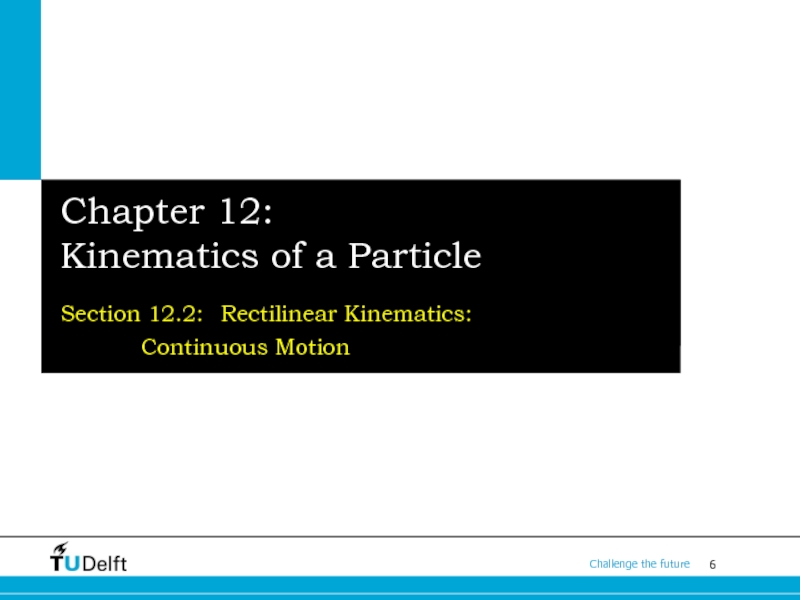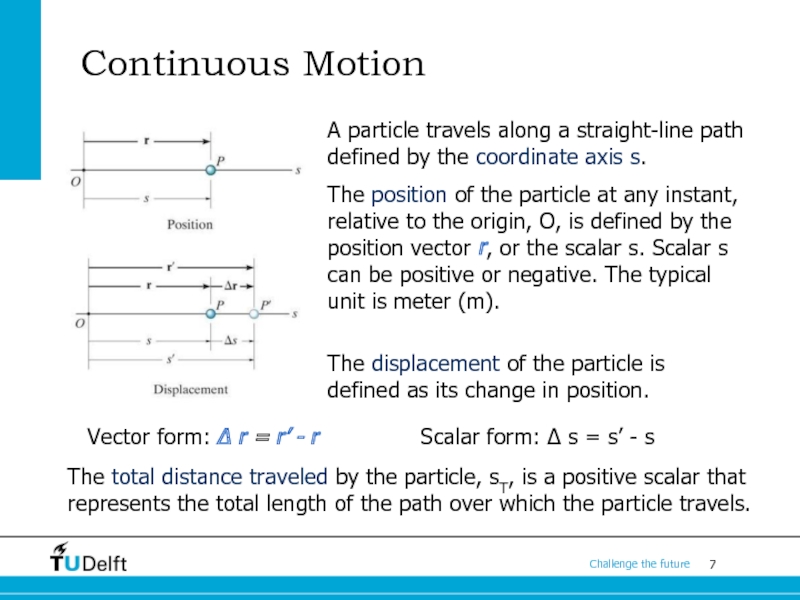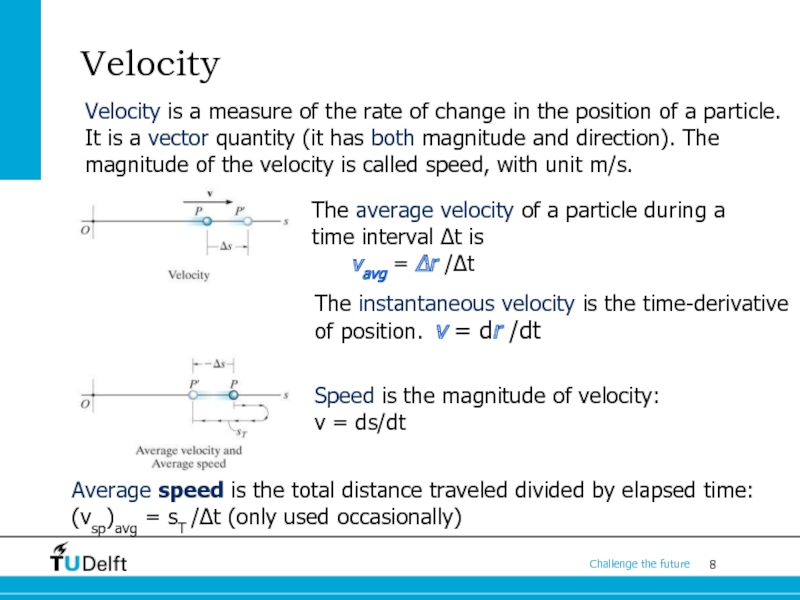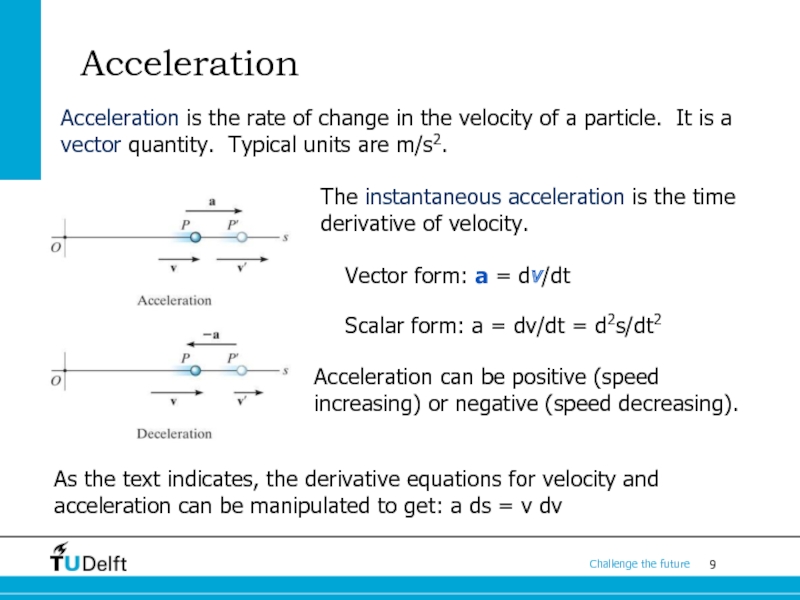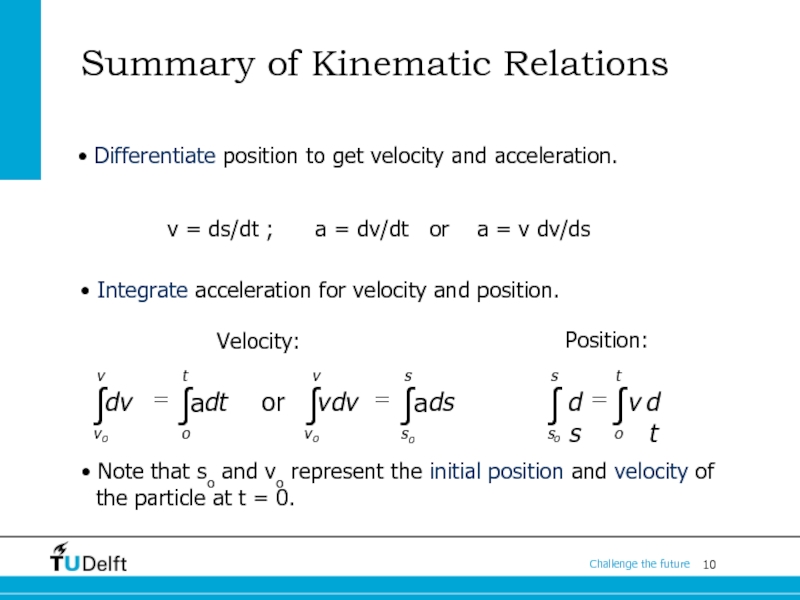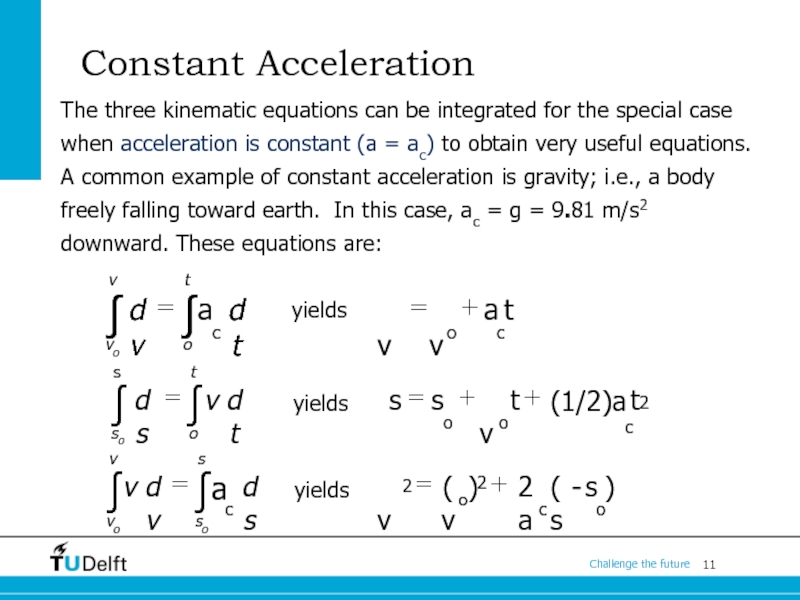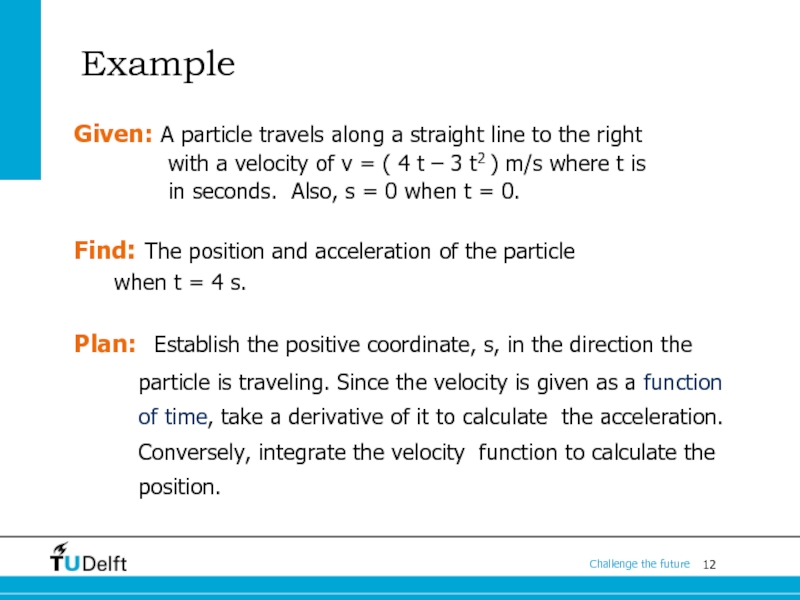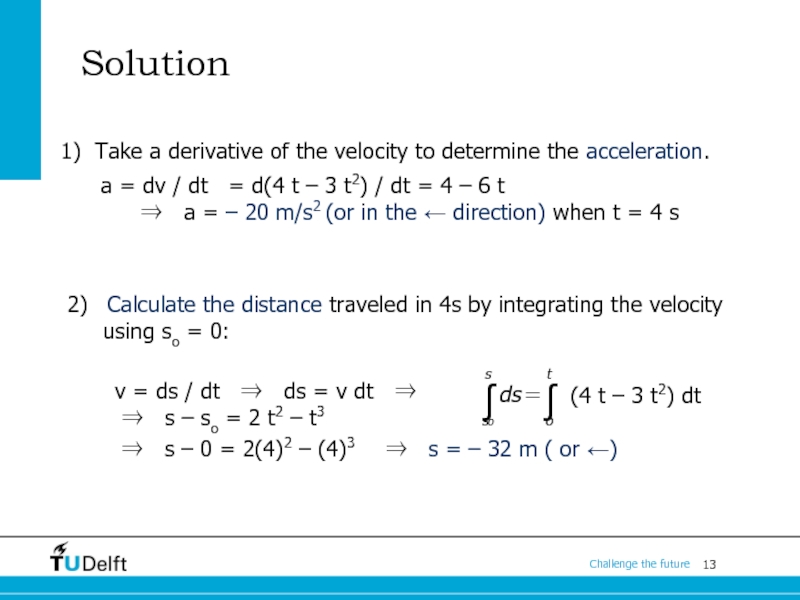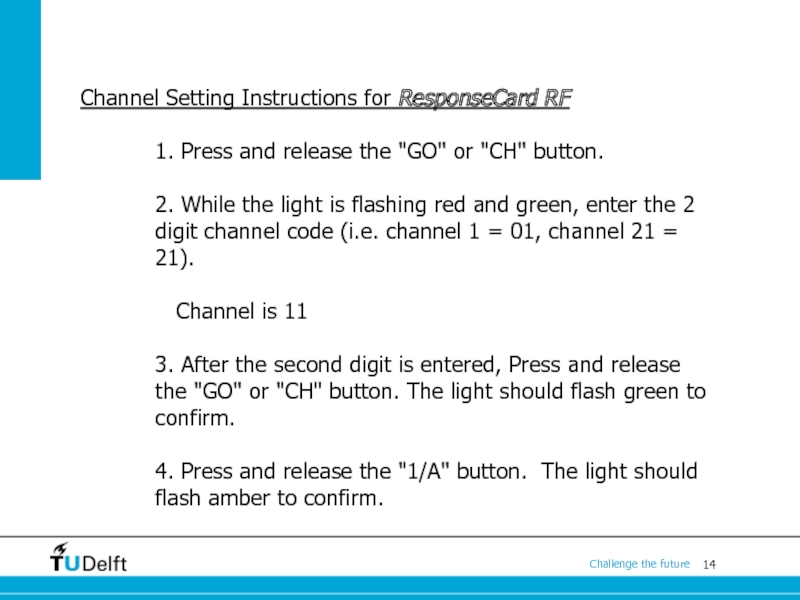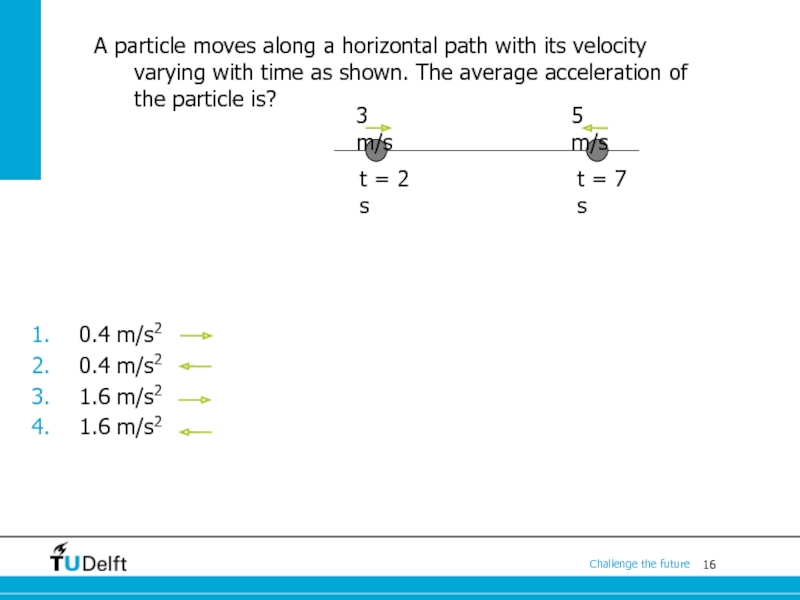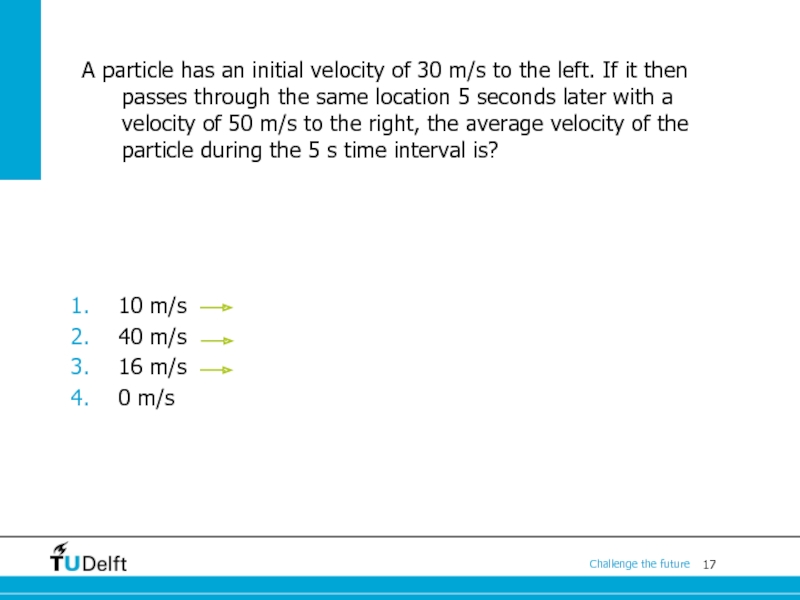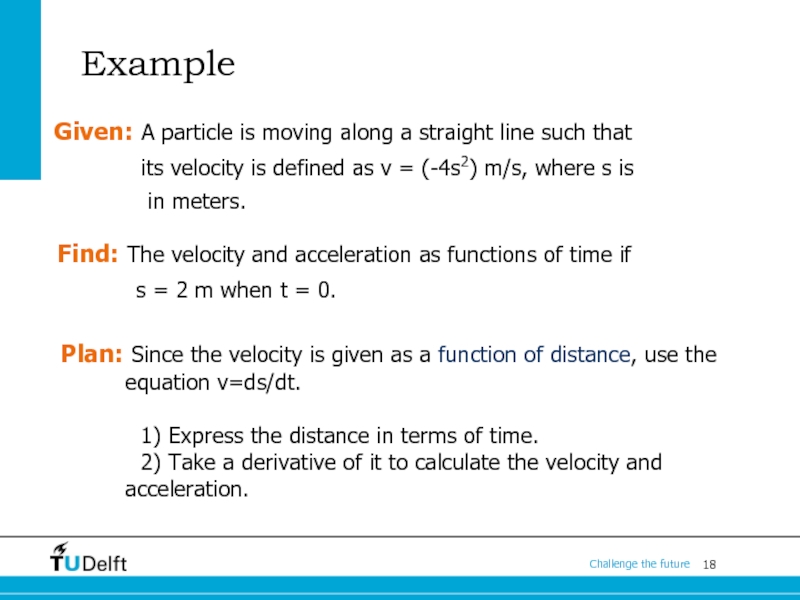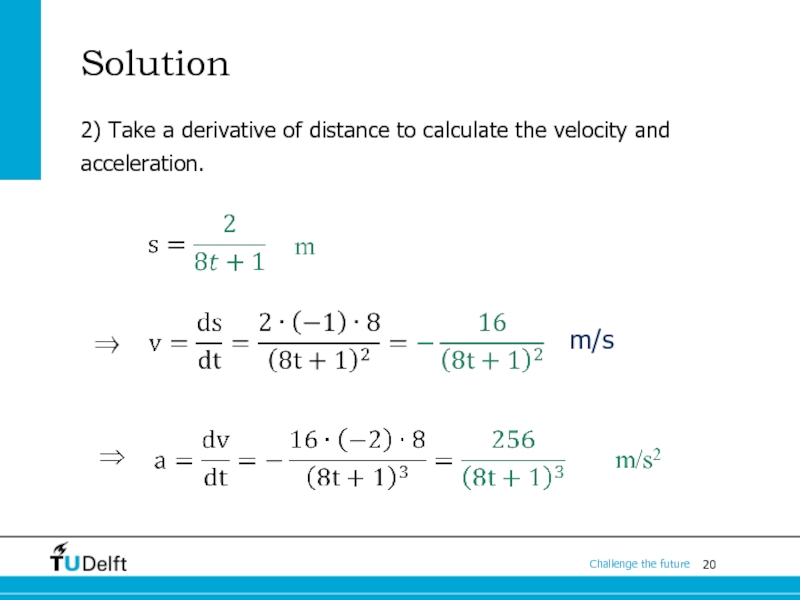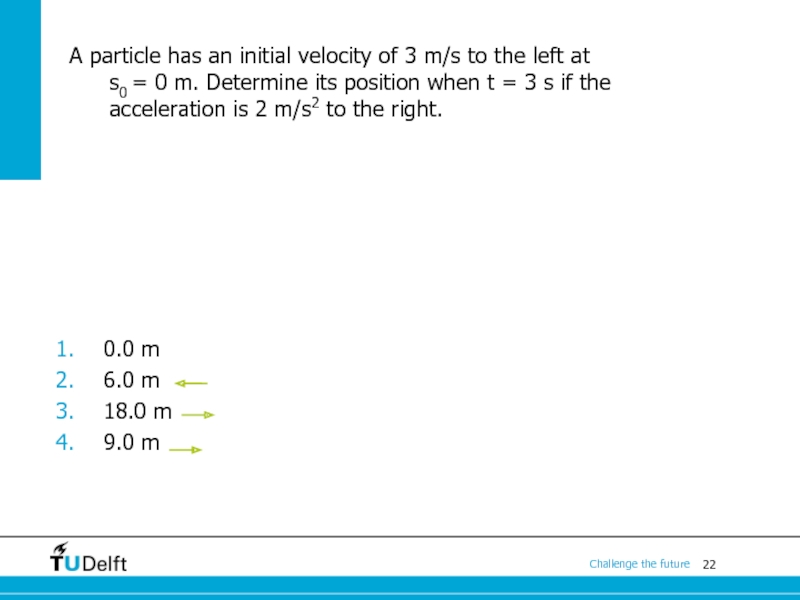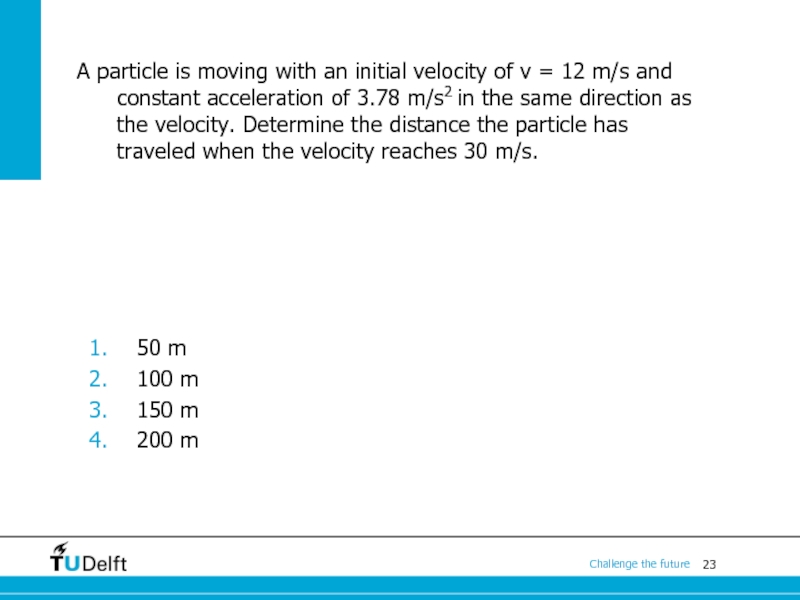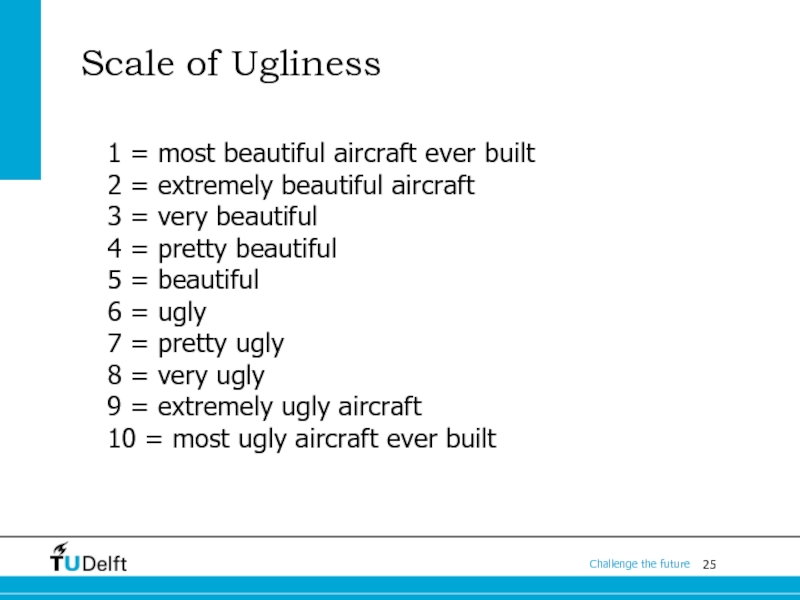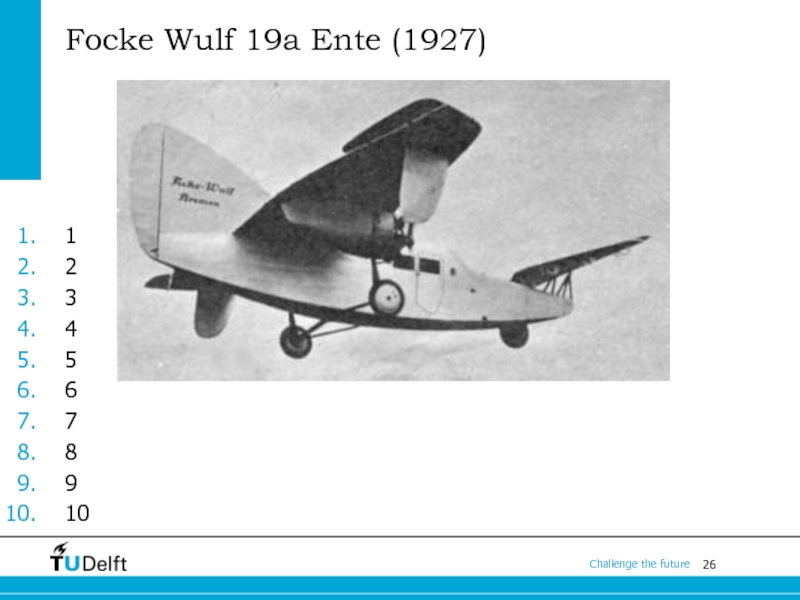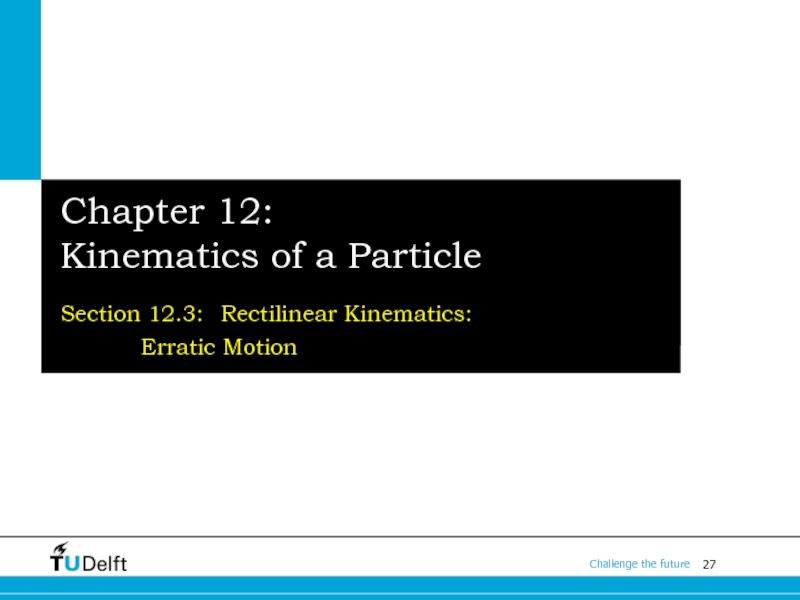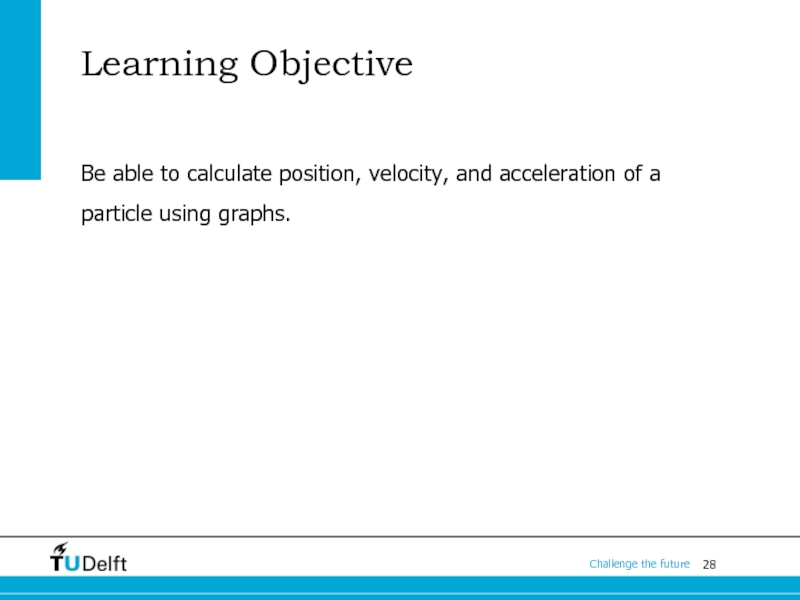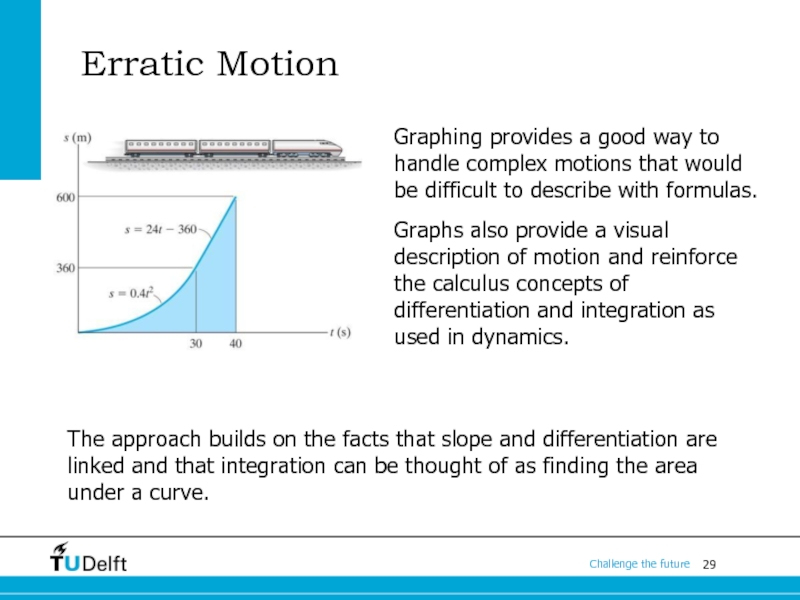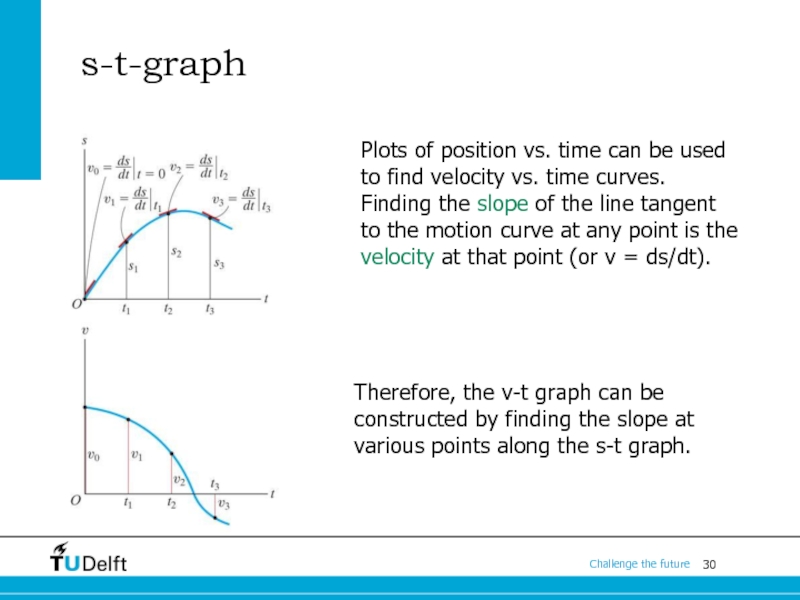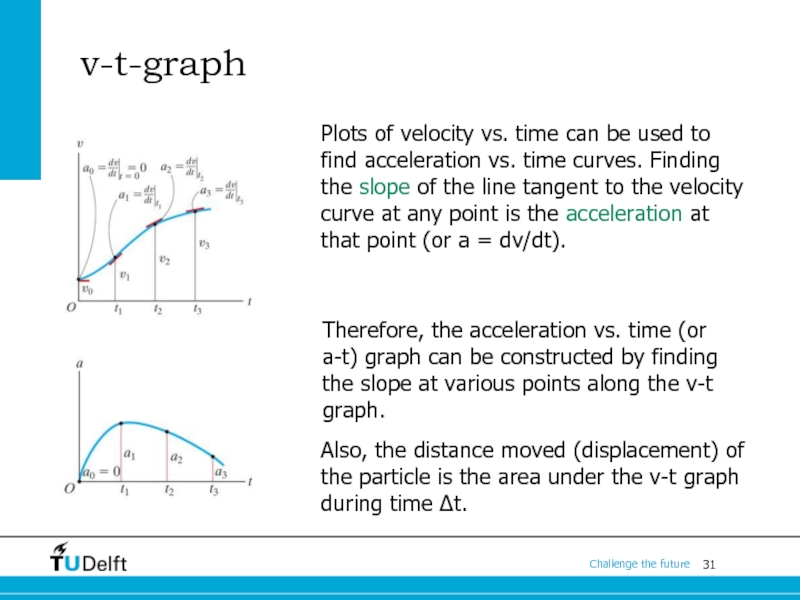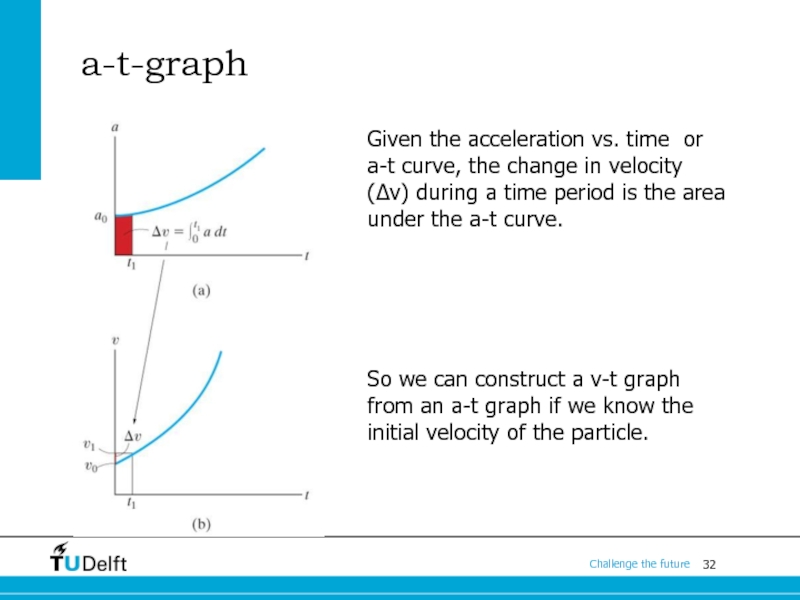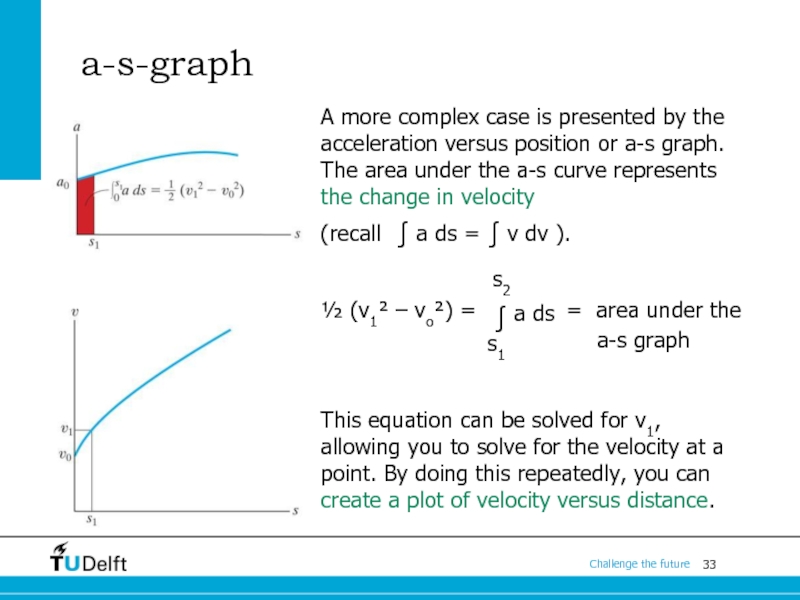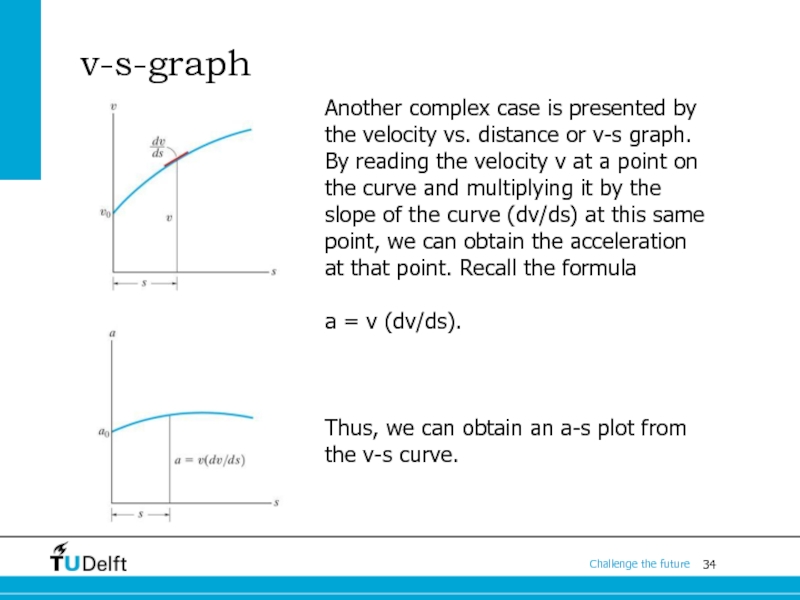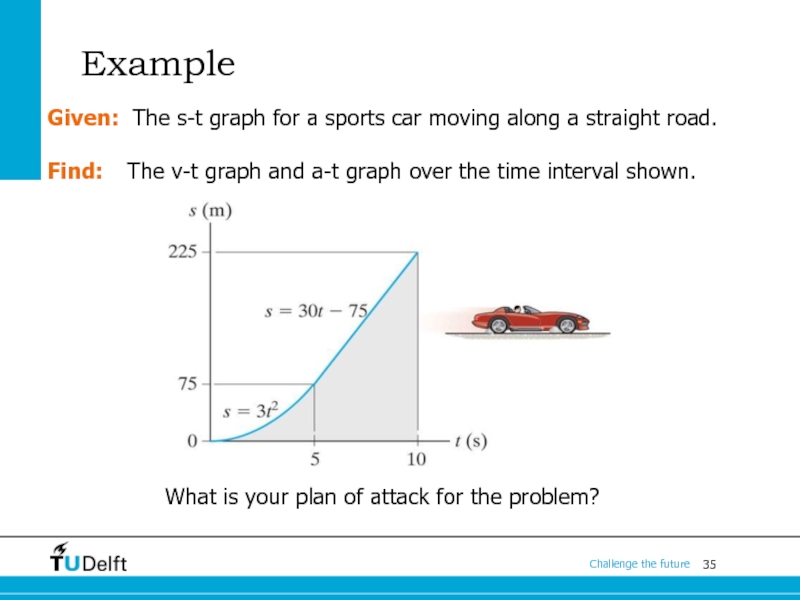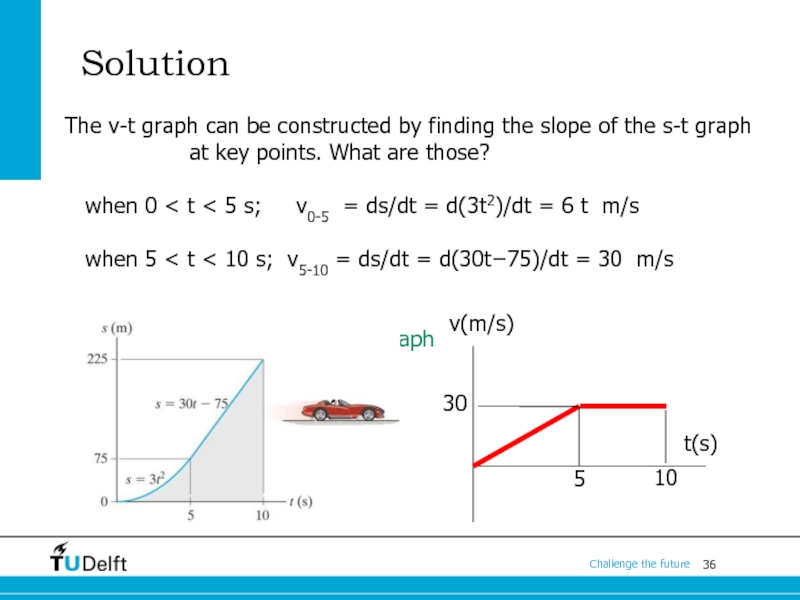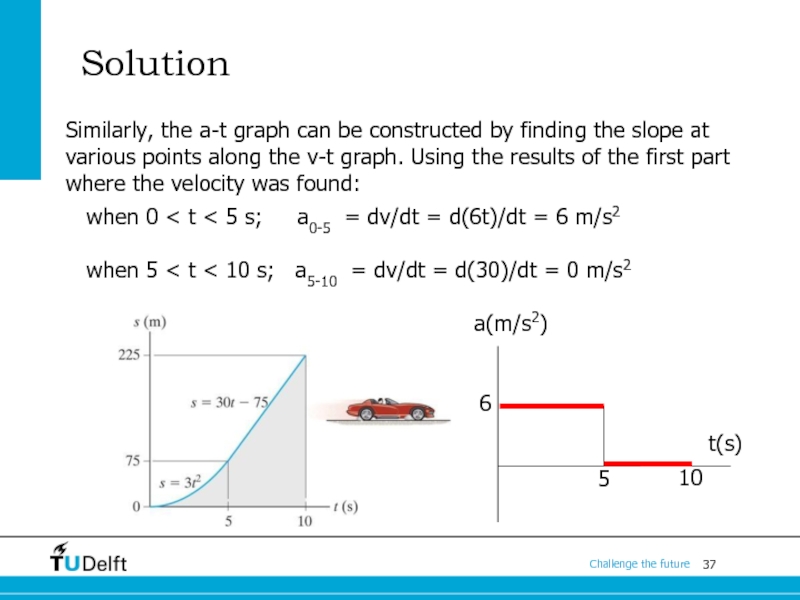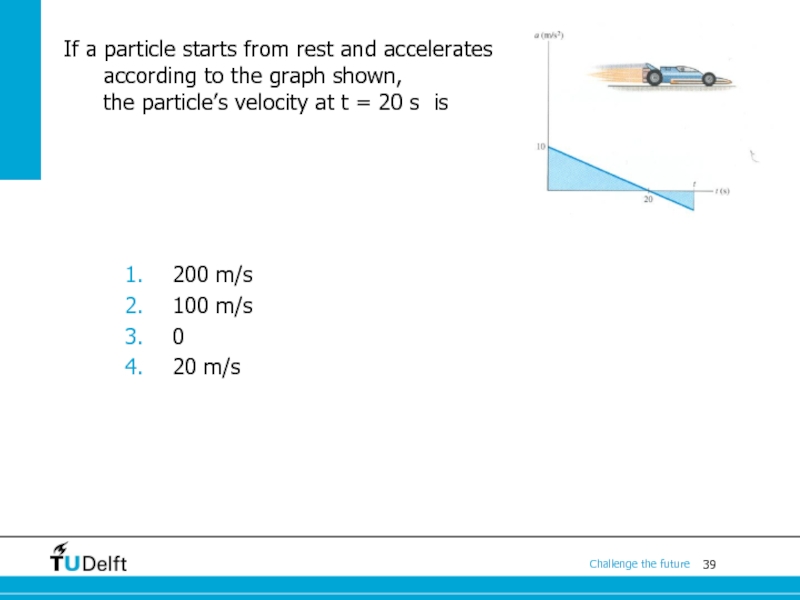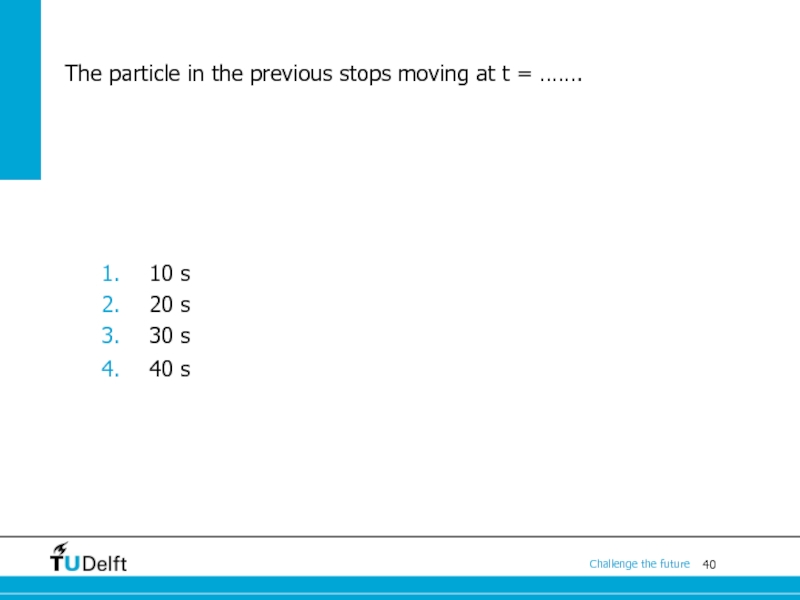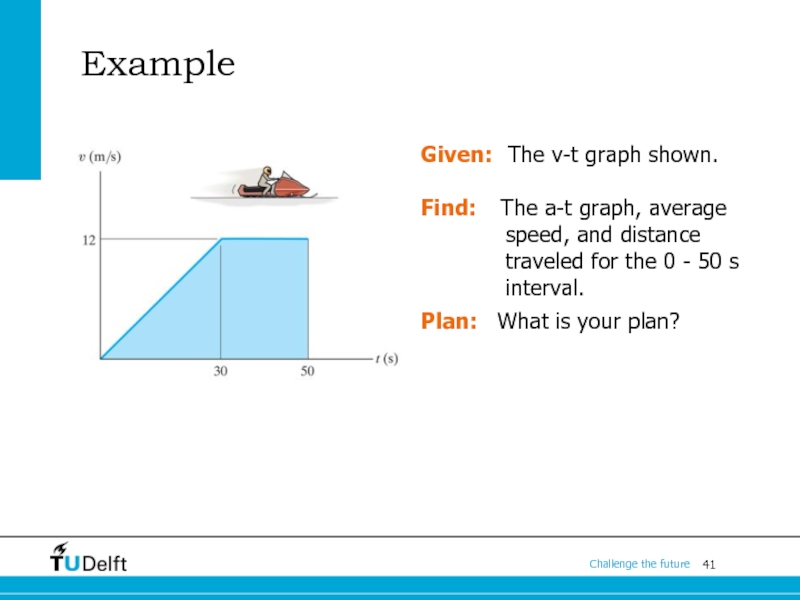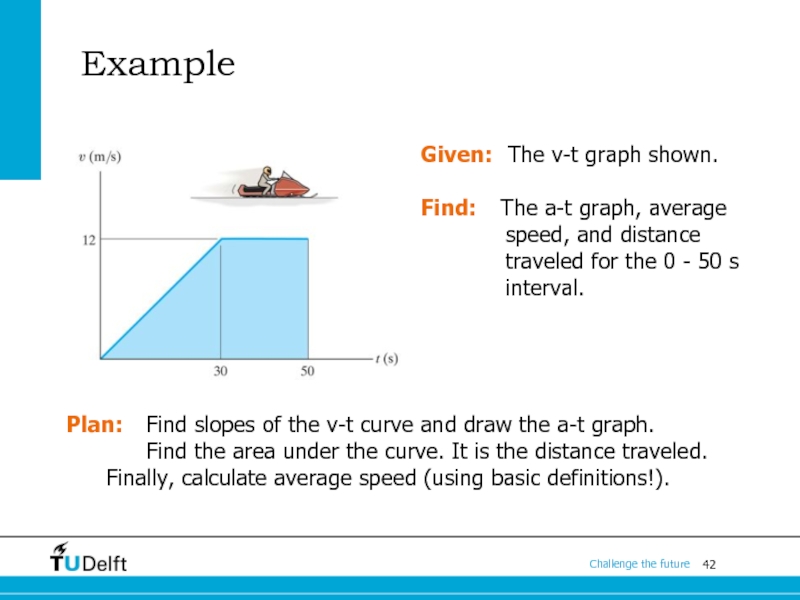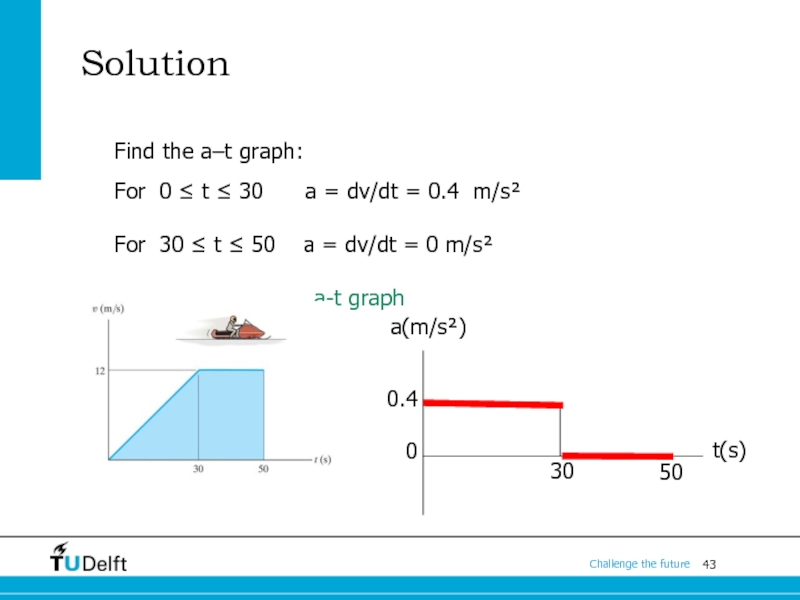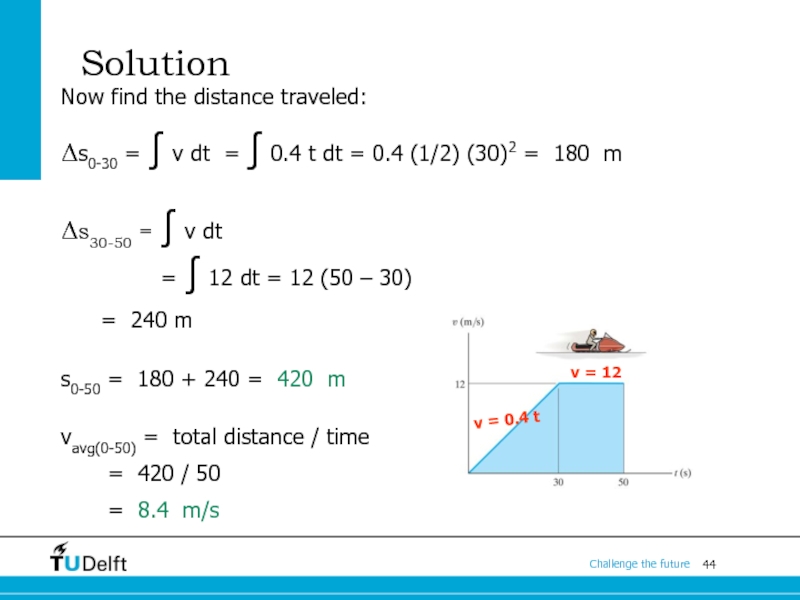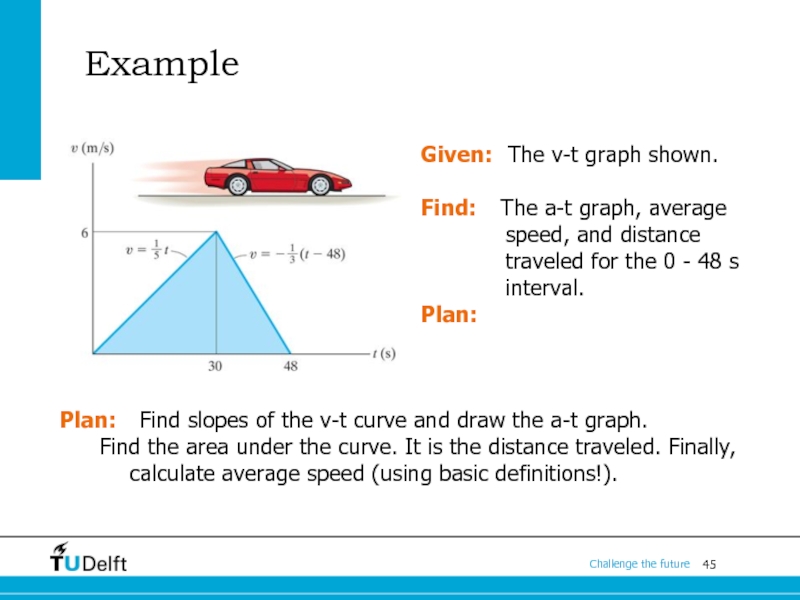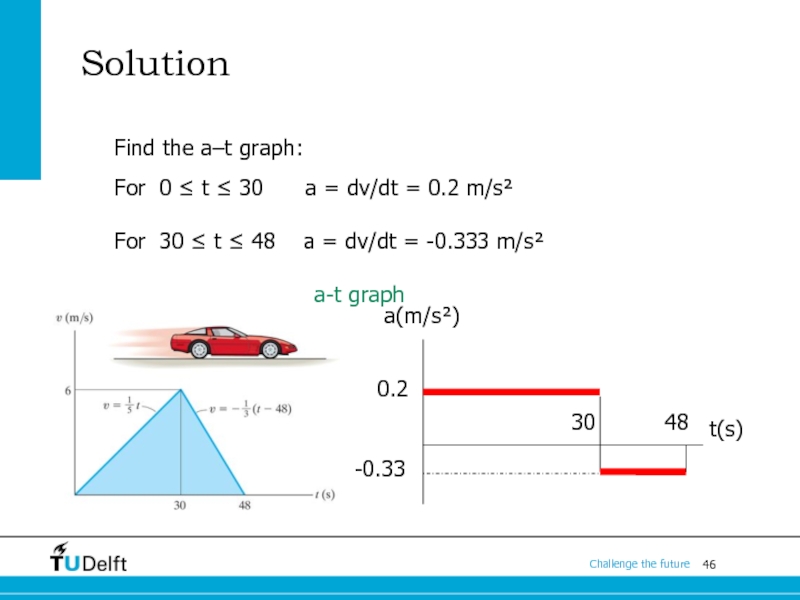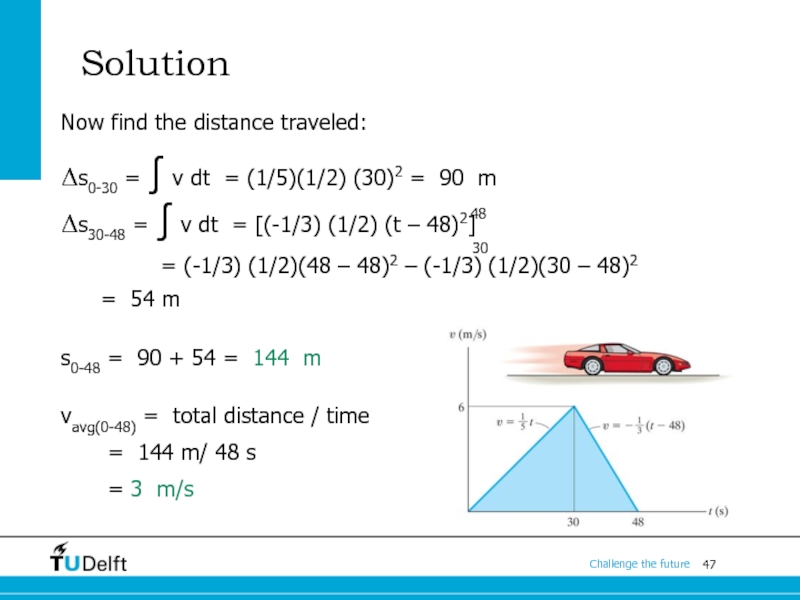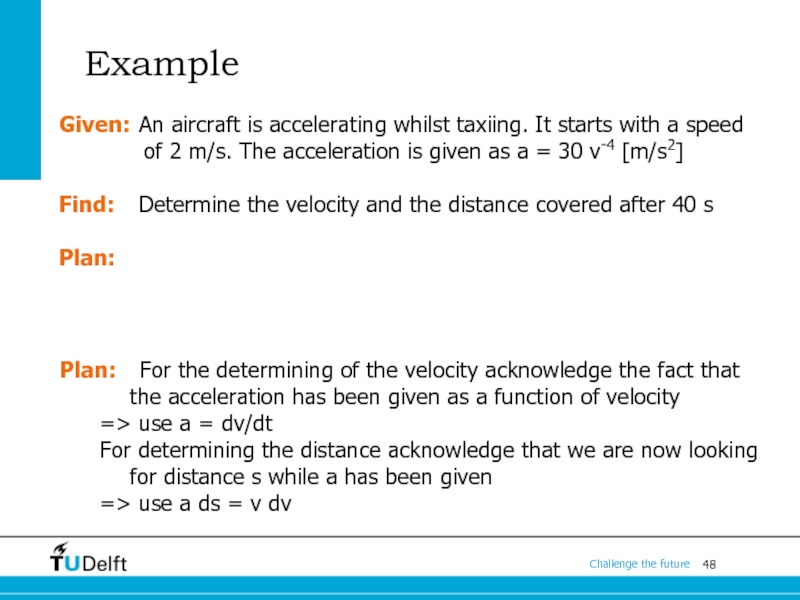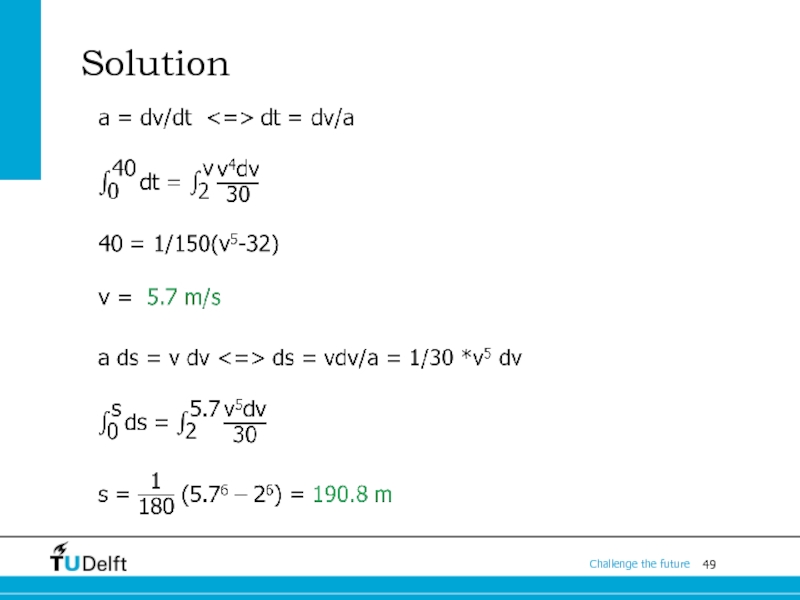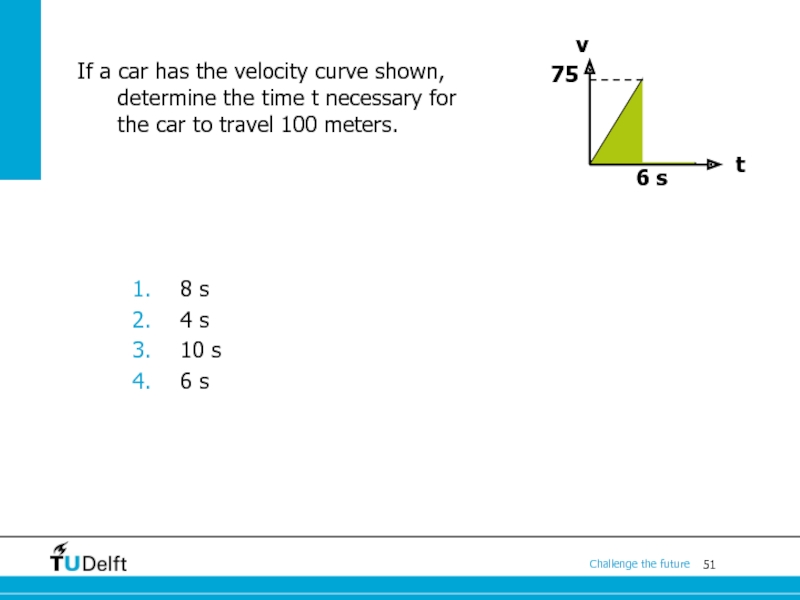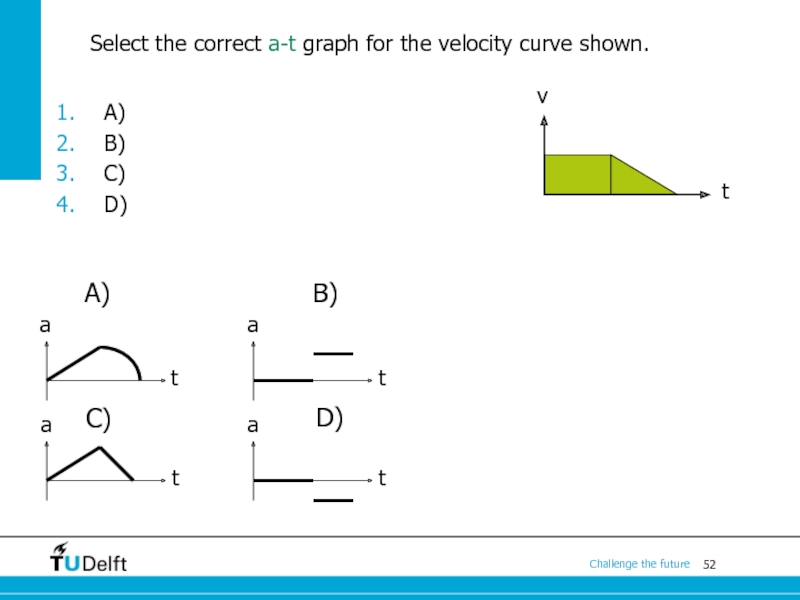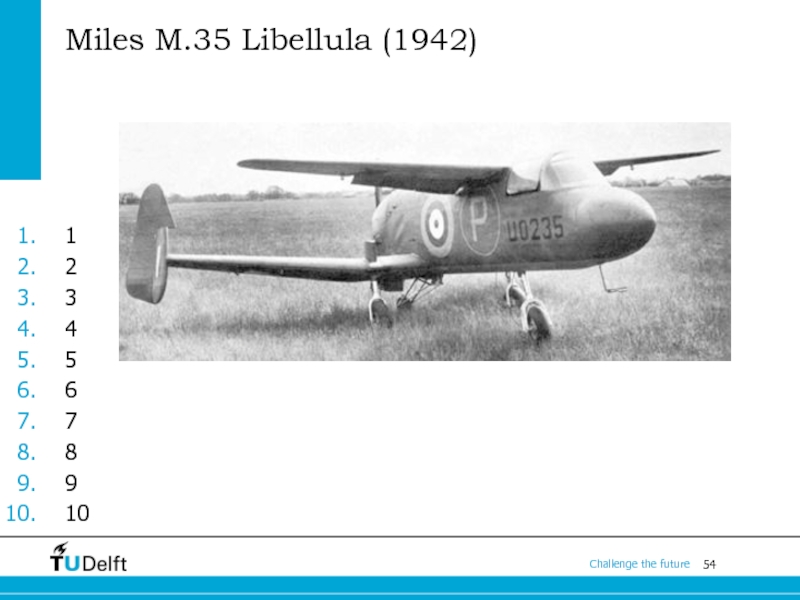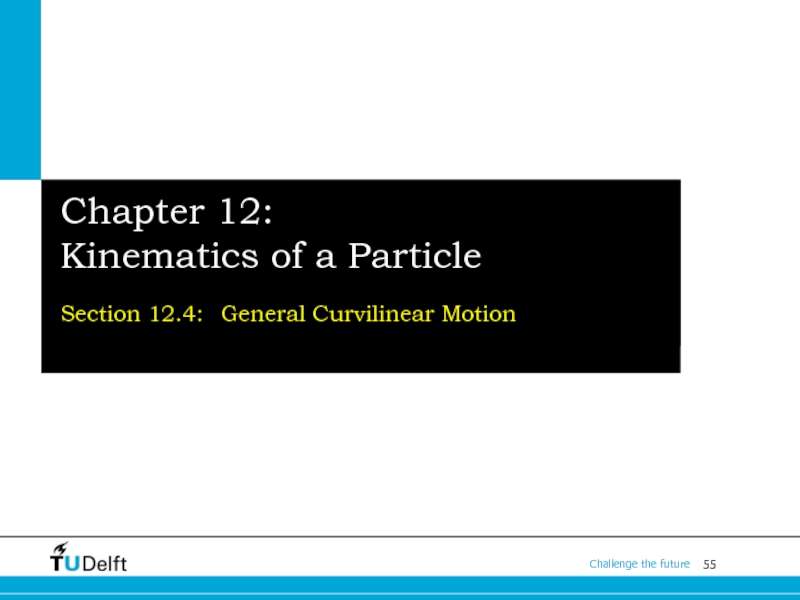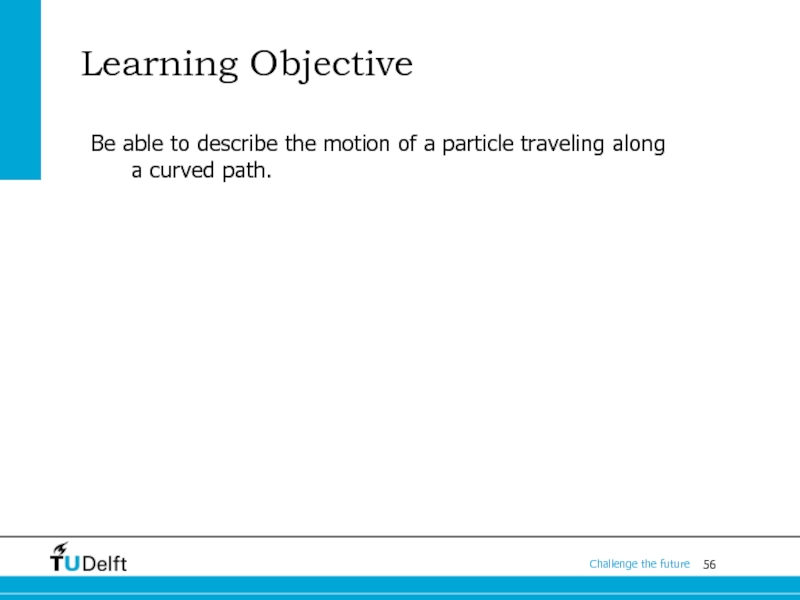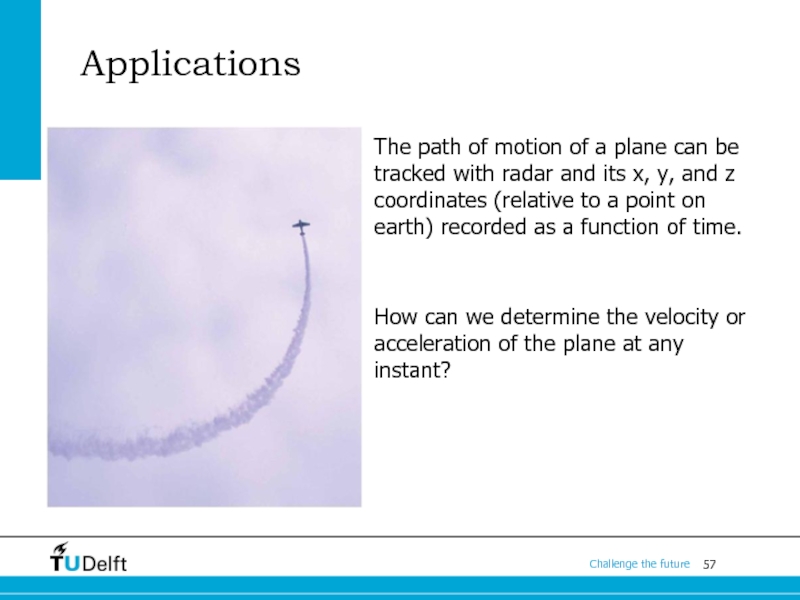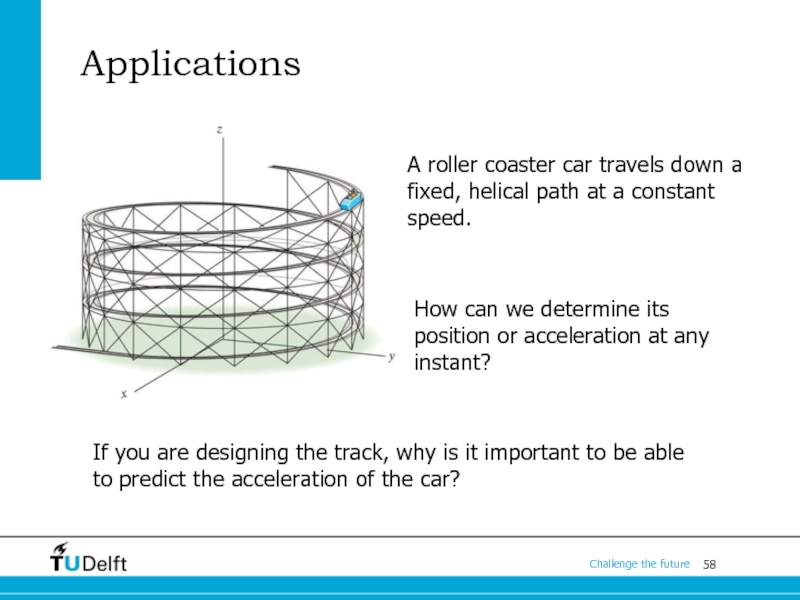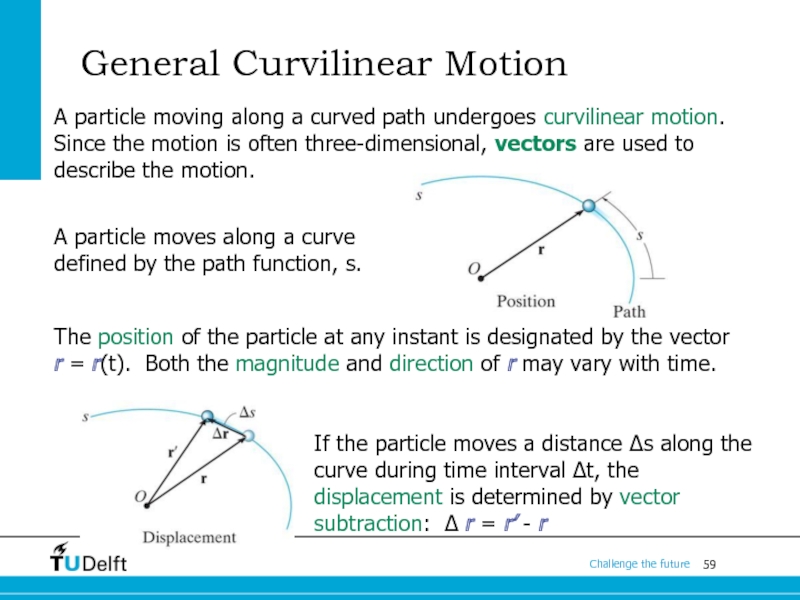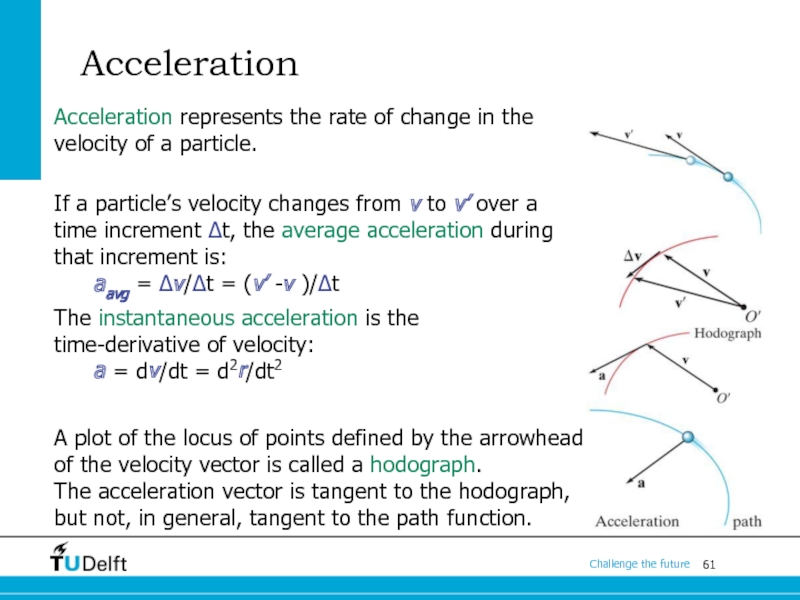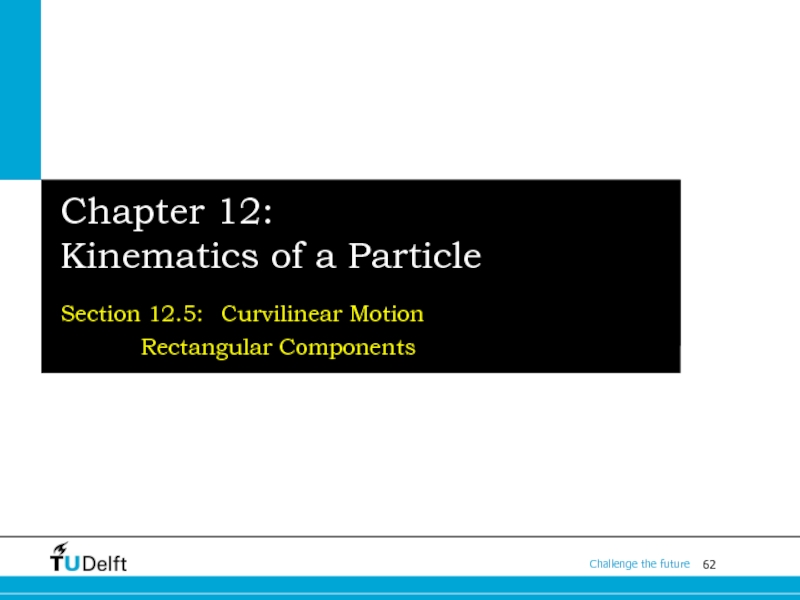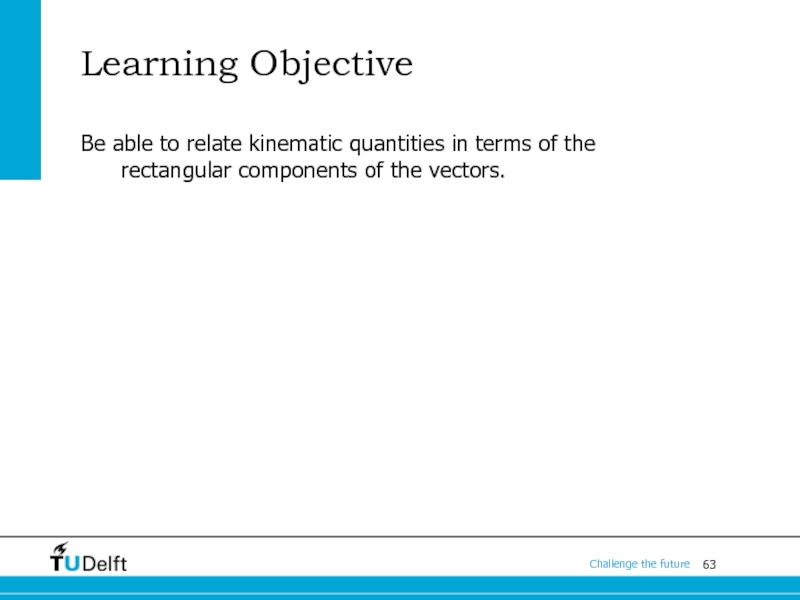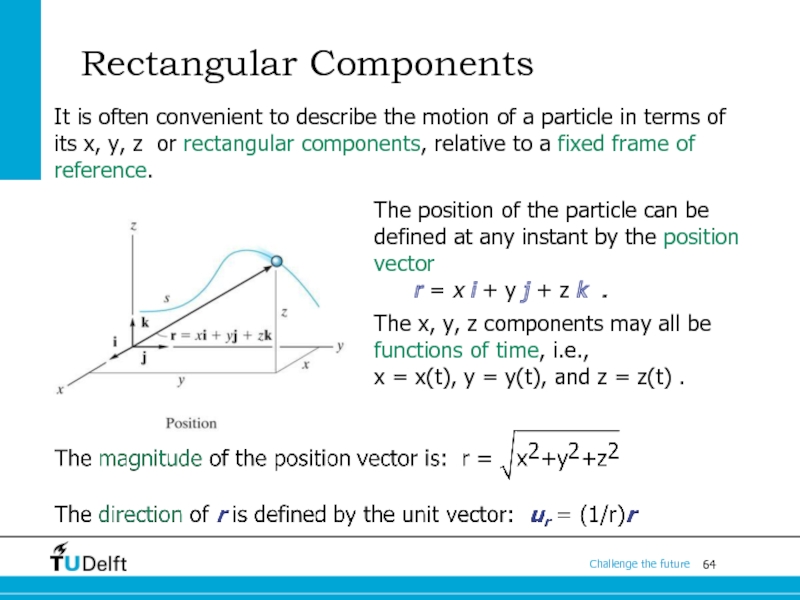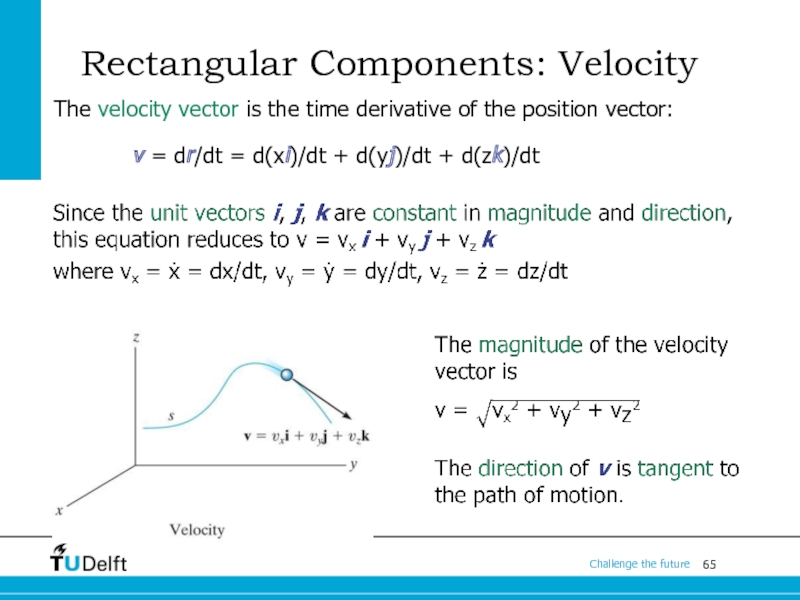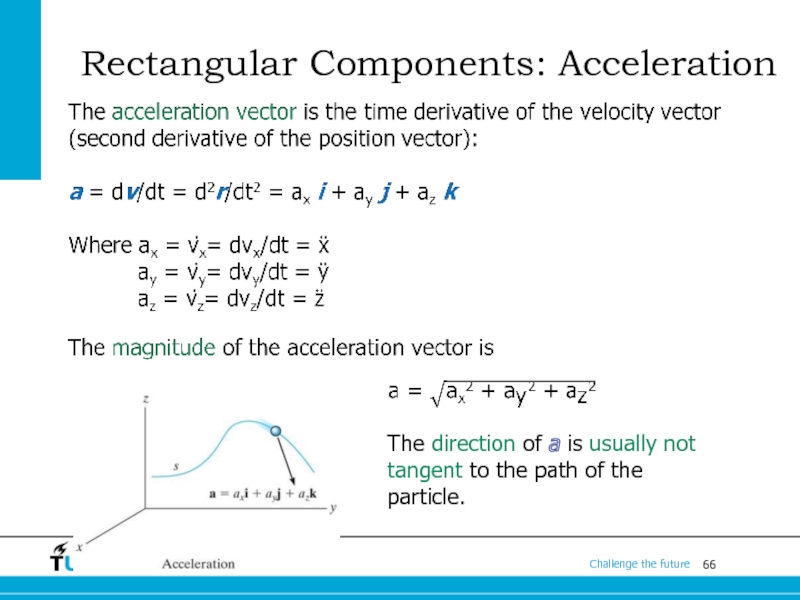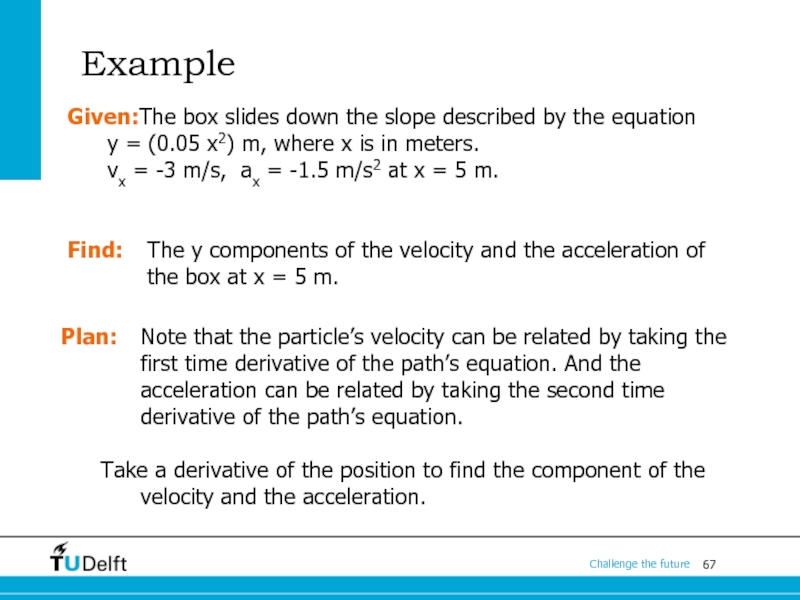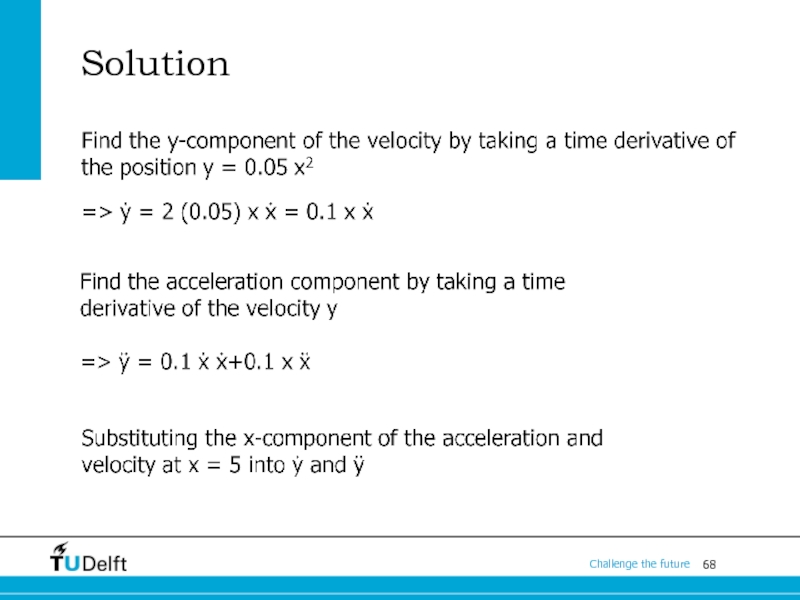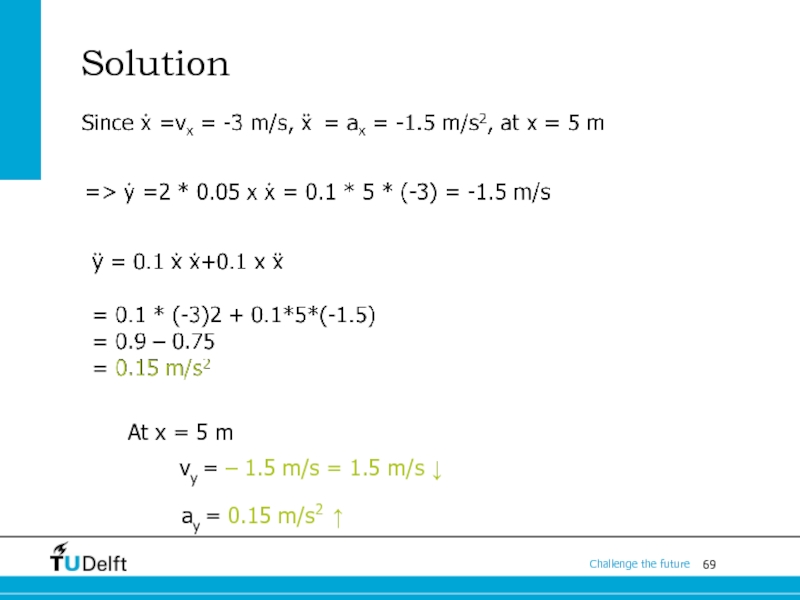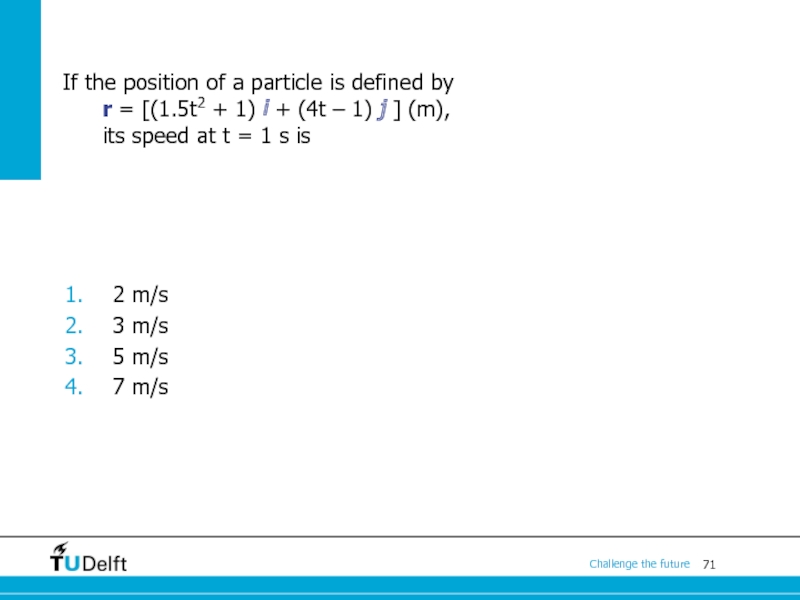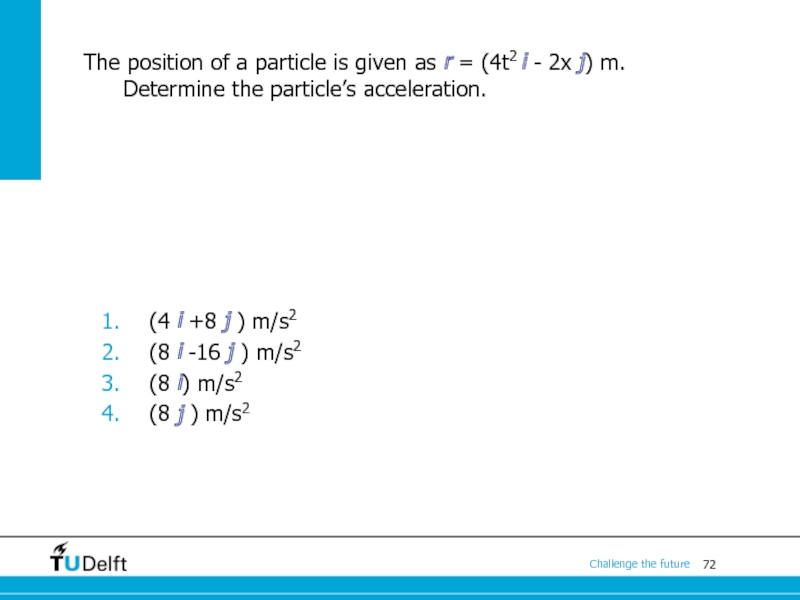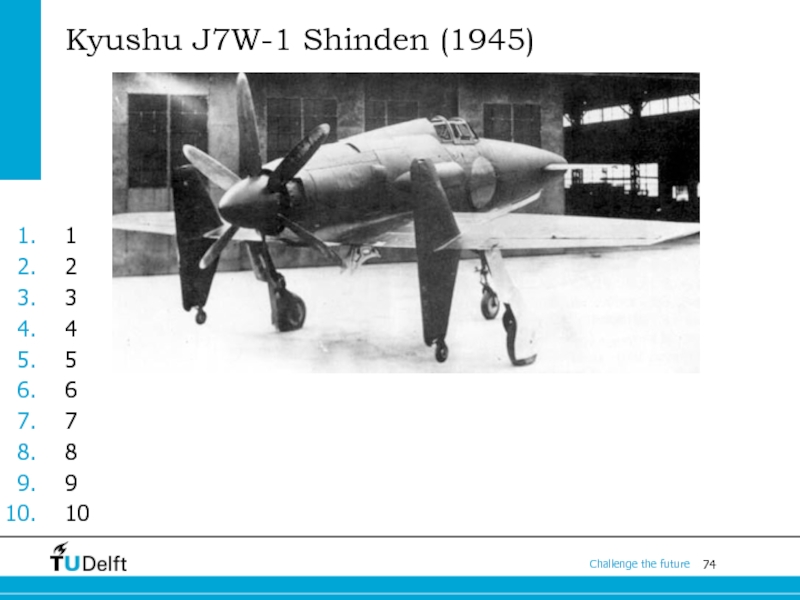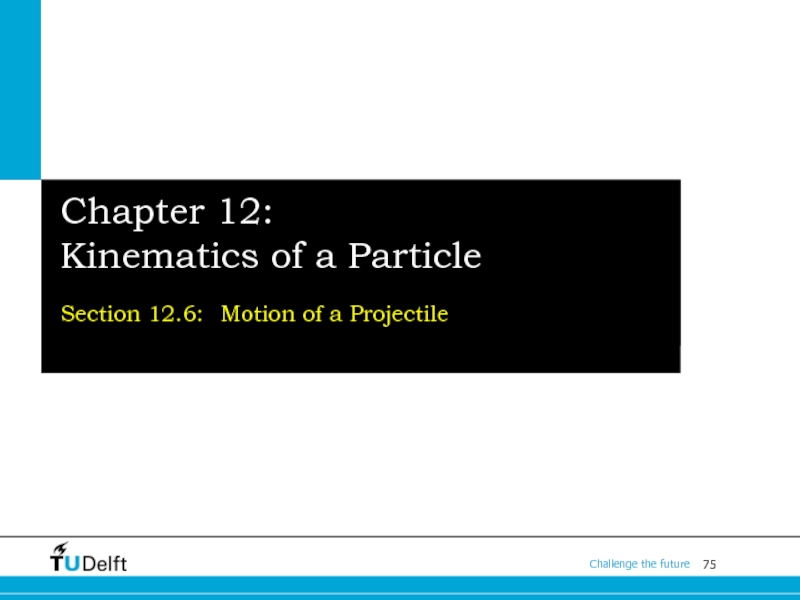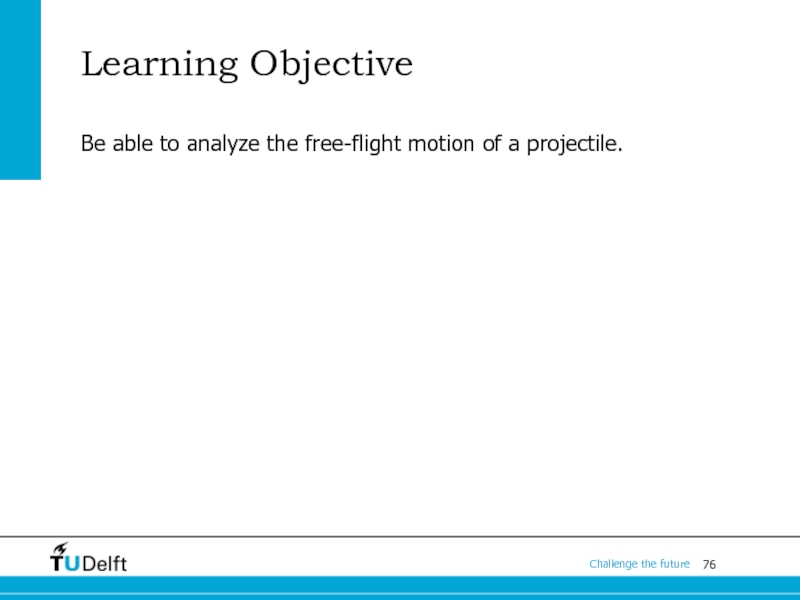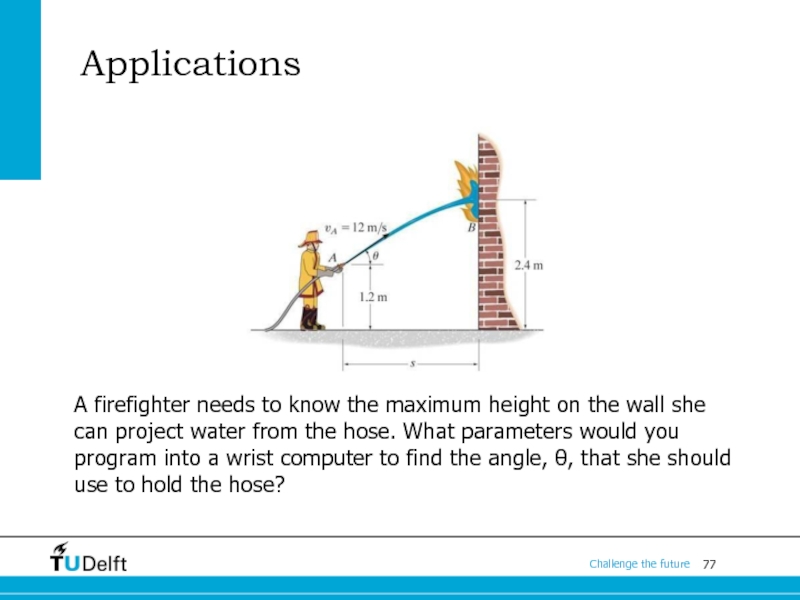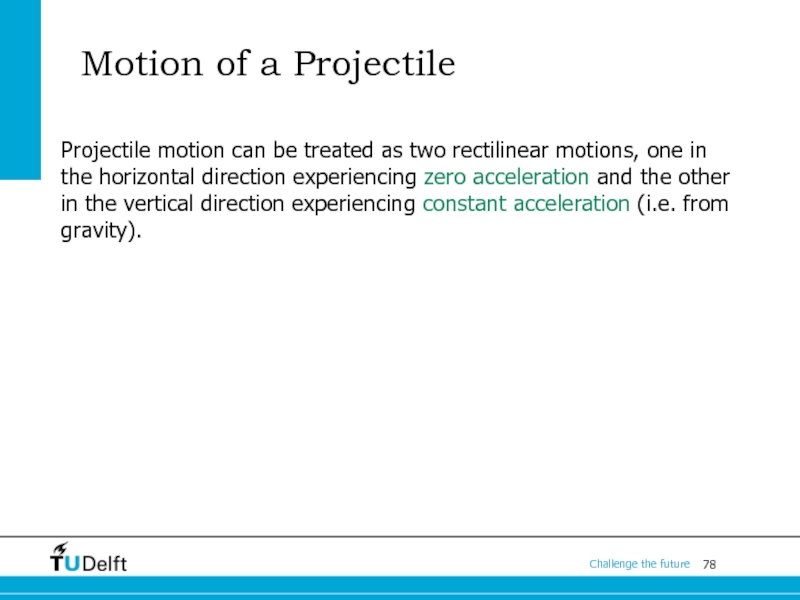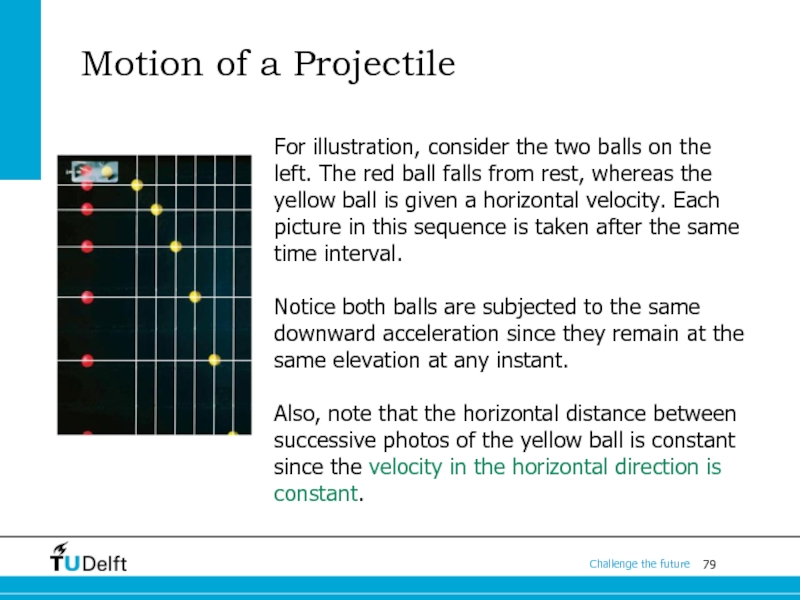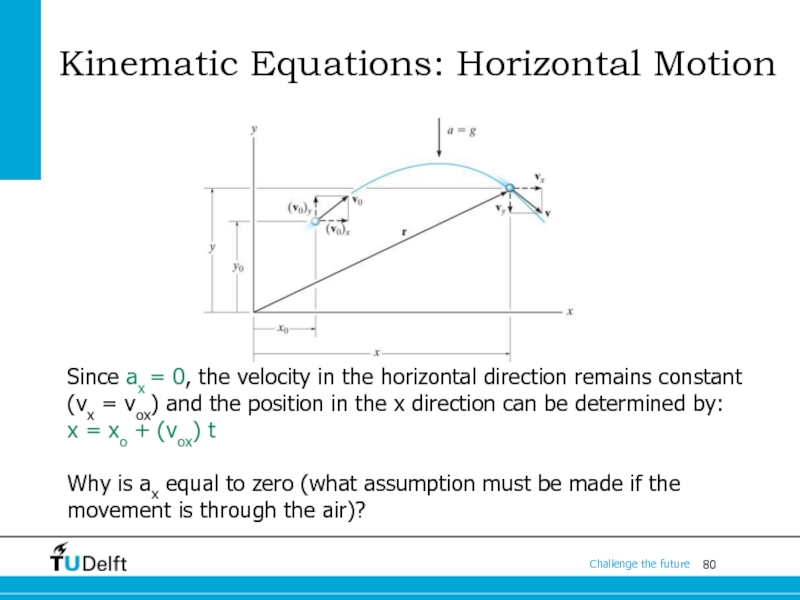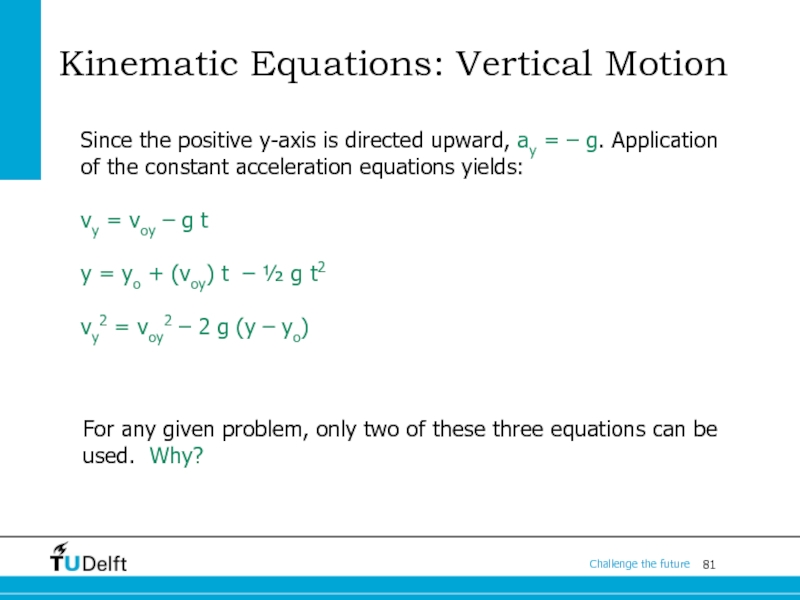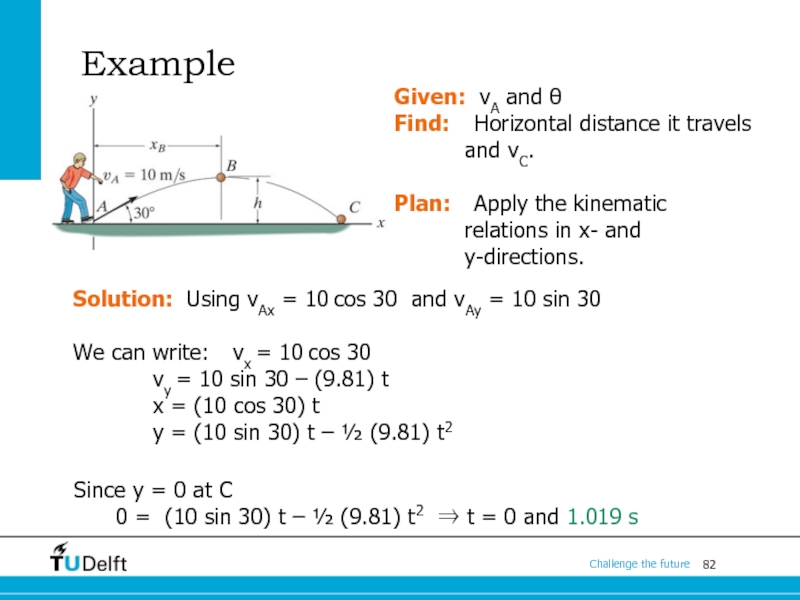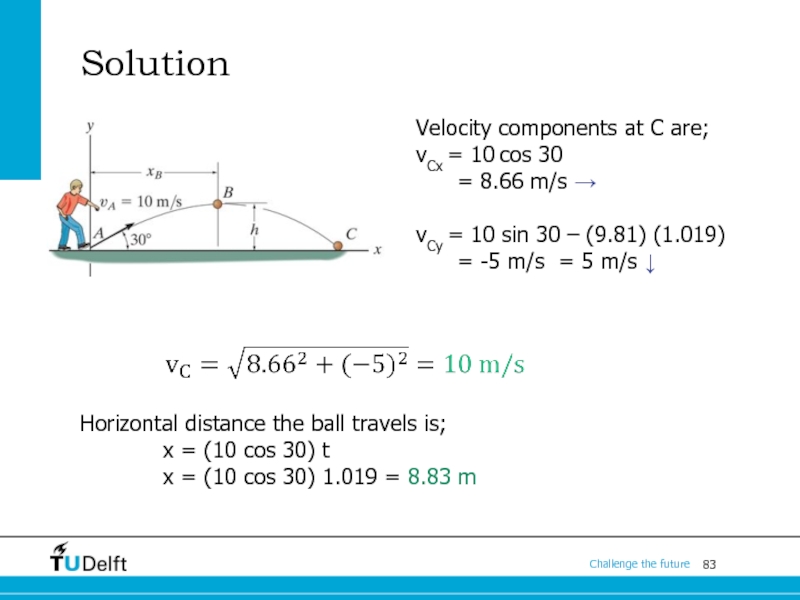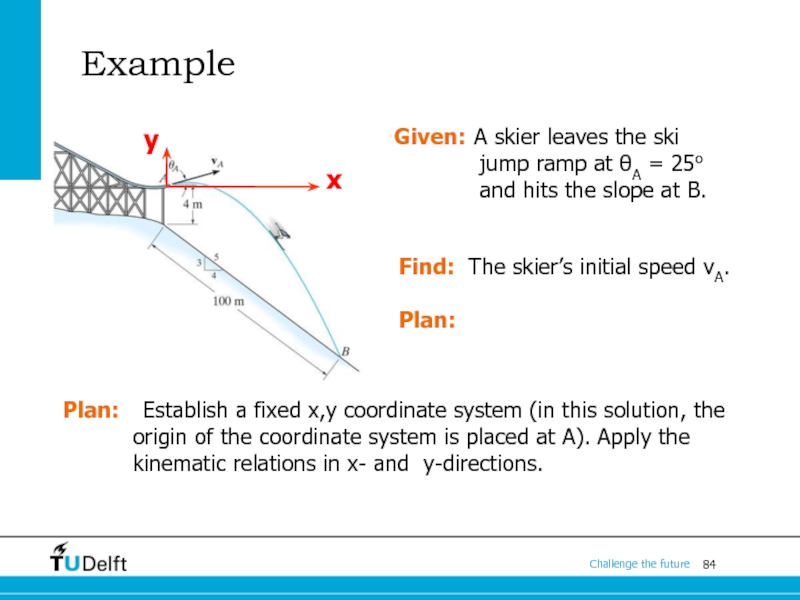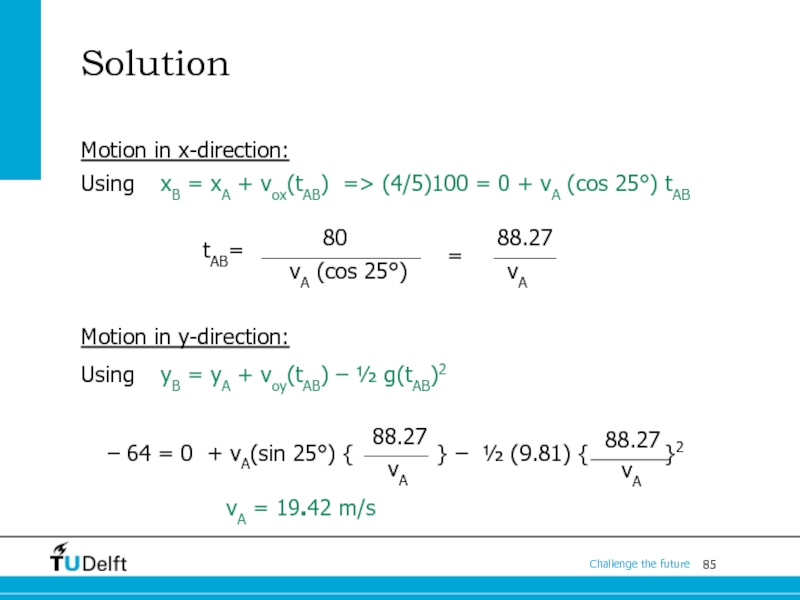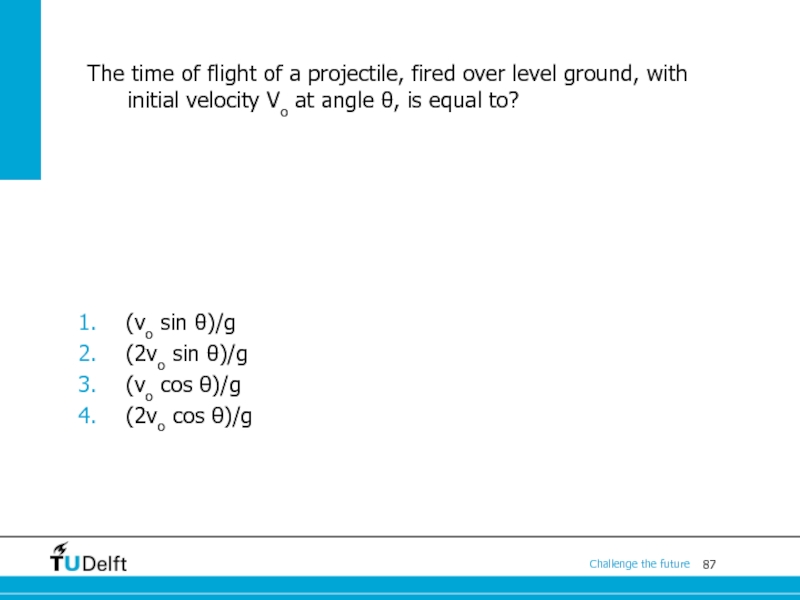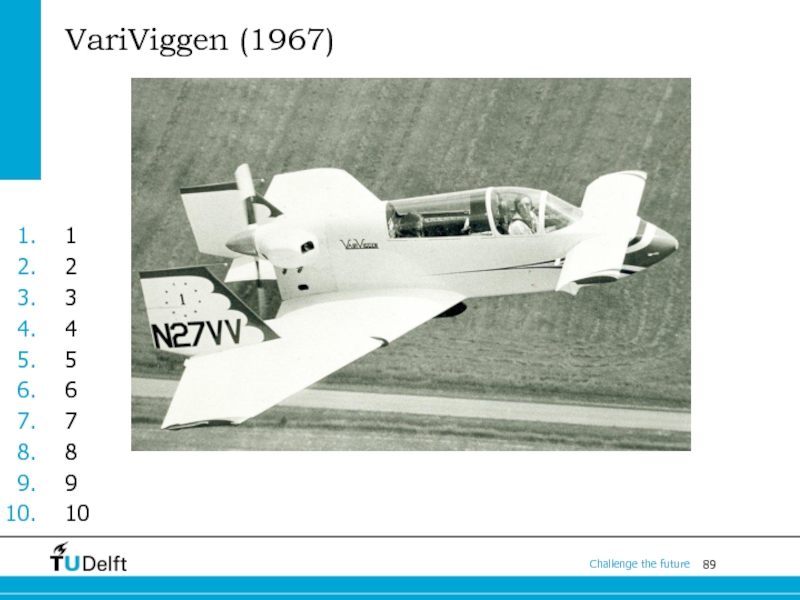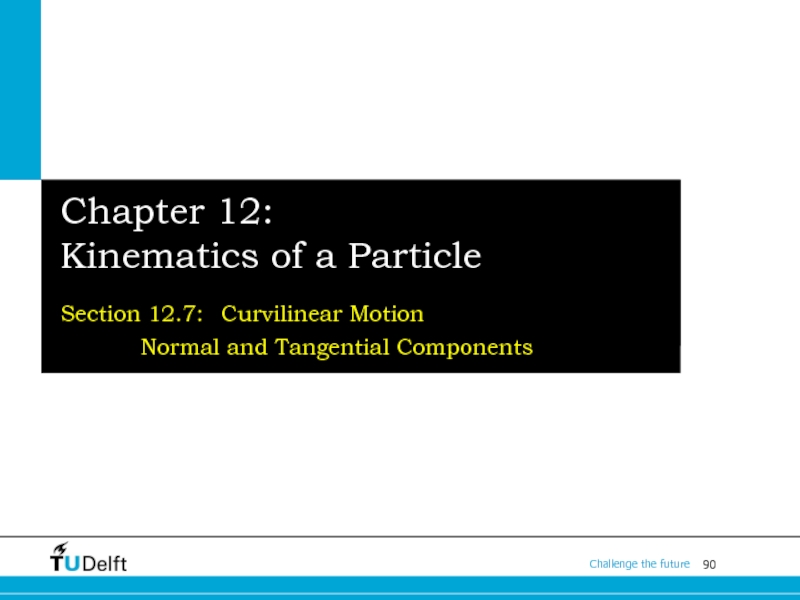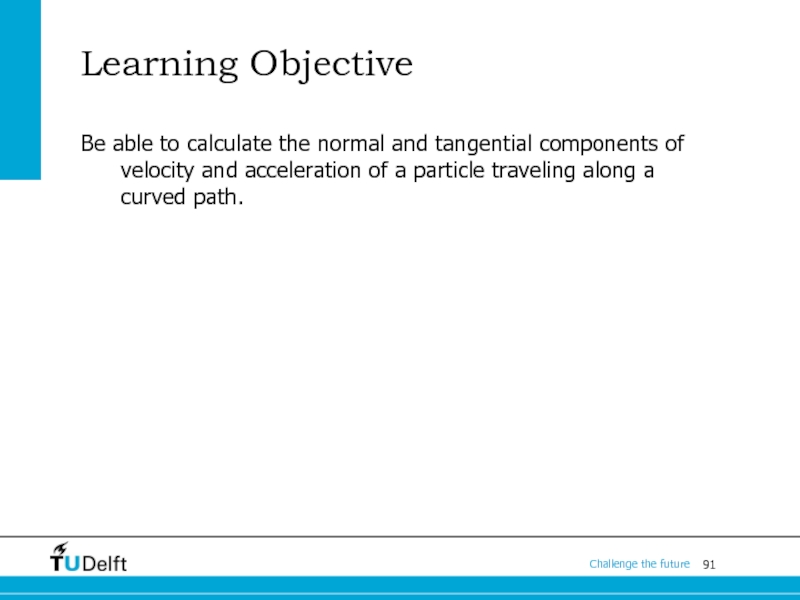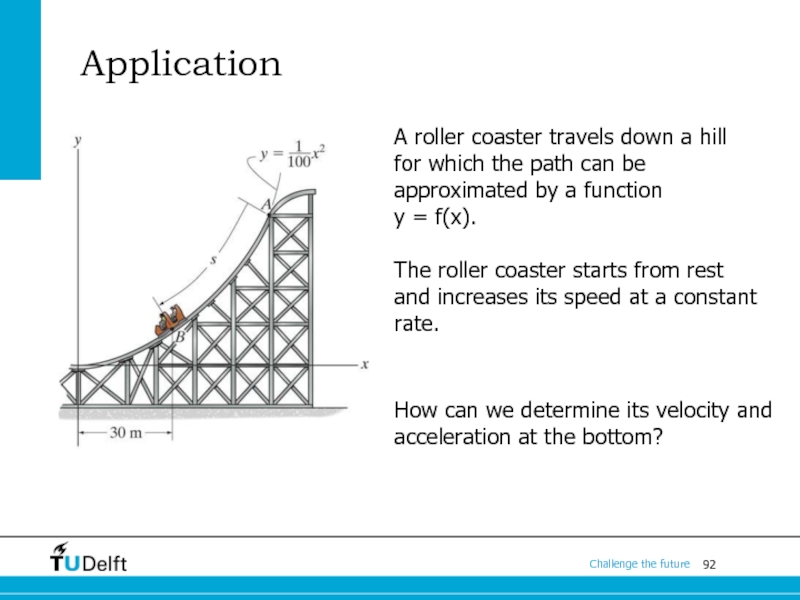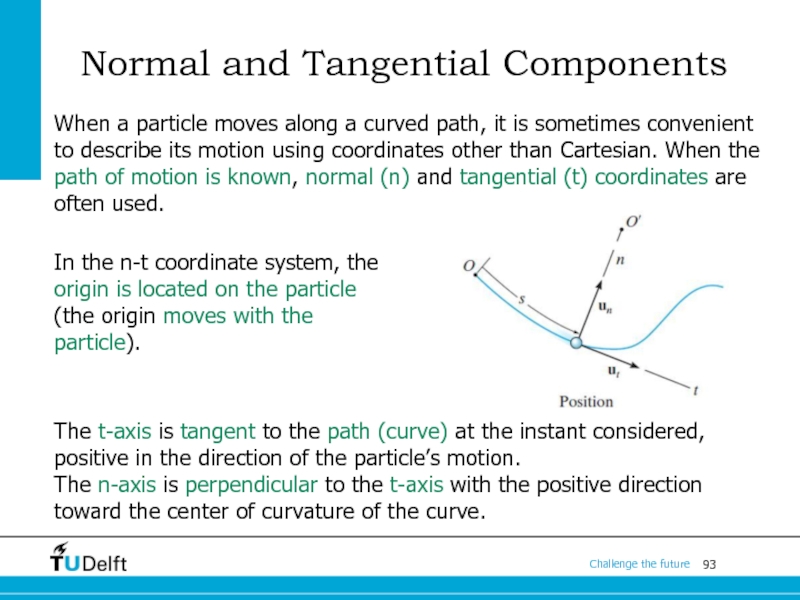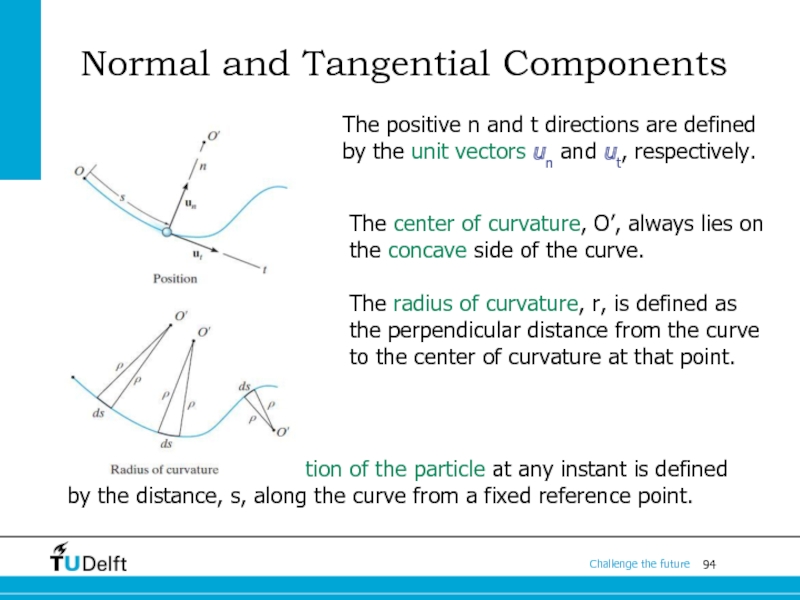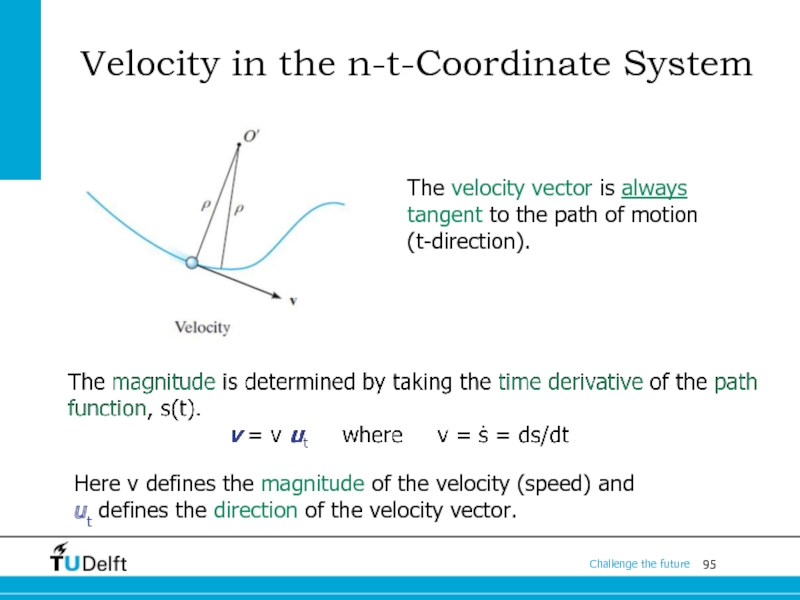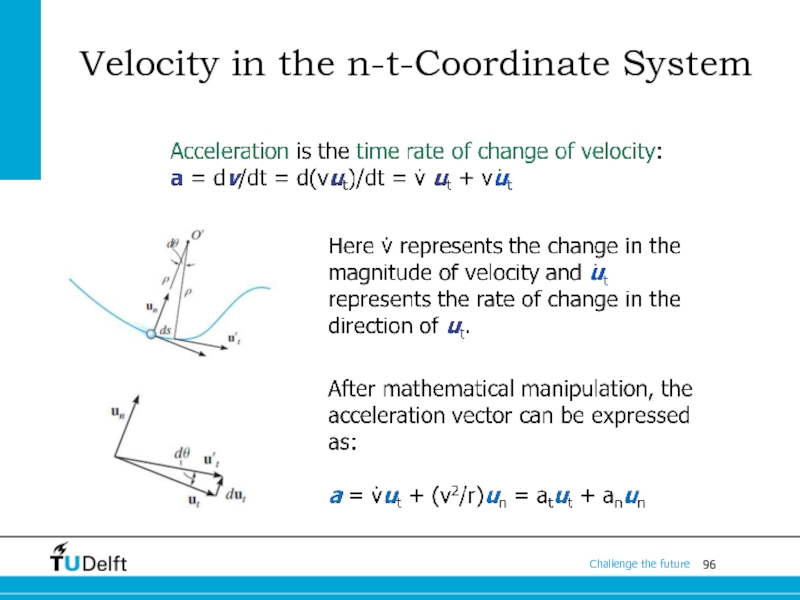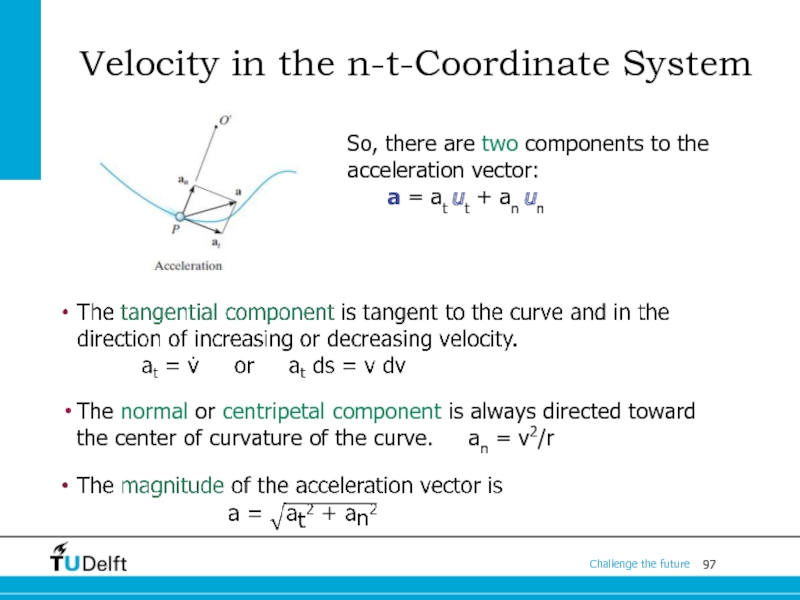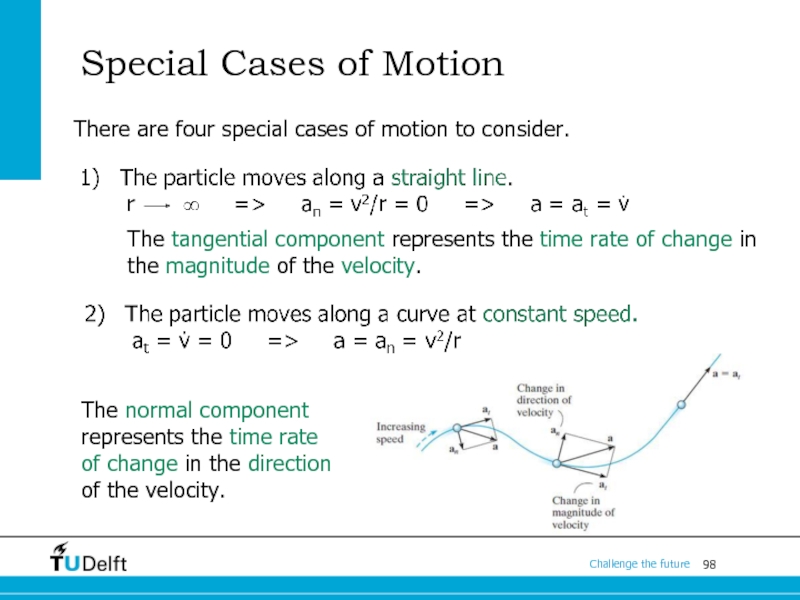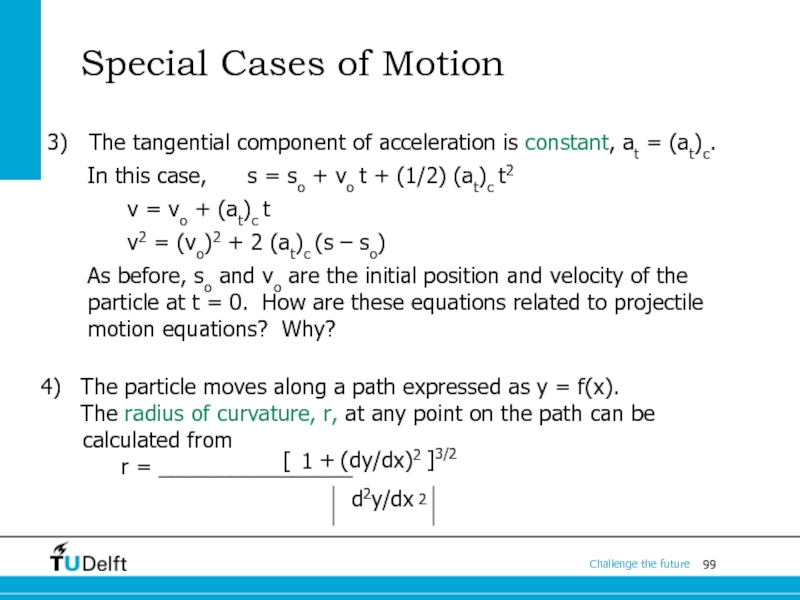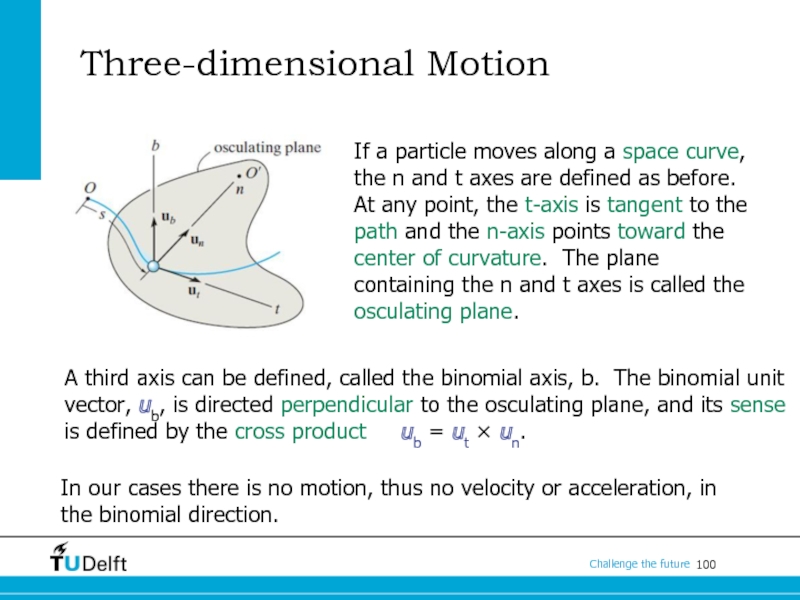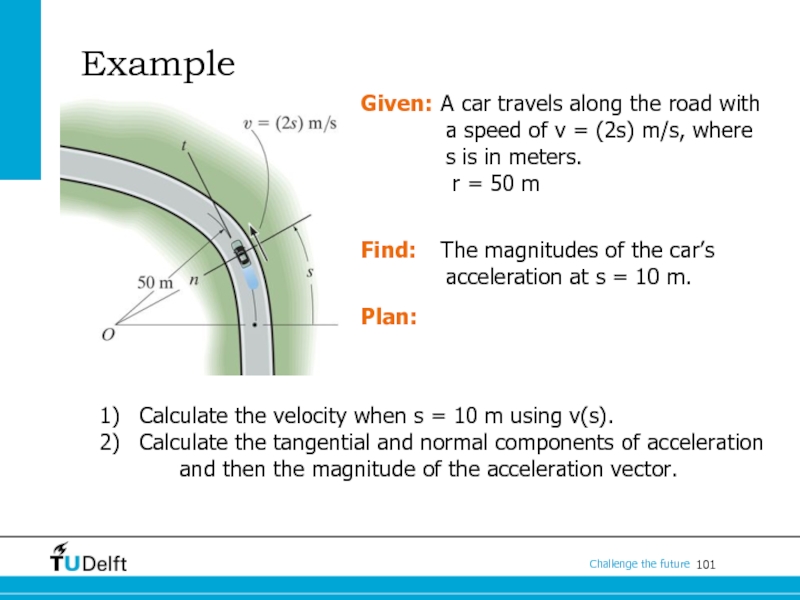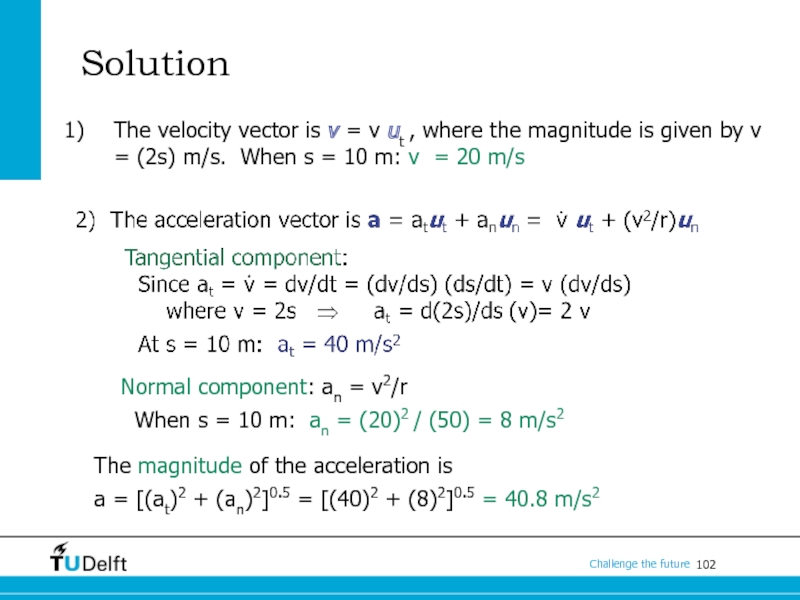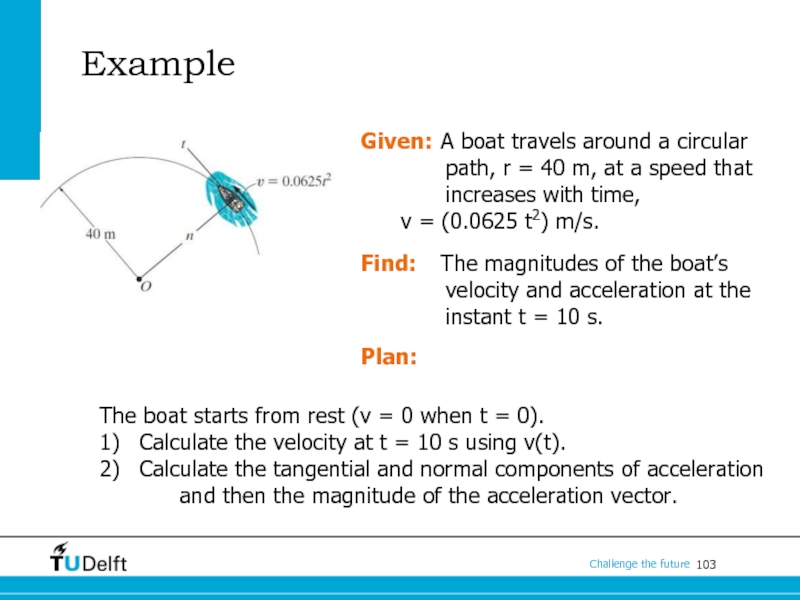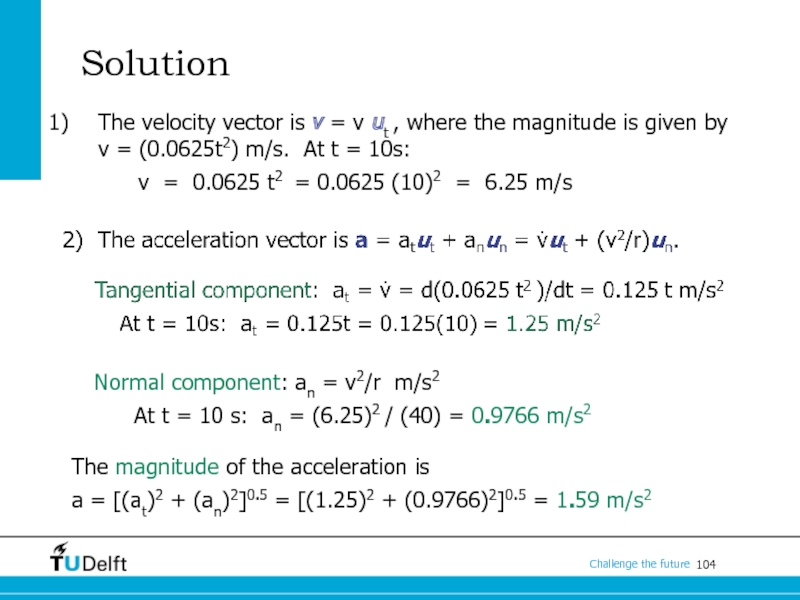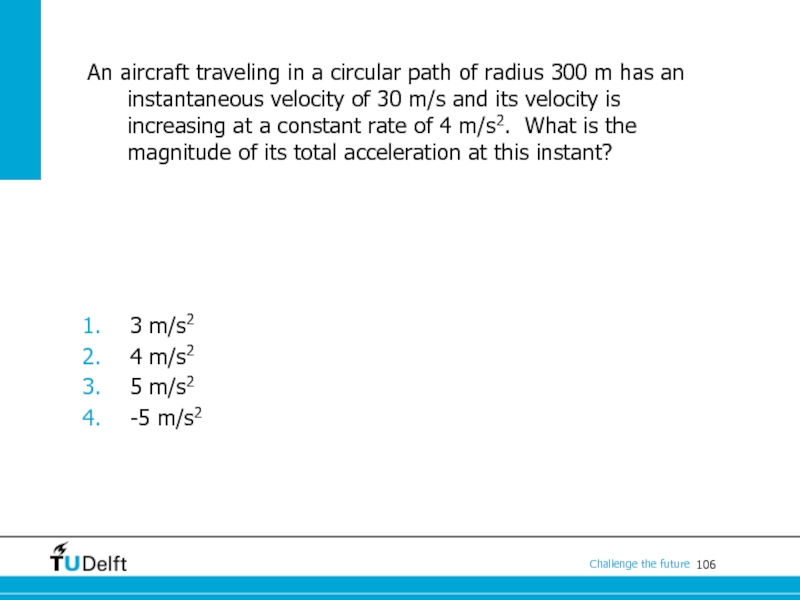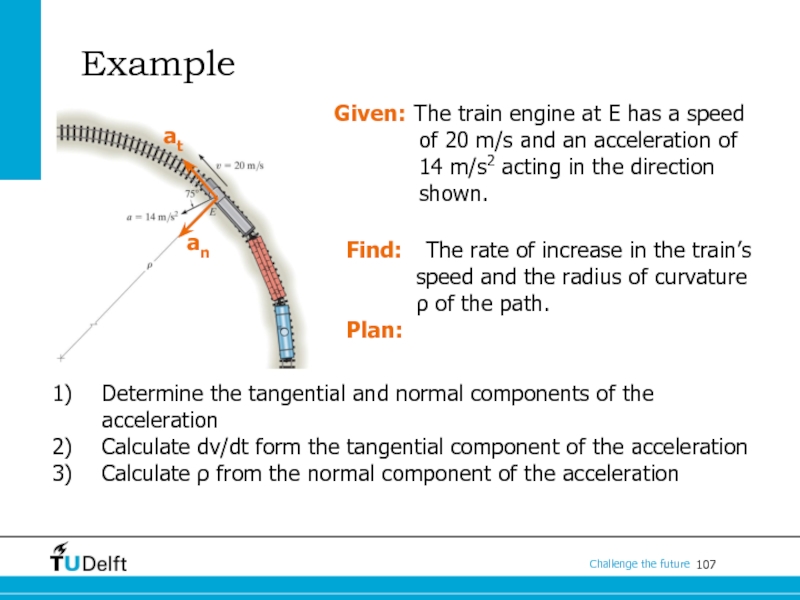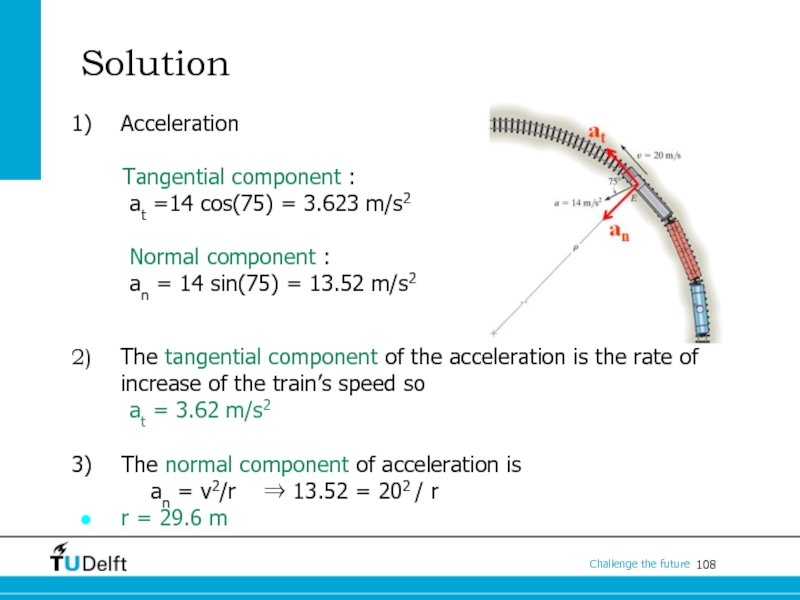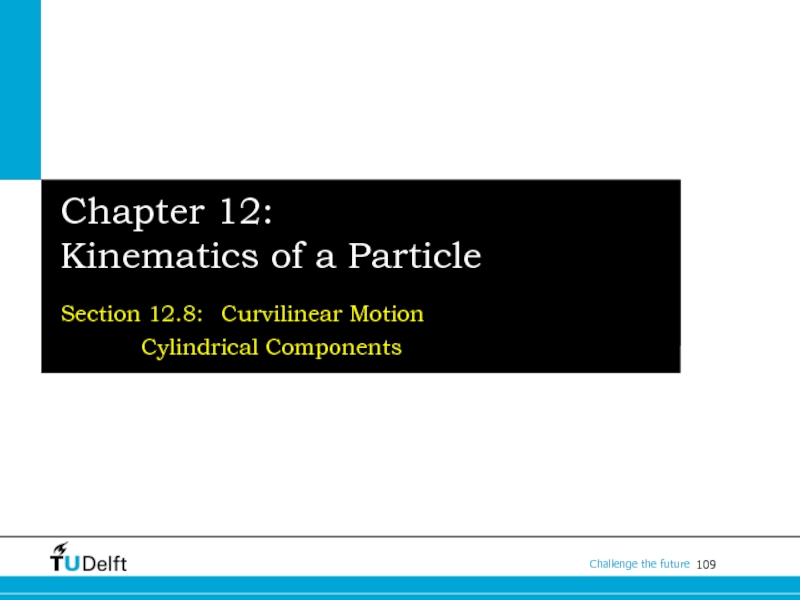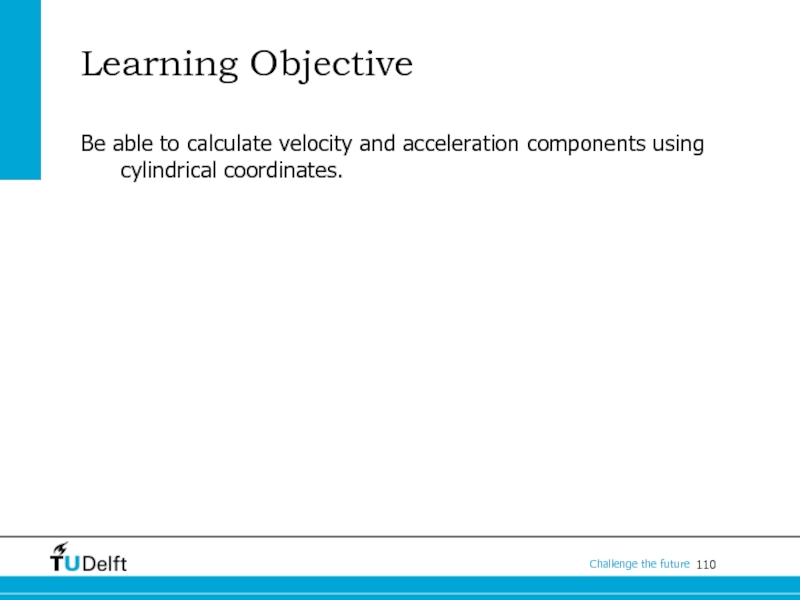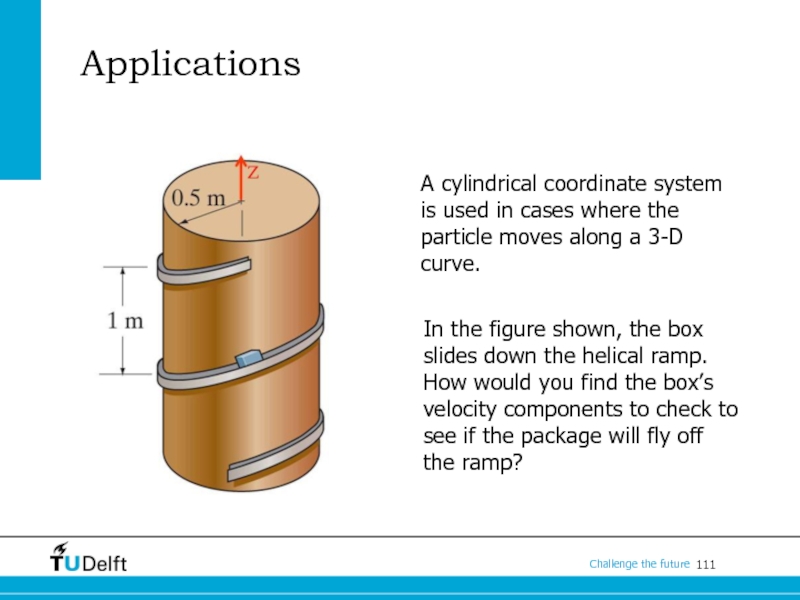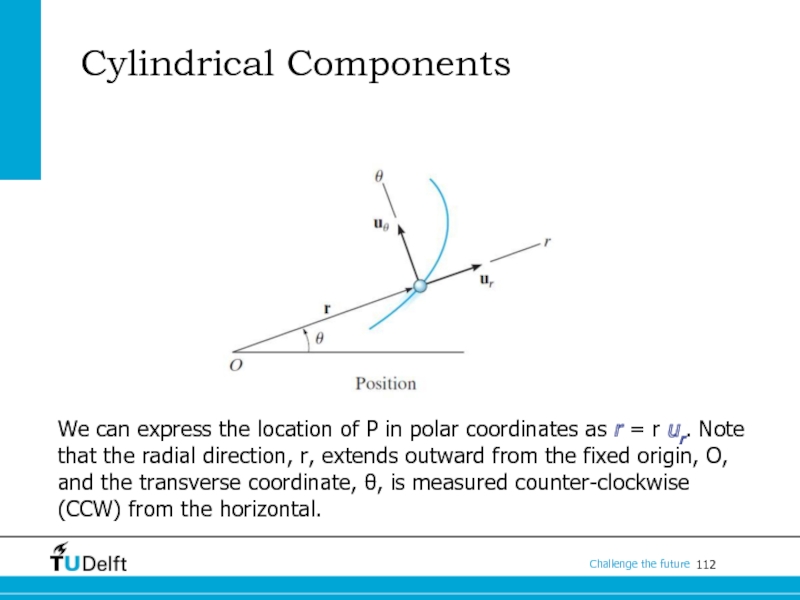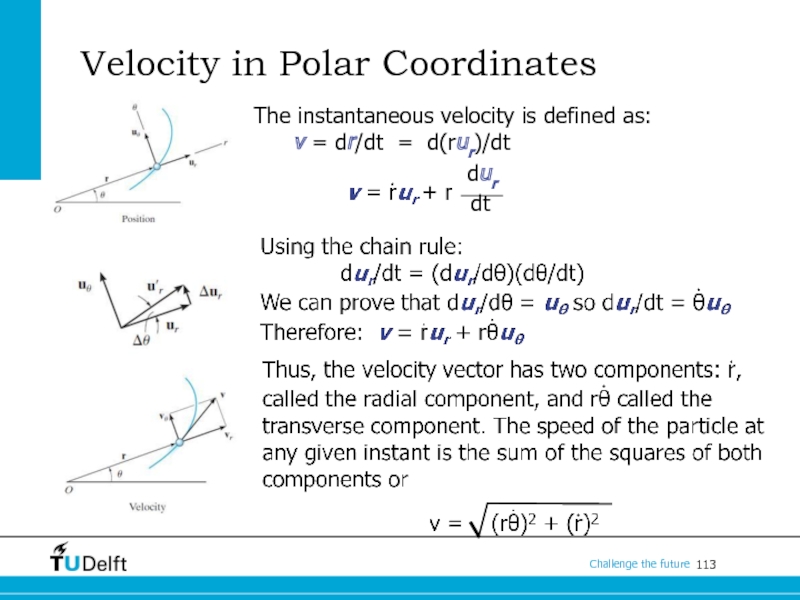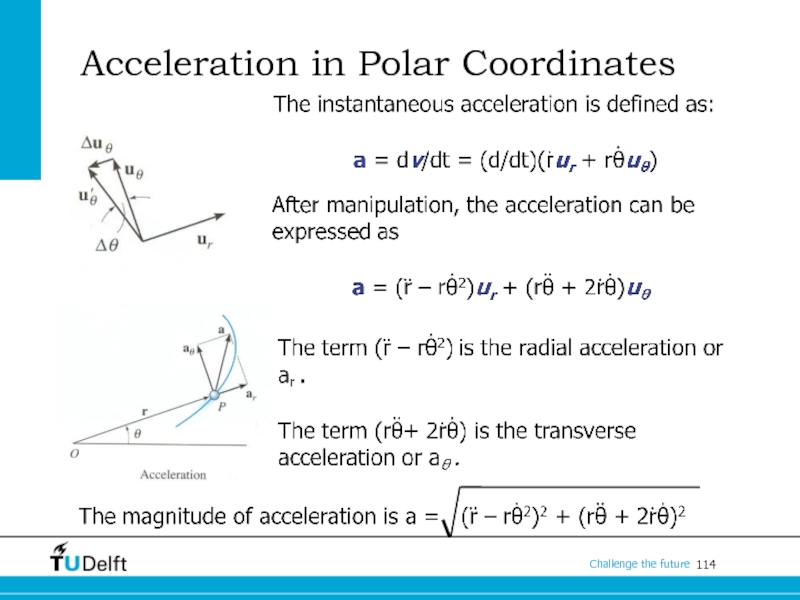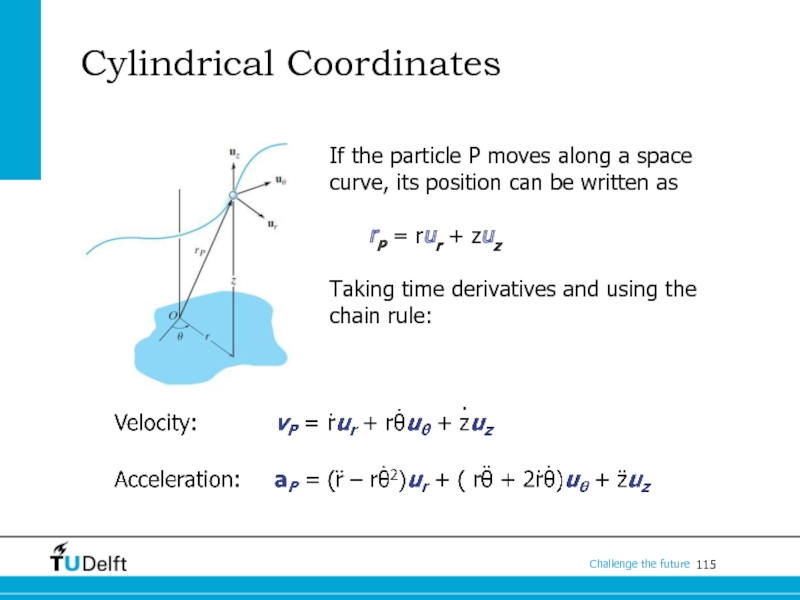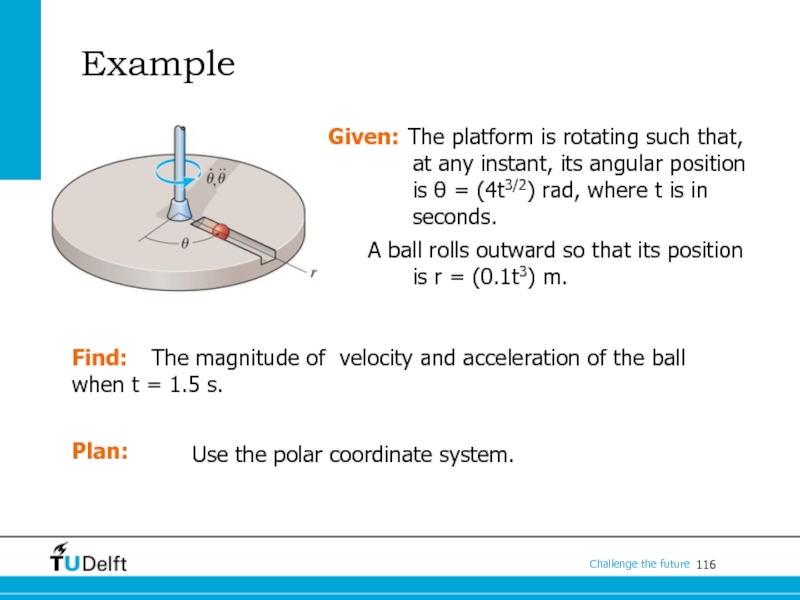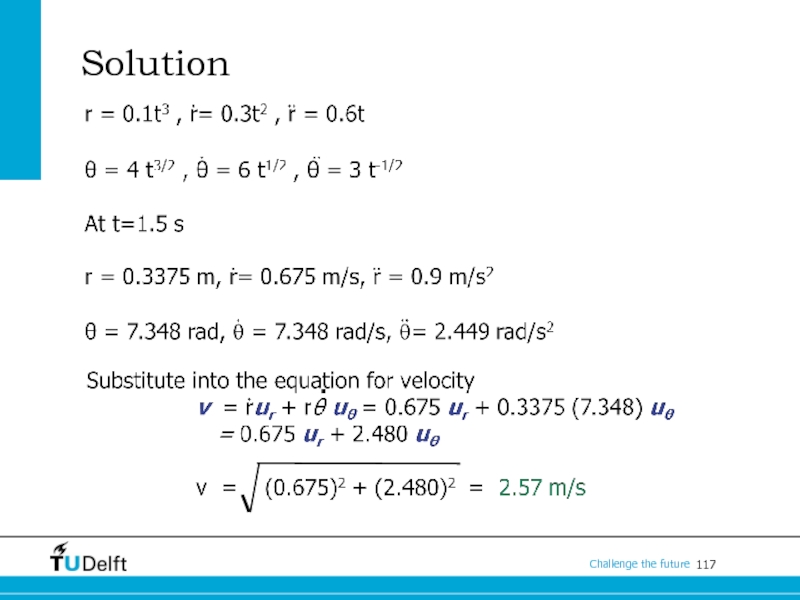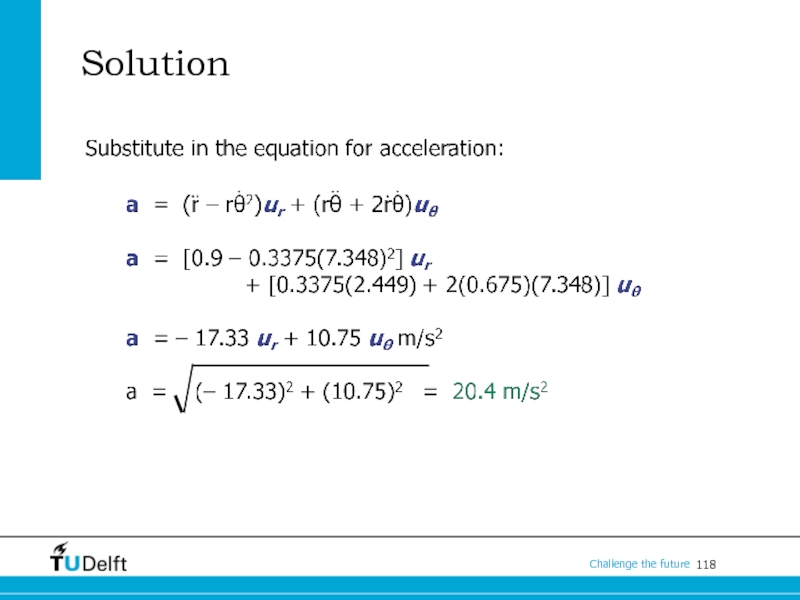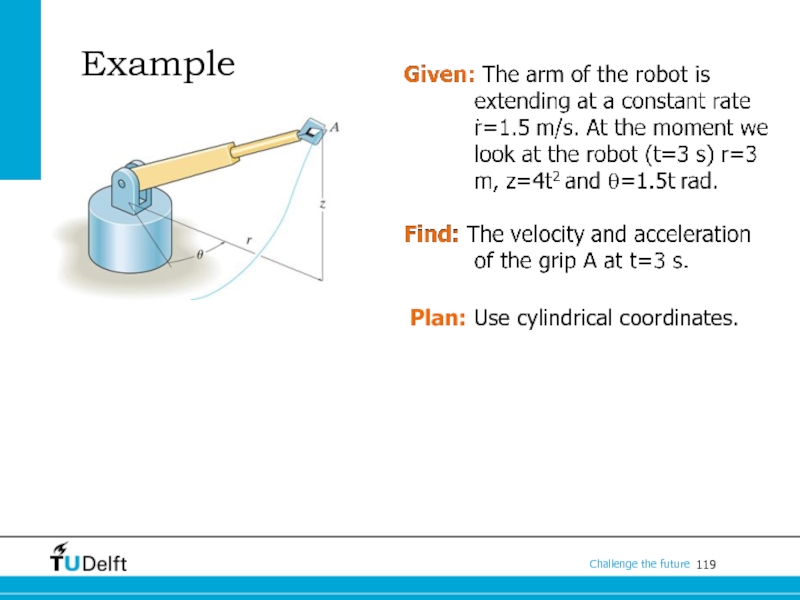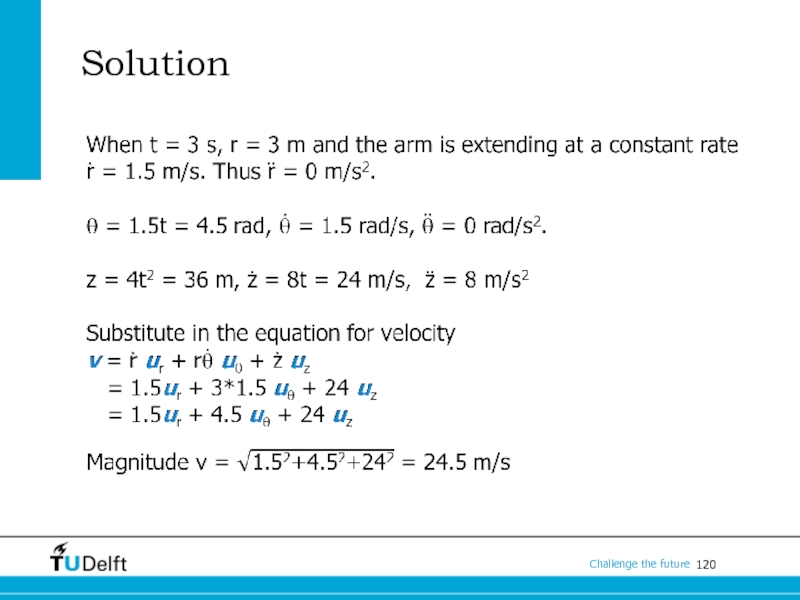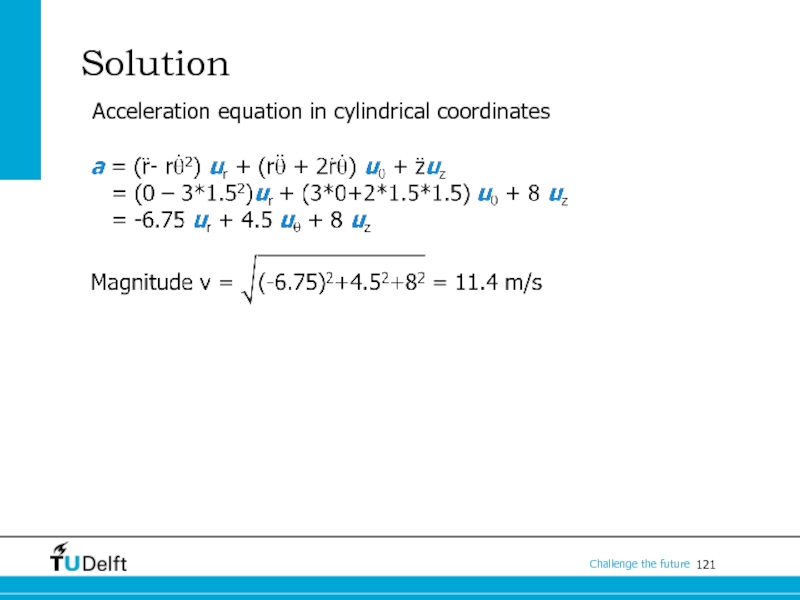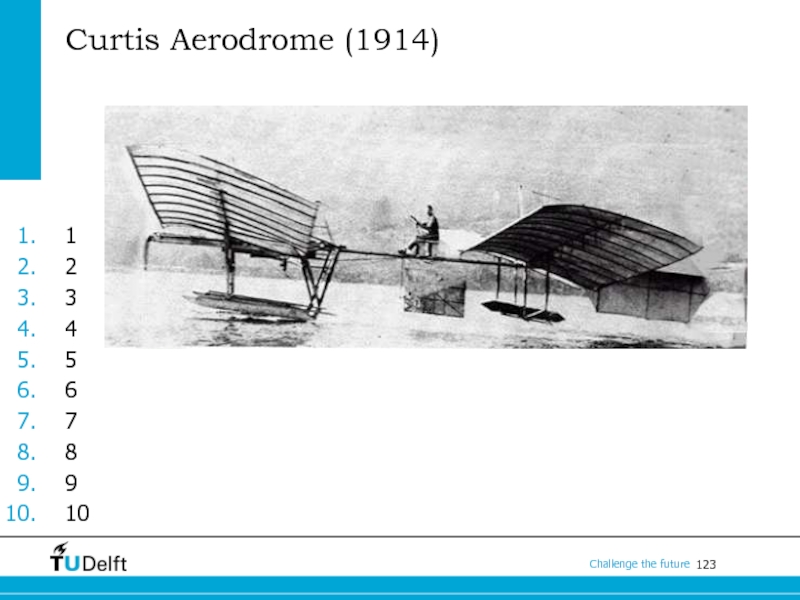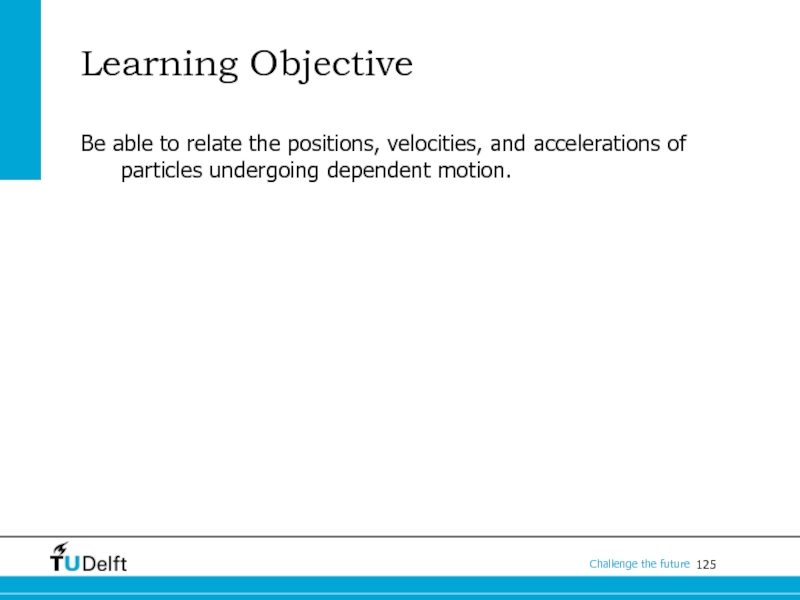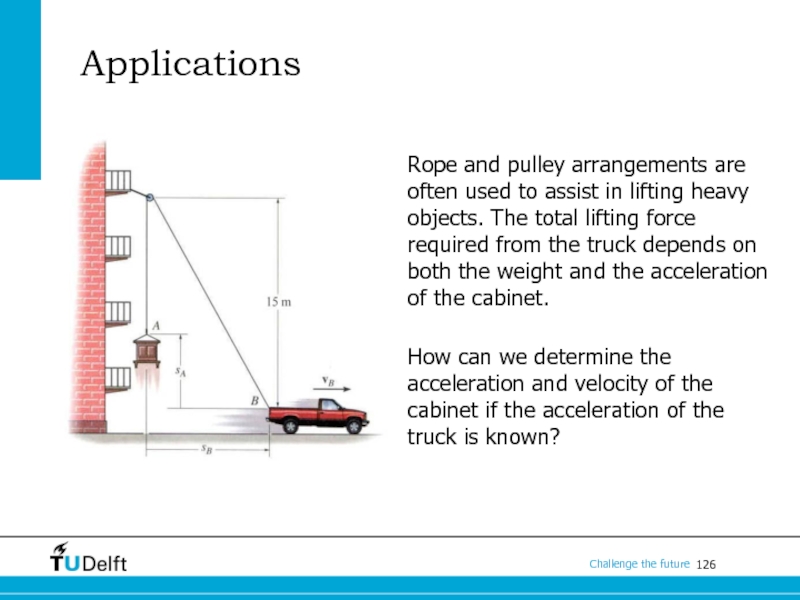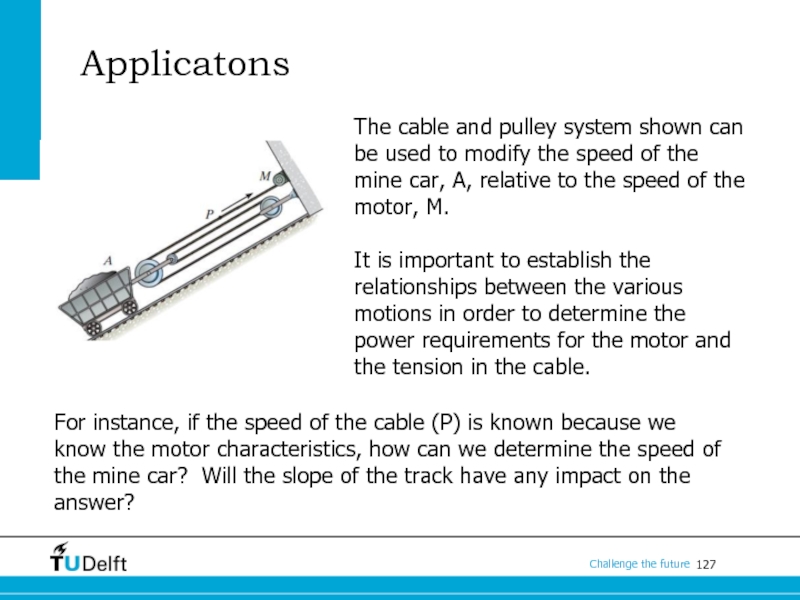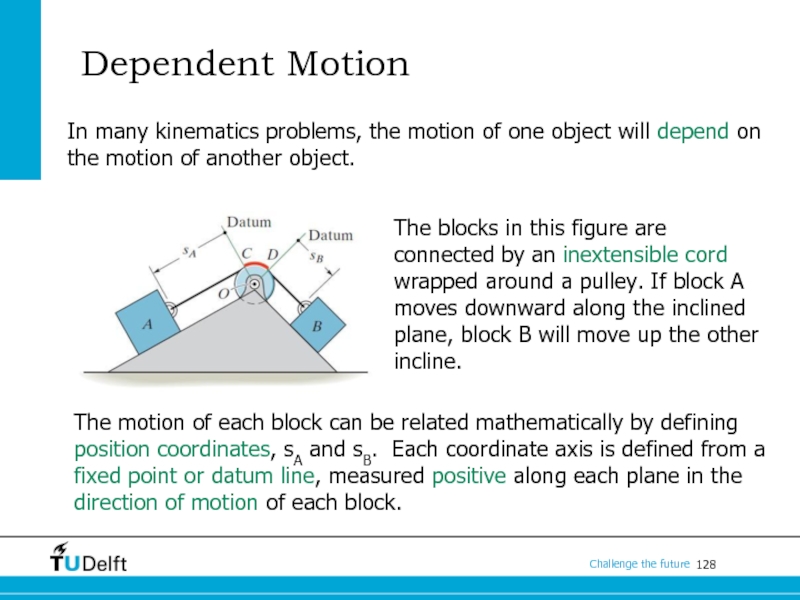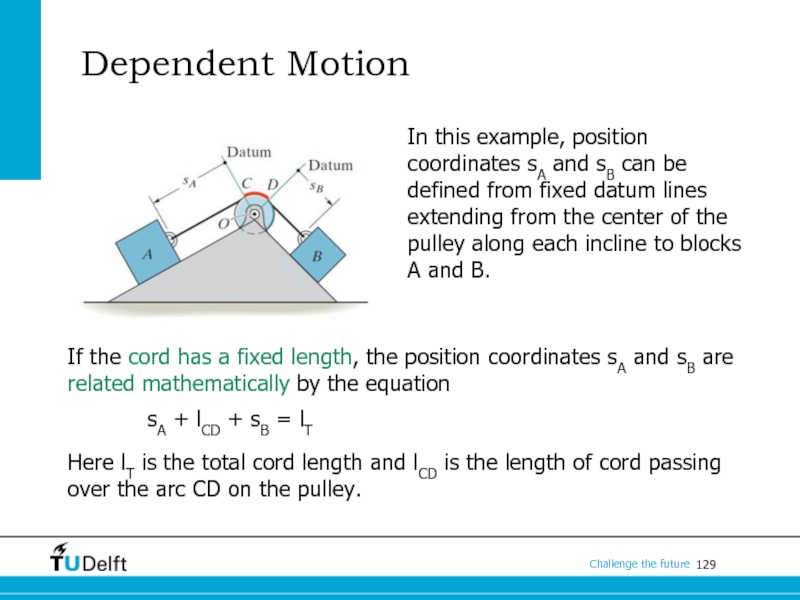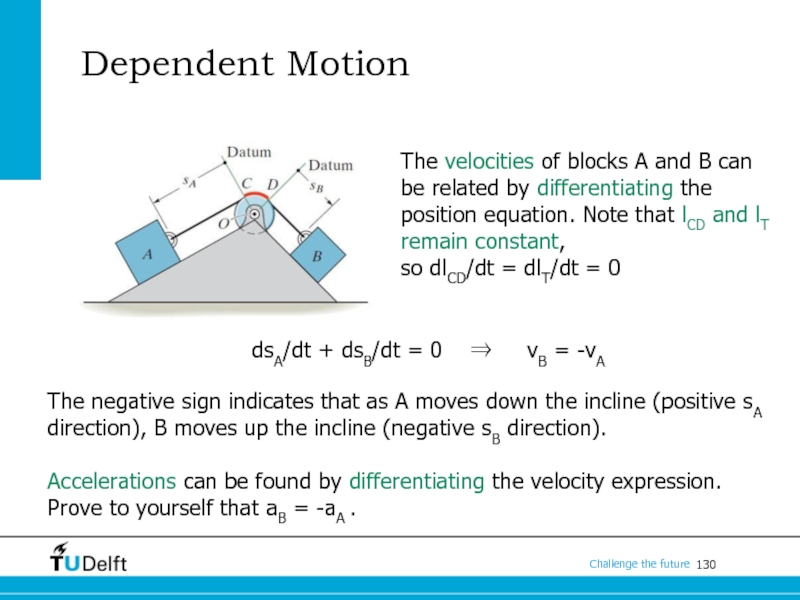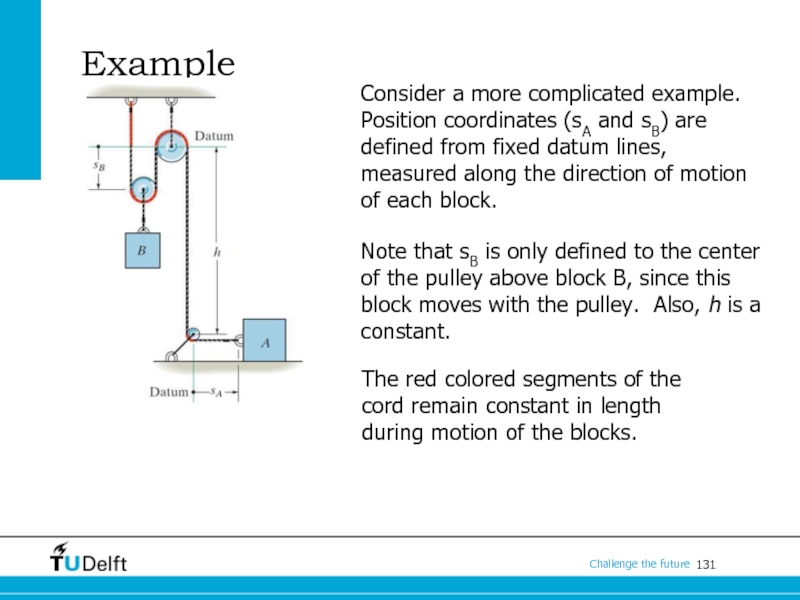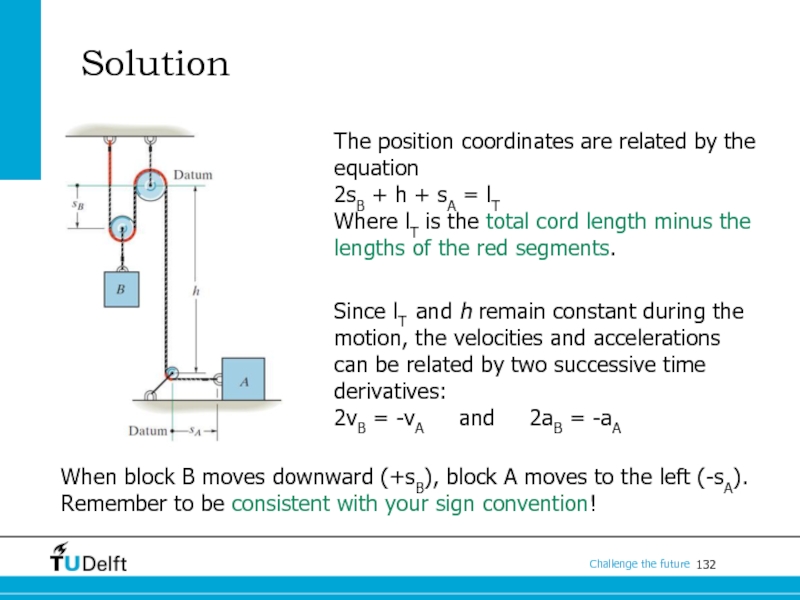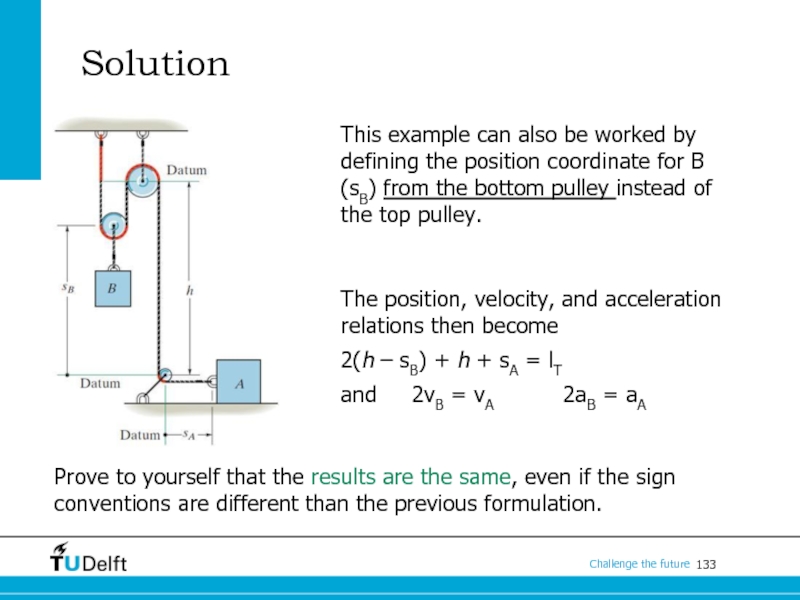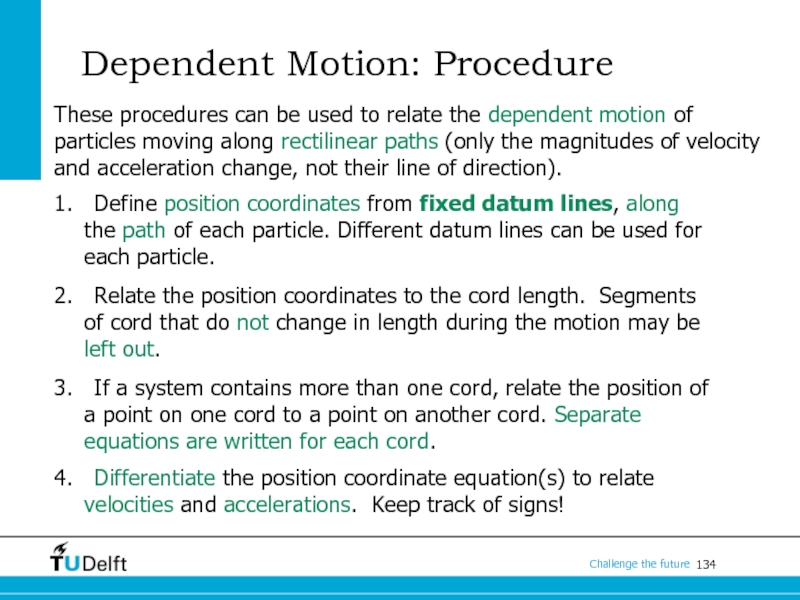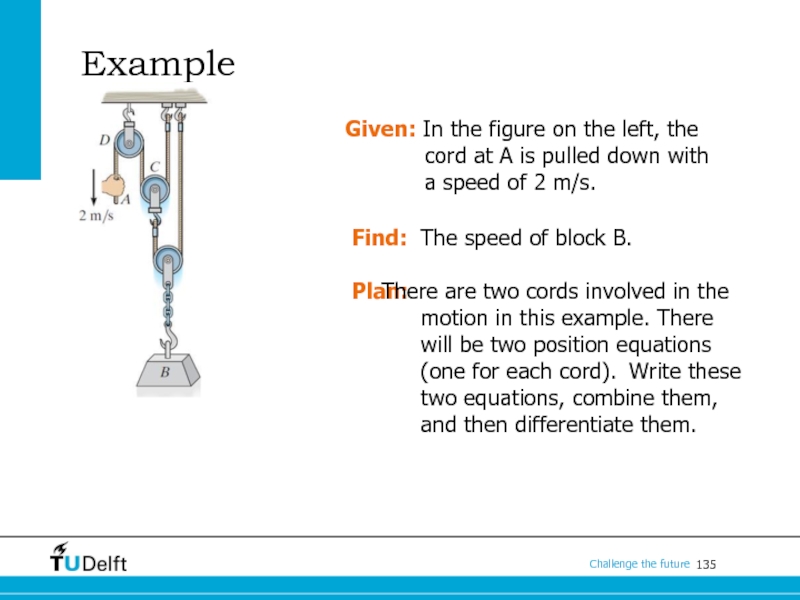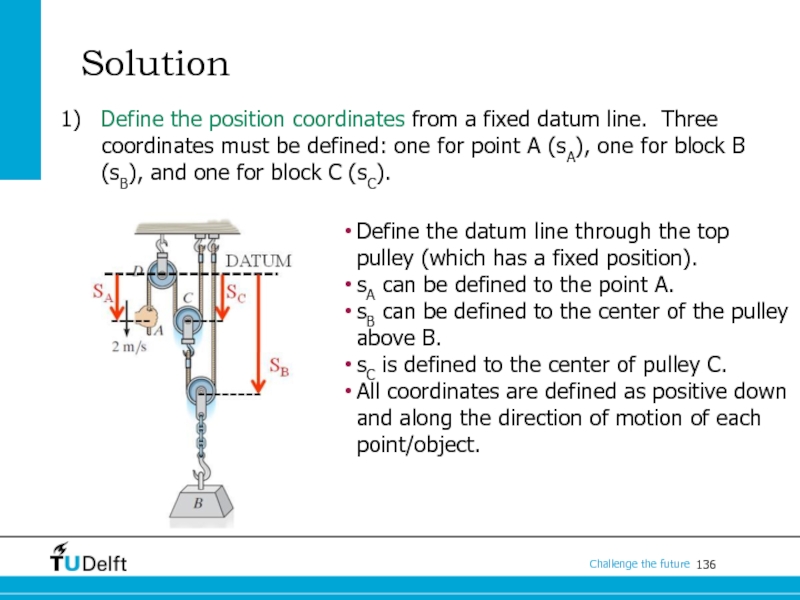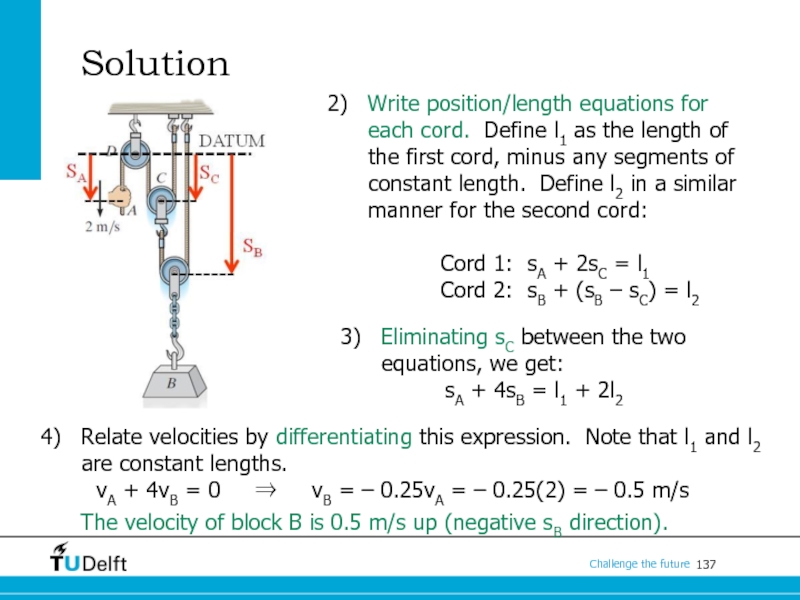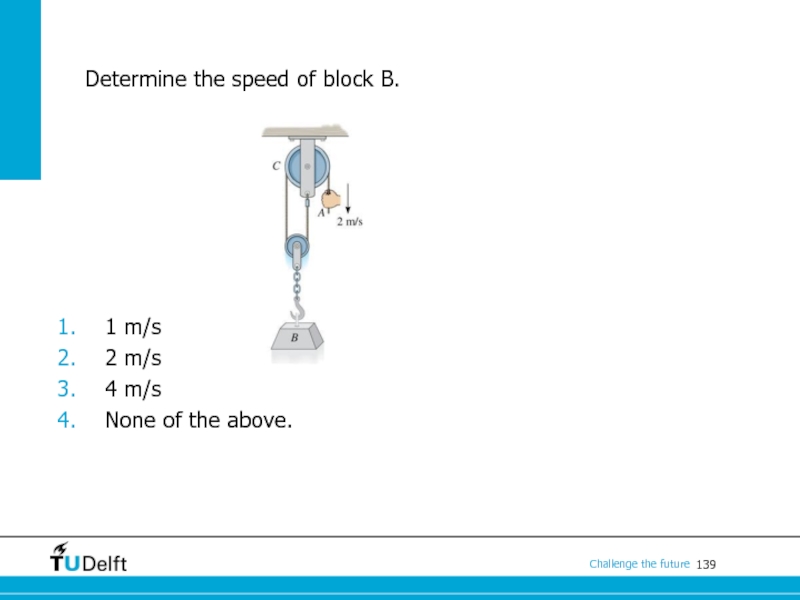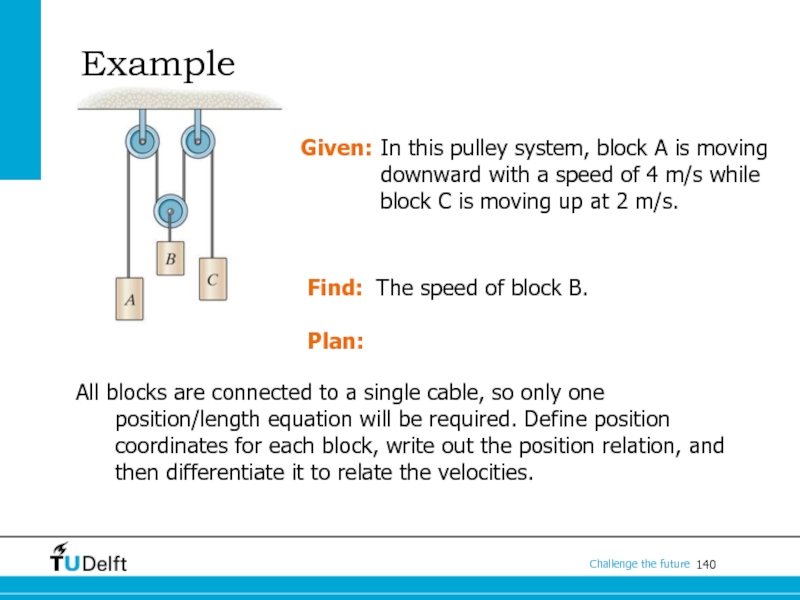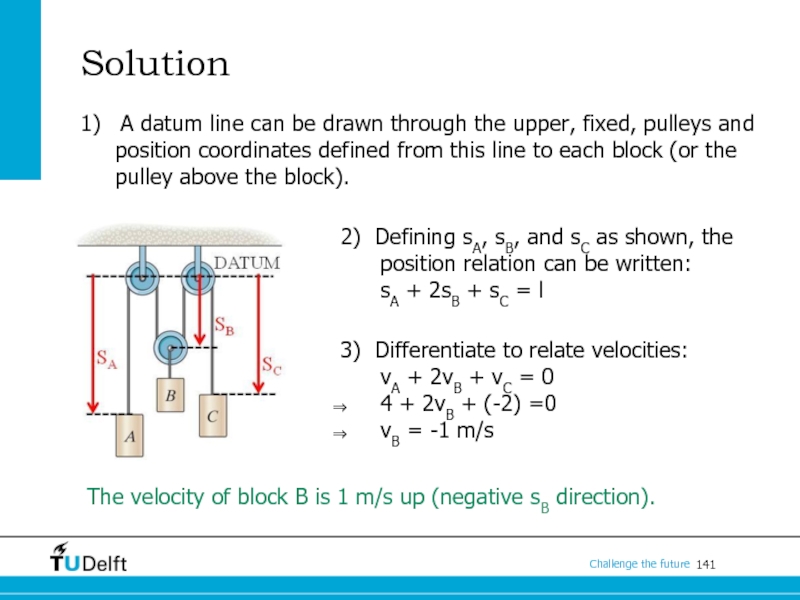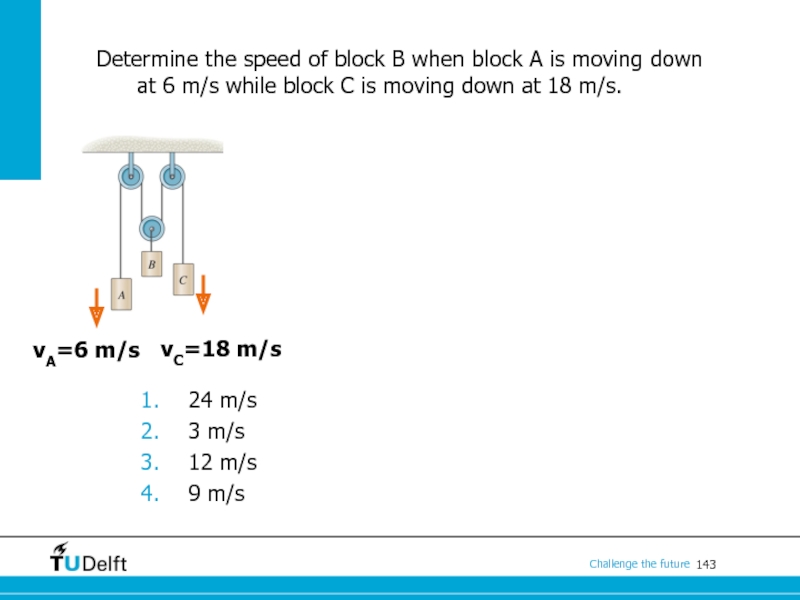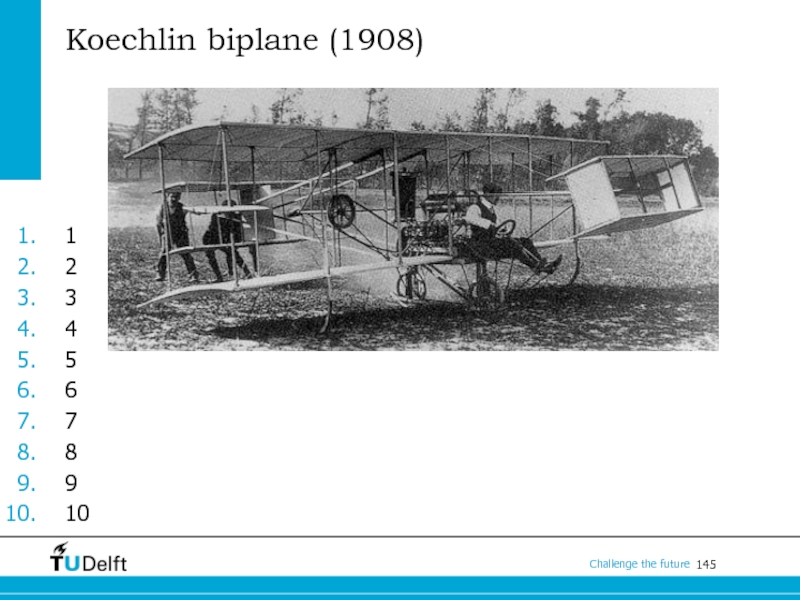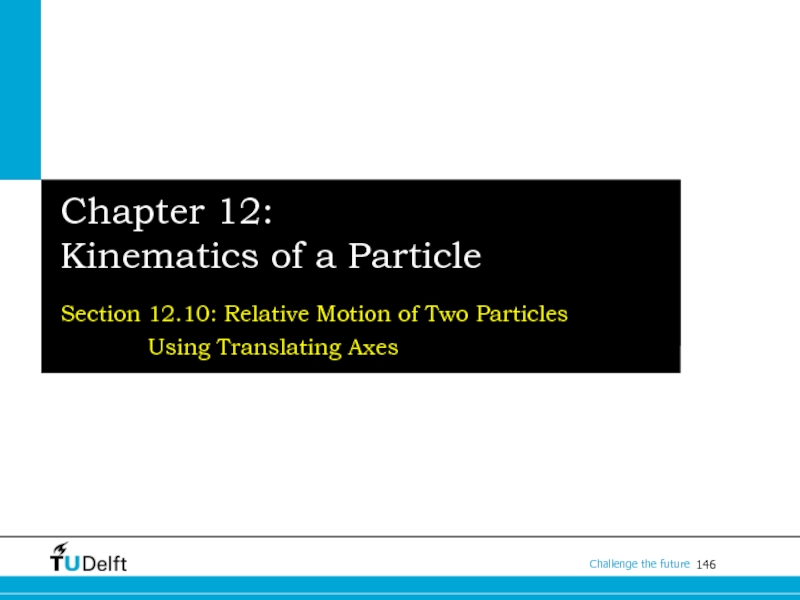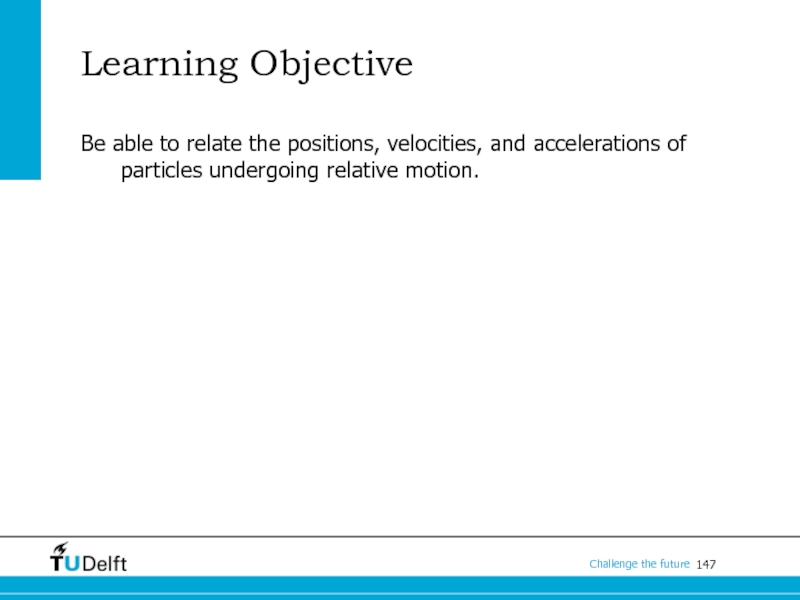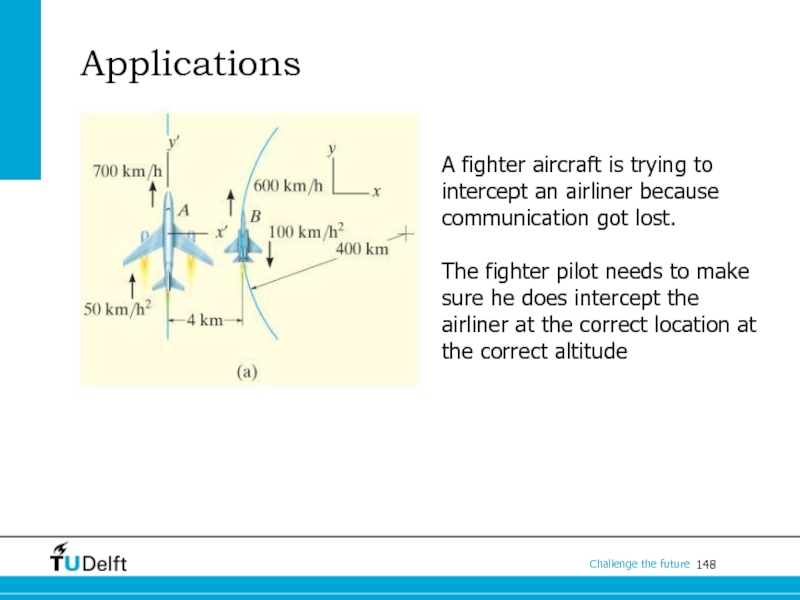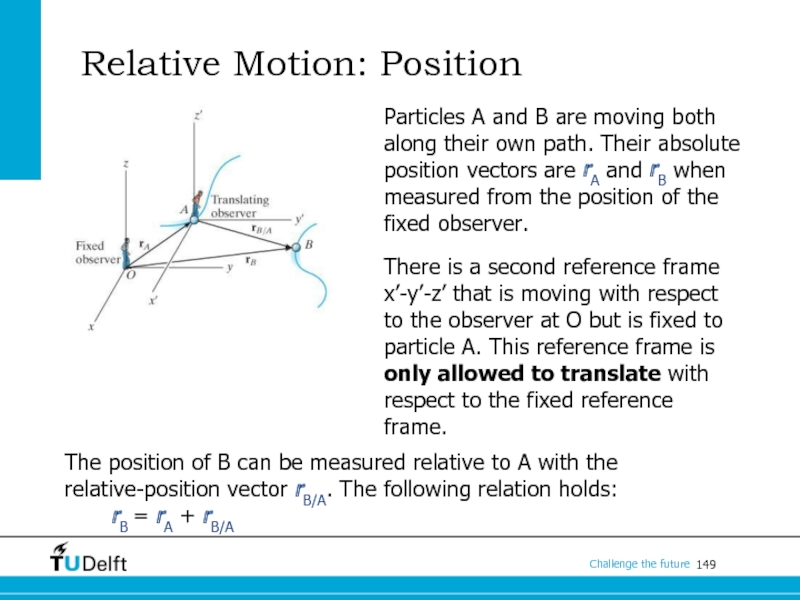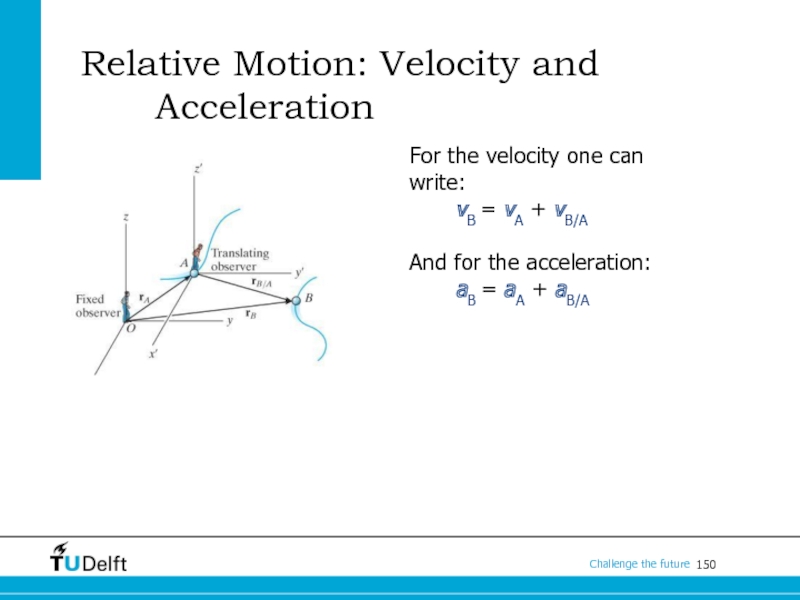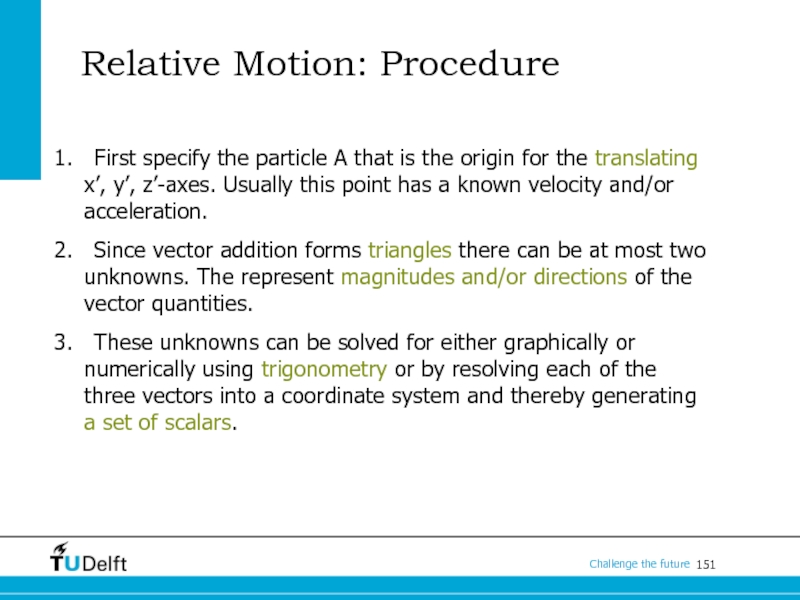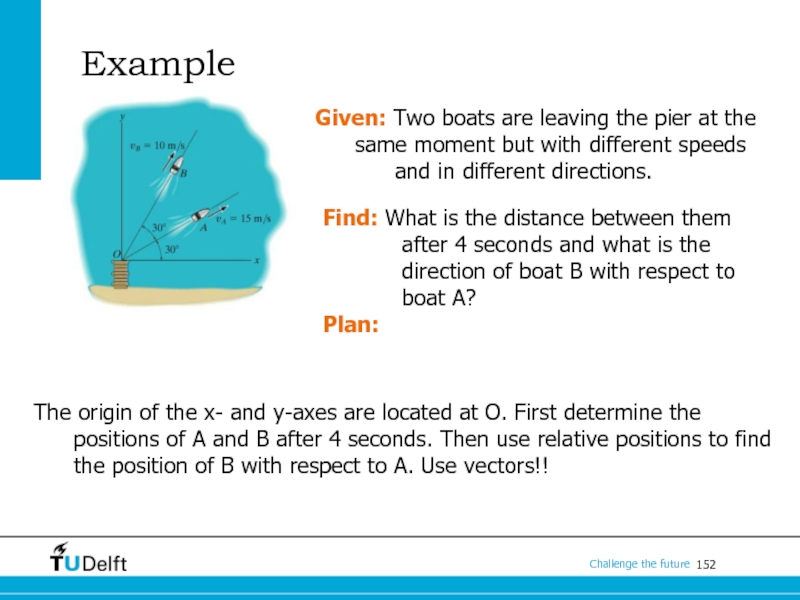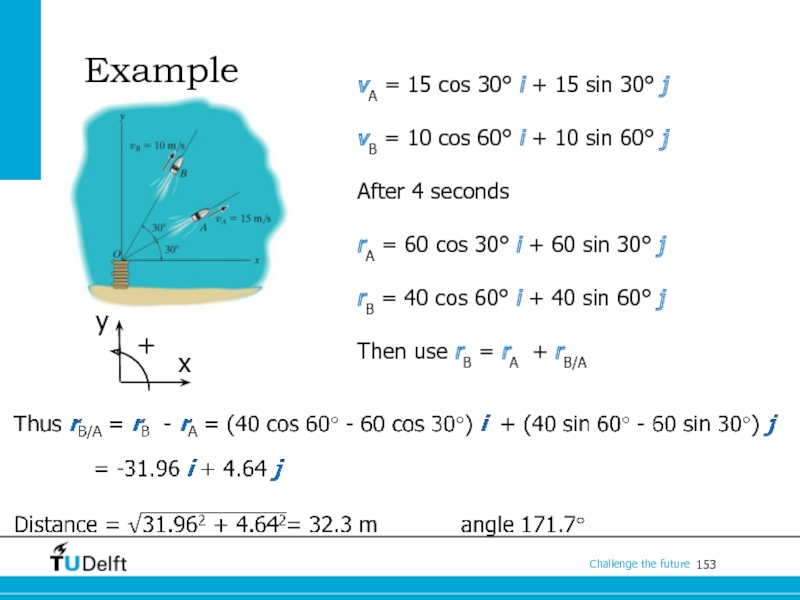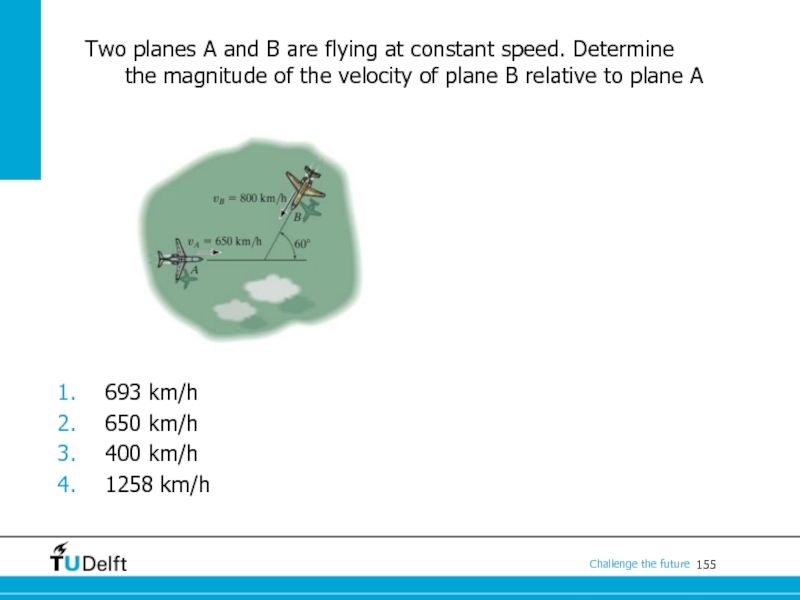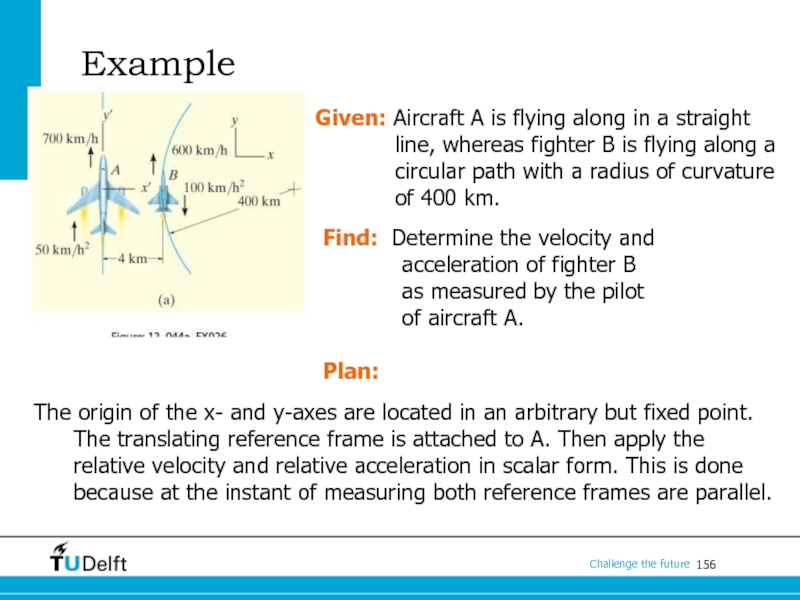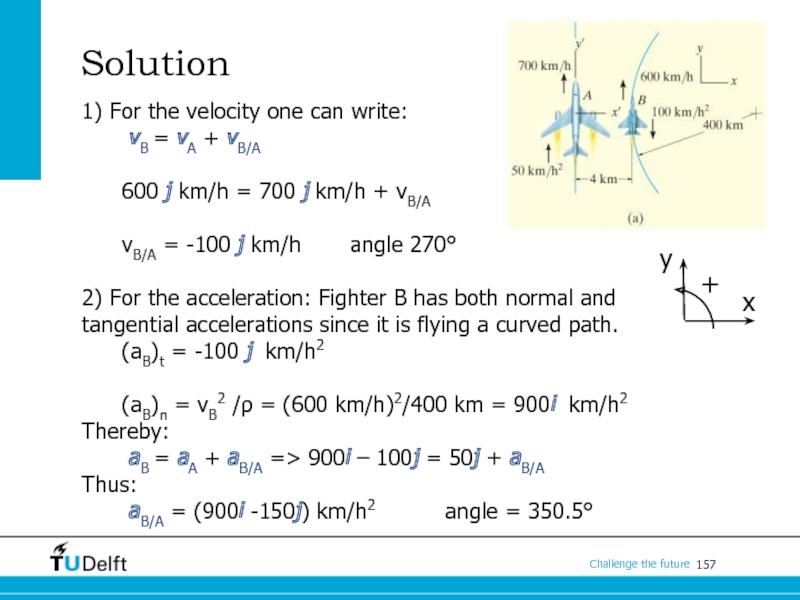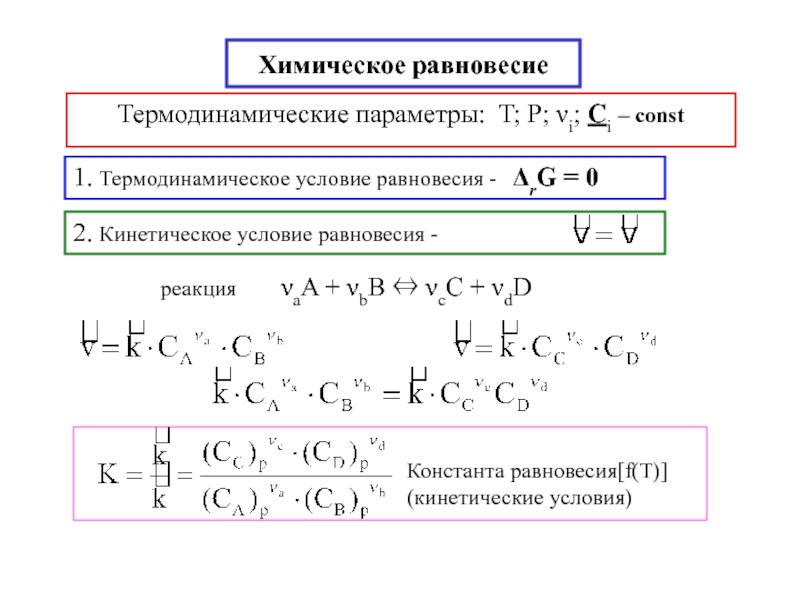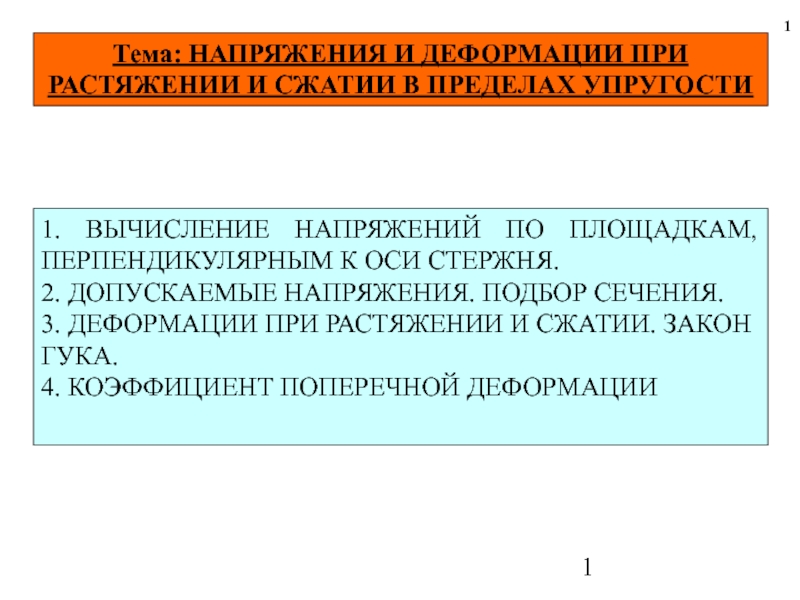- Главная
- Разное
- Дизайн
- Бизнес и предпринимательство
- Аналитика
- Образование
- Развлечения
- Красота и здоровье
- Финансы
- Государство
- Путешествия
- Спорт
- Недвижимость
- Армия
- Графика
- Культурология
- Еда и кулинария
- Лингвистика
- Английский язык
- Астрономия
- Алгебра
- Биология
- География
- Детские презентации
- Информатика
- История
- Литература
- Маркетинг
- Математика
- Медицина
- Менеджмент
- Музыка
- МХК
- Немецкий язык
- ОБЖ
- Обществознание
- Окружающий мир
- Педагогика
- Русский язык
- Технология
- Физика
- Философия
- Химия
- Шаблоны, картинки для презентаций
- Экология
- Экономика
- Юриспруденция
Kinematics of a particle. (Chapter 12) презентация
Содержание
- 1. Kinematics of a particle. (Chapter 12)
- 2. Learning objective Be able to find the
- 3. Applications The motion of large objects, such
- 4. Applications A sports car travels along a
- 5. An Overview of Mechanics
- 6. Chapter 12: Kinematics of a
- 7. Continuous Motion A particle travels along
- 8. Velocity Velocity is a measure of the
- 9. Acceleration Acceleration is the rate of change
- 10. Summary of Kinematic Relations • Differentiate position
- 11. Constant Acceleration The three kinematic equations can
- 12. Example Plan: Establish the positive coordinate, s, in
- 13. Solution 1) Take a derivative of the
- 14. Channel Setting Instructions for ResponseCard RF
- 15. Quiz
- 16. A particle moves along a horizontal path
- 17. A particle has an initial velocity of
- 18. Example Given: A particle is moving along
- 19. Solution
- 20. Solution 2) Take a derivative of distance to calculate the velocity and acceleration.
- 21. Quiz
- 22. A particle has an initial velocity of
- 23. A particle is moving with an initial
- 24. Ugly aircraft competition
- 25. Scale of Ugliness 1 = most beautiful
- 26. Focke Wulf 19a Ente (1927) 1 2 3 4 5 6 7 8 9 10
- 27. Chapter 12: Kinematics of a
- 28. Learning Objective Be able to calculate position,
- 29. Erratic Motion The approach builds on the
- 30. s-t-graph
- 31. v-t-graph Also, the distance moved (displacement) of
- 32. a-t-graph
- 33. a-s-graph
- 34. v-s-graph Another complex case is presented by
- 35. Example What is your plan of attack for the problem?
- 36. Solution The v-t graph can be constructed
- 37. Solution Similarly, the a-t graph can be
- 38. Quiz
- 39. If a particle starts from rest and
- 40. The particle in the previous stops moving
- 41. Example Given: The v-t graph shown.
- 42. Example Given: The v-t graph shown.
- 43. Solution Find the a–t graph: For 0
- 44. Solution Now find the distance traveled: Δs0-30
- 45. Example Given: The v-t graph shown.
- 46. Solution Find the a–t graph: For 0
- 47. Solution Now find the distance traveled: Δs0-30
- 48. Example Given: An aircraft is accelerating whilst taxiing.
- 49. Solution
- 50. Quiz
- 51. If a car has the velocity curve
- 52. Select the correct a-t graph for the
- 53. Ugly aircraft competition
- 54. Miles M.35 Libellula (1942) 1 2 3 4 5 6 7 8 9 10
- 55. Chapter 12: Kinematics of a Particle Section 12.4: General Curvilinear Motion
- 56. Learning Objective Be able to describe the
- 57. Applications The path of motion of a
- 58. Applications A roller coaster car travels down a fixed, helical path at a constant speed.
- 59. General Curvilinear Motion A particle moving along
- 60. Velocity Velocity represents the rate of change
- 61. Acceleration Acceleration represents the rate of change
- 62. Chapter 12: Kinematics of a Particle Section 12.5: Curvilinear Motion Rectangular Components
- 63. Learning Objective Be able to relate kinematic
- 64. Rectangular Components It is often convenient to
- 65. Rectangular Components: Velocity
- 66. Rectangular Components: Acceleration The direction of a
- 67. Example Given:The box slides down the slope
- 68. Solution
- 69. Solution
- 70. Quiz
- 71. If the position of a particle is
- 72. The position of a particle is given
- 73. Ugly aircraft competition
- 74. Kyushu J7W-1 Shinden (1945) 1 2 3 4 5 6 7 8 9 10
- 75. Chapter 12: Kinematics of a Particle Section 12.6: Motion of a Projectile
- 76. Learning Objective Be able to analyze the free-flight motion of a projectile.
- 77. Applications A firefighter needs to know the
- 78. Motion of a Projectile Projectile motion can
- 79. Motion of a Projectile
- 80. Kinematic Equations: Horizontal Motion Since ax =
- 81. Kinematic Equations: Vertical Motion Since the positive
- 82. Example Given: vA and θ Find: Horizontal distance
- 83. Solution Horizontal distance the ball travels is;
- 84. Example Plan: Establish a fixed x,y coordinate system
- 85. Solution vA = 19.42 m/s
- 86. Quiz
- 87. The time of flight of a projectile,
- 88. Ugly aircraft competition
- 89. VariViggen (1967) 1 2 3 4 5 6 7 8 9 10
- 90. Chapter 12: Kinematics of a
- 91. Learning Objective Be able to calculate the
- 92. Application A roller coaster travels down a
- 93. Normal and Tangential Components When a particle
- 94. Normal and Tangential Components
- 95. Velocity in the n-t-Coordinate System The velocity
- 96. Velocity in the n-t-Coordinate System
- 97. Velocity in the n-t-Coordinate System So, there
- 98. Special Cases of Motion There are four special cases of motion to consider.
- 99. Special Cases of Motion 3) The
- 100. Three-dimensional Motion If a particle moves along
- 101. Example Given: A car travels along the road
- 102. Solution The velocity vector is v =
- 103. Example Given: A boat travels around a circular
- 104. Solution The velocity vector is v =
- 105. Quiz
- 106. An aircraft traveling in a circular path
- 107. Example Given: The train engine at E has
- 108. Solution Acceleration
- 109. Chapter 12: Kinematics of a Particle Section 12.8: Curvilinear Motion Cylindrical Components
- 110. Learning Objective Be able to calculate velocity and acceleration components using cylindrical coordinates.
- 111. Applications A cylindrical coordinate system is used
- 112. Cylindrical Components We can express the location
- 113. Velocity in Polar Coordinates
- 114. Acceleration in Polar Coordinates
- 115. Cylindrical Coordinates If the particle P moves
- 116. Example Use the polar coordinate system.
- 117. Solution
- 118. Solution
- 119. Example Plan: Use cylindrical coordinates.
- 120. Solution
- 121. Solution Acceleration equation in cylindrical coordinates
- 122. Ugly aircraft competition
- 123. Curtis Aerodrome (1914) 1 2 3 4 5 6 7 8 9 10
- 124. Chapter 12: Kinematics of a
- 125. Learning Objective Be able to relate the
- 126. Applications Rope and pulley arrangements are often
- 127. Applicatons The cable and pulley system shown
- 128. Dependent Motion In many kinematics problems, the
- 129. Dependent Motion In this example, position coordinates
- 130. Dependent Motion The negative sign indicates that
- 131. Example Consider a more complicated example. Position
- 132. Solution The position coordinates are related by
- 133. Solution This example can also be worked
- 134. Dependent Motion: Procedure These procedures can be
- 135. Example Given: In the figure on the
- 136. Solution Define the datum line through the
- 137. Solution 3) Eliminating sC between the two equations,
- 138. Quiz
- 139. Determine the speed of block B.
- 140. Example Given: In this pulley system, block A
- 141. Solution 2) Defining sA, sB, and sC
- 142. Quiz
- 143. Determine the speed of block B when
- 144. Ugly aircraft competition
- 145. Koechlin biplane (1908) 1 2 3 4 5 6 7 8 9 10
- 146. Chapter 12: Kinematics of a
- 147. Learning Objective Be able to relate the
- 148. Applications A fighter aircraft is trying
- 149. Relative Motion: Position Particles A and
- 150. Relative Motion: Velocity and Acceleration For
- 151. Relative Motion: Procedure 3. These unknowns can be
- 152. Example Given: Two boats are leaving the
- 153. vA = 15 cos 30° i +
- 154. Quiz
- 155. Two planes A and B are flying
- 156. Example Given: Aircraft A is flying along
- 157. Solution 1) For the velocity one
Слайд 2Learning objective
Be able to find the kinematic quantities (position, displacement, velocity,
Слайд 3Applications
The motion of large objects, such as rockets, airplanes, or cars,
Why?
If we measure the altitude of this rocket as a function of time, how can we determine its velocity and acceleration?
Слайд 4Applications
A sports car travels along a straight road.
Can we treat
If the car accelerates at a constant rate, how can we determine its position and velocity at some instant?
Слайд 7Continuous Motion
A particle travels along a straight-line path defined by the
The total distance traveled by the particle, sT, is a positive scalar that represents the total length of the path over which the particle travels.
The position of the particle at any instant, relative to the origin, O, is defined by the position vector r, or the scalar s. Scalar s can be positive or negative. The typical unit is meter (m).
Слайд 8Velocity
Velocity is a measure of the rate of change in the
Слайд 9Acceleration
Acceleration is the rate of change in the velocity of a
As the text indicates, the derivative equations for velocity and acceleration can be manipulated to get: a ds = v dv
Слайд 10Summary of Kinematic Relations
• Differentiate position to get velocity and acceleration.
v
• Integrate acceleration for velocity and position.
• Note that so and vo represent the initial position and velocity of the particle at t = 0.
Слайд 11Constant Acceleration
The three kinematic equations can be integrated for the special
Слайд 12Example
Plan: Establish the positive coordinate, s, in the direction the particle is
Given: A particle travels along a straight line to the right
with a velocity of v = ( 4 t – 3 t2 ) m/s where t is
in seconds. Also, s = 0 when t = 0.
Find: The position and acceleration of the particle
when t = 4 s.
Слайд 13Solution
1) Take a derivative of the velocity to determine the acceleration.
a
⇒ a = – 20 m/s2 (or in the ← direction) when t = 4 s
Слайд 14Channel Setting Instructions for ResponseCard RF 1. Press and release the "GO"
Слайд 16A particle moves along a horizontal path with its velocity varying
0.4 m/s2
0.4 m/s2
1.6 m/s2
1.6 m/s2
Слайд 17A particle has an initial velocity of 30 m/s to the
10 m/s
40 m/s
16 m/s
0 m/s
Слайд 18Example
Given: A particle is moving along a straight line such that
Find: The velocity and acceleration as functions of time if
s = 2 m when t = 0.
Plan: Since the velocity is given as a function of distance, use the equation v=ds/dt.
1) Express the distance in terms of time.
2) Take a derivative of it to calculate the velocity and acceleration.
Слайд 22A particle has an initial velocity of 3 m/s to the
0.0 m
6.0 m
18.0 m
9.0 m
Слайд 23A particle is moving with an initial velocity of v =
50 m
100 m
150 m
200 m
Слайд 25Scale of Ugliness
1 = most beautiful aircraft ever built
2 = extremely
3 = very beautiful
4 = pretty beautiful
5 = beautiful
6 = ugly
7 = pretty ugly
8 = very ugly
9 = extremely ugly aircraft
10 = most ugly aircraft ever built
Слайд 28Learning Objective
Be able to calculate position, velocity, and acceleration of a
Слайд 29Erratic Motion
The approach builds on the facts that slope and differentiation
Слайд 31v-t-graph
Also, the distance moved (displacement) of the particle is the area
Слайд 34v-s-graph
Another complex case is presented by the velocity vs. distance or
a = v (dv/ds).
Thus, we can obtain an a-s plot from the v-s curve.
Слайд 36Solution
The v-t graph can be constructed by finding the slope of
when 0 < t < 5 s; v0-5 = ds/dt = d(3t2)/dt = 6 t m/s
when 5 < t < 10 s; v5-10 = ds/dt = d(30t−75)/dt = 30 m/s
v-t graph
Слайд 37Solution
Similarly, the a-t graph can be constructed by finding the slope
when 0 < t < 5 s; a0-5 = dv/dt = d(6t)/dt = 6 m/s2
when 5 < t < 10 s; a5-10 = dv/dt = d(30)/dt = 0 m/s2
a-t graph
Слайд 39If a particle starts from rest and accelerates according to the
200 m/s
100 m/s
0
20 m/s
Слайд 41Example
Given: The v-t graph shown.
Find: The a-t graph, average speed, and distance
Plan: What is your plan?
Слайд 42Example
Given: The v-t graph shown.
Find: The a-t graph, average speed, and distance
Plan: Find slopes of the v-t curve and draw the a-t graph.
Find the area under the curve. It is the distance traveled.
Finally, calculate average speed (using basic definitions!).
Слайд 43Solution
Find the a–t graph:
For 0 ≤ t ≤ 30
For 30 ≤ t ≤ 50 a = dv/dt = 0 m/s²
a-t graph
Слайд 44Solution
Now find the distance traveled:
Δs0-30 = ∫ v dt = ∫
Δs30-50 = ∫ v dt
= ∫ 12 dt = 12 (50 – 30)
= 240 m
s0-50 = 180 + 240 = 420 m
vavg(0-50) = total distance / time
= 420 / 50
= 8.4 m/s
v = 0.4 t
v = 12
Слайд 45Example
Given: The v-t graph shown.
Find: The a-t graph, average speed, and distance
Plan:
Plan: Find slopes of the v-t curve and draw the a-t graph.
Find the area under the curve. It is the distance traveled. Finally, calculate average speed (using basic definitions!).
Слайд 46Solution
Find the a–t graph:
For 0 ≤ t ≤ 30
For 30 ≤ t ≤ 48 a = dv/dt = -0.333 m/s²
a-t graph
Слайд 47Solution
Now find the distance traveled:
Δs0-30 = ∫ v dt = (1/5)(1/2)
Δs30-48 = ∫ v dt = [(-1/3) (1/2) (t – 48)2]
= (-1/3) (1/2)(48 – 48)2 – (-1/3) (1/2)(30 – 48)2
= 54 m
s0-48 = 90 + 54 = 144 m
vavg(0-48) = total distance / time
= 144 m/ 48 s
= 3 m/s
48
30
Слайд 48Example
Given: An aircraft is accelerating whilst taxiing. It starts with a speed
Find: Determine the velocity and the distance covered after 40 s
Plan:
Plan: For the determining of the velocity acknowledge the fact that the acceleration has been given as a function of velocity
=> use a = dv/dt
For determining the distance acknowledge that we are now looking for distance s while a has been given
=> use a ds = v dv
Слайд 51If a car has the velocity curve shown, determine the time
8 s
4 s
10 s
6 s
Слайд 56Learning Objective
Be able to describe the motion of a particle traveling
Слайд 57Applications
The path of motion of a plane can be tracked with
How can we determine the velocity or acceleration of the plane at any instant?
Слайд 59General Curvilinear Motion
A particle moving along a curved path undergoes curvilinear
The position of the particle at any instant is designated by the vector
r = r(t). Both the magnitude and direction of r may vary with time.
Слайд 60Velocity
Velocity represents the rate of change in the position of a
The average velocity of the particle during the time increment Δt is
vavg = Δr/Δt .
The instantaneous velocity is the time-derivative of position
v = dr/dt .
The velocity vector, v, is always tangent to the path of motion.
The magnitude of v is called the speed. Since the arc length Δs approaches the magnitude of Δr as t→0, the speed can be obtained by differentiating the path function (v = ds/dt). Note that this is not a vector!
Слайд 61Acceleration
Acceleration represents the rate of change in the velocity of a
If a particle’s velocity changes from v to v’ over a time increment Δt, the average acceleration during that increment is:
aavg = Δv/Δt = (v’ -v )/Δt
The instantaneous acceleration is the time-derivative of velocity:
a = dv/dt = d2r/dt2
A plot of the locus of points defined by the arrowhead of the velocity vector is called a hodograph.
The acceleration vector is tangent to the hodograph, but not, in general, tangent to the path function.
Слайд 63Learning Objective
Be able to relate kinematic quantities in terms of the
Слайд 64Rectangular Components
It is often convenient to describe the motion of a
Слайд 66Rectangular Components: Acceleration
The direction of a is usually not tangent to
Слайд 67Example
Given:The box slides down the slope described by the equation
y
vx = -3 m/s, ax = -1.5 m/s2 at x = 5 m.
Find: The y components of the velocity and the acceleration of the box at x = 5 m.
Plan: Note that the particle’s velocity can be related by taking the first time derivative of the path’s equation. And the acceleration can be related by taking the second time derivative of the path’s equation.
Take a derivative of the position to find the component of the velocity and the acceleration.
Слайд 71If the position of a particle is defined by r = [(1.5t2
2 m/s
3 m/s
5 m/s
7 m/s
Слайд 72The position of a particle is given as r = (4t2
(4 i +8 j ) m/s2
(8 i -16 j ) m/s2
(8 i) m/s2
(8 j ) m/s2
Слайд 77Applications
A firefighter needs to know the maximum height on the wall
Слайд 78Motion of a Projectile
Projectile motion can be treated as two rectilinear
Слайд 80Kinematic Equations: Horizontal Motion
Since ax = 0, the velocity in the
x = xo + (vox) t
Why is ax equal to zero (what assumption must be made if the movement is through the air)?
Слайд 81Kinematic Equations: Vertical Motion
Since the positive y-axis is directed upward, ay
vy = voy – g t
y = yo + (voy) t – ½ g t2
vy2 = voy2 – 2 g (y – yo)
For any given problem, only two of these three equations can be used. Why?
Слайд 82Example
Given: vA and θ
Find: Horizontal distance it travels and vC.
Plan: Apply the kinematic
Since y = 0 at C
0 = (10 sin 30) t – ½ (9.81) t2 ⇒ t = 0 and 1.019 s
Слайд 83Solution
Horizontal distance the ball travels is;
x = (10 cos 30) 1.019 = 8.83 m
Слайд 84Example
Plan: Establish a fixed x,y coordinate system (in this solution, the origin
Слайд 87The time of flight of a projectile, fired over level ground,
(vo sin θ)/g
(2vo sin θ)/g
(vo cos θ)/g
(2vo cos θ)/g
Слайд 90
Chapter 12:
Kinematics of a Particle
Section 12.7: Curvilinear Motion
Normal and Tangential
Слайд 91Learning Objective
Be able to calculate the normal and tangential components of
Слайд 92Application
A roller coaster travels down a hill for which the path
y = f(x).
The roller coaster starts from rest and increases its speed at a constant rate.
How can we determine its velocity and acceleration at the bottom?
Слайд 93Normal and Tangential Components
When a particle moves along a curved path,
In the n-t coordinate system, the origin is located on the particle (the origin moves with the particle).
The t-axis is tangent to the path (curve) at the instant considered, positive in the direction of the particle’s motion.
The n-axis is perpendicular to the t-axis with the positive direction toward the center of curvature of the curve.
Слайд 94Normal and Tangential Components
The position of the particle
Слайд 95Velocity in the n-t-Coordinate System
The velocity vector is always tangent to
Слайд 97Velocity in the n-t-Coordinate System
So, there are two components to the
a = at ut + an un
The normal or centripetal component is always directed toward the center of curvature of the curve. an = v2/r
Слайд 99Special Cases of Motion
3) The tangential component of acceleration is
In this case, s = so + vo t + (1/2) (at)c t2
v = vo + (at)c t
v2 = (vo)2 + 2 (at)c (s – so)
As before, so and vo are the initial position and velocity of the particle at t = 0. How are these equations related to projectile motion equations? Why?
Слайд 100Three-dimensional Motion
If a particle moves along a space curve, the n
A third axis can be defined, called the binomial axis, b. The binomial unit vector, ub, is directed perpendicular to the osculating plane, and its sense is defined by the cross product ub = ut × un.
In our cases there is no motion, thus no velocity or acceleration, in the binomial direction.
Слайд 101Example
Given: A car travels along the road with a speed of v
Find: The magnitudes of the car’s acceleration at s = 10 m.
Plan:
1) Calculate the velocity when s = 10 m using v(s).
2) Calculate the tangential and normal components of acceleration and then the magnitude of the acceleration vector.
Слайд 102Solution
The velocity vector is v = v ut , where the
Normal component: an = v2/r
When s = 10 m: an = (20)2 / (50) = 8 m/s2
The magnitude of the acceleration is
a = [(at)2 + (an)2]0.5 = [(40)2 + (8)2]0.5 = 40.8 m/s2
Слайд 103Example
Given: A boat travels around a circular path, r = 40 m,
v = (0.0625 t2) m/s.
Find: The magnitudes of the boat’s velocity and acceleration at the instant t = 10 s.
Plan:
The boat starts from rest (v = 0 when t = 0).
1) Calculate the velocity at t = 10 s using v(t).
2) Calculate the tangential and normal components of acceleration and then the magnitude of the acceleration vector.
Слайд 104Solution
The velocity vector is v = v ut , where the
v = (0.0625t2) m/s. At t = 10s:
v = 0.0625 t2 = 0.0625 (10)2 = 6.25 m/s
Normal component: an = v2/r m/s2
At t = 10 s: an = (6.25)2 / (40) = 0.9766 m/s2
The magnitude of the acceleration is
a = [(at)2 + (an)2]0.5 = [(1.25)2 + (0.9766)2]0.5 = 1.59 m/s2
Слайд 106An aircraft traveling in a circular path of radius 300 m
3 m/s2
4 m/s2
5 m/s2
-5 m/s2
Слайд 107Example
Given: The train engine at E has a speed of 20 m/s
Find: The rate of increase in the train’s speed and the radius of curvature ρ of the path.
Plan:
Determine the tangential and normal components of the acceleration
Calculate dv/dt form the tangential component of the acceleration
Calculate ρ from the normal component of the acceleration
Слайд 108Solution
Acceleration
Tangential component :
Normal component :
an = 14 sin(75) = 13.52 m/s2
The normal component of acceleration is
an = v2/r ⇒ 13.52 = 202 / r
r = 29.6 m
The tangential component of the acceleration is the rate of increase of the train’s speed so
at = 3.62 m/s2
Слайд 109
Chapter 12:
Kinematics of a Particle
Section 12.8: Curvilinear Motion
Cylindrical Components
Слайд 110Learning Objective
Be able to calculate velocity and acceleration components using cylindrical
Слайд 111Applications
A cylindrical coordinate system is used in cases where the particle
In the figure shown, the box slides down the helical ramp. How would you find the box’s velocity components to check to see if the package will fly off the ramp?
Слайд 112Cylindrical Components
We can express the location of P in polar coordinates
Слайд 115Cylindrical Coordinates
If the particle P moves along a space curve, its
rP = rur + zuz
Taking time derivatives and using the chain rule:
Слайд 116Example
Use the polar coordinate system.
Given: The platform is rotating such that, at
A ball rolls outward so that its position is r = (0.1t3) m.
Find: The magnitude of velocity and acceleration of the ball when t = 1.5 s.
Plan:
Слайд 124
Chapter 12:
Kinematics of a Particle
Section 12.9: Absolute Dependent Motion of
Two Particles
Слайд 125Learning Objective
Be able to relate the positions, velocities, and accelerations of
Слайд 126Applications
Rope and pulley arrangements are often used to assist in lifting
How can we determine the acceleration and velocity of the cabinet if the acceleration of the truck is known?
Слайд 127Applicatons
The cable and pulley system shown can be used to modify
It is important to establish the relationships between the various motions in order to determine the power requirements for the motor and the tension in the cable.
For instance, if the speed of the cable (P) is known because we know the motor characteristics, how can we determine the speed of the mine car? Will the slope of the track have any impact on the answer?
Слайд 128Dependent Motion
In many kinematics problems, the motion of one object will
The motion of each block can be related mathematically by defining position coordinates, sA and sB. Each coordinate axis is defined from a fixed point or datum line, measured positive along each plane in the direction of motion of each block.
Слайд 129Dependent Motion
In this example, position coordinates sA and sB can be
If the cord has a fixed length, the position coordinates sA and sB are related mathematically by the equation
sA + lCD + sB = lT
Here lT is the total cord length and lCD is the length of cord passing over the arc CD on the pulley.
Слайд 130Dependent Motion
The negative sign indicates that as A moves down the
Accelerations can be found by differentiating the velocity expression. Prove to yourself that aB = -aA .
dsA/dt + dsB/dt = 0 ⇒ vB = -vA
Слайд 131Example
Consider a more complicated example. Position coordinates (sA and sB) are
Note that sB is only defined to the center of the pulley above block B, since this block moves with the pulley. Also, h is a constant.
The red colored segments of the cord remain constant in length during motion of the blocks.
Слайд 132Solution
The position coordinates are related by the equation
2sB + h +
Where lT is the total cord length minus the lengths of the red segments.
Since lT and h remain constant during the motion, the velocities and accelerations can be related by two successive time derivatives:
2vB = -vA and 2aB = -aA
When block B moves downward (+sB), block A moves to the left (-sA). Remember to be consistent with your sign convention!
Слайд 133Solution
This example can also be worked by defining the position coordinate
The position, velocity, and acceleration relations then become
2(h – sB) + h + sA = lT
and 2vB = vA 2aB = aA
Prove to yourself that the results are the same, even if the sign conventions are different than the previous formulation.
Слайд 134Dependent Motion: Procedure
These procedures can be used to relate the dependent
4. Differentiate the position coordinate equation(s) to relate velocities and accelerations. Keep track of signs!
3. If a system contains more than one cord, relate the position of a point on one cord to a point on another cord. Separate equations are written for each cord.
2. Relate the position coordinates to the cord length. Segments of cord that do not change in length during the motion may be left out.
1. Define position coordinates from fixed datum lines, along the path of each particle. Different datum lines can be used for each particle.
Слайд 135Example
Given: In the figure on the left, the cord at A
Find: The speed of block B.
Plan:
There are two cords involved in the motion in this example. There will be two position equations (one for each cord). Write these two equations, combine them, and then differentiate them.
Слайд 136Solution
Define the datum line through the top pulley (which has a
sA can be defined to the point A.
sB can be defined to the center of the pulley above B.
sC is defined to the center of pulley C.
All coordinates are defined as positive down and along the direction of motion of each point/object.
1) Define the position coordinates from a fixed datum line. Three coordinates must be defined: one for point A (sA), one for block B (sB), and one for block C (sC).
Слайд 137Solution
3) Eliminating sC between the two equations, we get:
2) Write position/length equations for each cord. Define l1 as the length of the first cord, minus any segments of constant length. Define l2 in a similar manner for the second cord:
4) Relate velocities by differentiating this expression. Note that l1 and l2 are constant lengths.
vA + 4vB = 0 ⇒ vB = – 0.25vA = – 0.25(2) = – 0.5 m/s
The velocity of block B is 0.5 m/s up (negative sB direction).
Cord 1: sA + 2sC = l1
Cord 2: sB + (sB – sC) = l2
Слайд 140Example
Given: In this pulley system, block A is moving downward with a
Find: The speed of block B.
Plan:
All blocks are connected to a single cable, so only one position/length equation will be required. Define position coordinates for each block, write out the position relation, and then differentiate it to relate the velocities.
Слайд 141Solution
2) Defining sA, sB, and sC as shown, the position relation
sA + 2sB + sC = l
3) Differentiate to relate velocities:
vA + 2vB + vC = 0
4 + 2vB + (-2) =0
vB = -1 m/s
1) A datum line can be drawn through the upper, fixed, pulleys and position coordinates defined from this line to each block (or the pulley above the block).
The velocity of block B is 1 m/s up (negative sB direction).
Слайд 143Determine the speed of block B when block A is moving
24 m/s
3 m/s
12 m/s
9 m/s
Слайд 146
Chapter 12:
Kinematics of a Particle
Section 12.10: Relative Motion of Two
Using Translating Axes
Слайд 147Learning Objective
Be able to relate the positions, velocities, and accelerations of
Слайд 148Applications
A fighter aircraft is trying to intercept an airliner because communication
The fighter pilot needs to make sure he does intercept the airliner at the correct location at the correct altitude
Слайд 149Relative Motion: Position
Particles A and B are moving both along their
There is a second reference frame x’-y’-z’ that is moving with respect to the observer at O but is fixed to particle A. This reference frame is only allowed to translate with respect to the fixed reference frame.
The position of B can be measured relative to A with the relative-position vector rB/A. The following relation holds:
rB = rA + rB/A
Слайд 150Relative Motion: Velocity and Acceleration
For the velocity one can write:
And for the acceleration:
aB = aA + aB/A
Слайд 151Relative Motion: Procedure
3. These unknowns can be solved for either graphically or
2. Since vector addition forms triangles there can be at most two unknowns. The represent magnitudes and/or directions of the vector quantities.
1. First specify the particle A that is the origin for the translating x’, y’, z’-axes. Usually this point has a known velocity and/or acceleration.
Слайд 152Example
Given: Two boats are leaving the pier at the
same moment but
Find: What is the distance between them after 4 seconds and what is the direction of boat B with respect to boat A?
Plan:
The origin of the x- and y-axes are located at O. First determine the positions of A and B after 4 seconds. Then use relative positions to find the position of B with respect to A. Use vectors!!
Слайд 153vA = 15 cos 30° i + 15 sin 30° j
vB
After 4 seconds
rA = 60 cos 30° i + 60 sin 30° j
rB = 40 cos 60° i + 40 sin 60° j
Then use rB = rA + rB/A
Example
Слайд 155Two planes A and B are flying at constant speed. Determine
693 km/h
650 km/h
400 km/h
1258 km/h
Слайд 156Example
Given: Aircraft A is flying along in a straight line, whereas
Find: Determine the velocity and acceleration of fighter B as measured by the pilot of aircraft A.
Plan:
The origin of the x- and y-axes are located in an arbitrary but fixed point. The translating reference frame is attached to A. Then apply the relative velocity and relative acceleration in scalar form. This is done because at the instant of measuring both reference frames are parallel.
Слайд 157Solution
1) For the velocity one can write:
vB = vA
600 j km/h = 700 j km/h + vB/A
vB/A = -100 j km/h angle 270°
2) For the acceleration: Fighter B has both normal and tangential accelerations since it is flying a curved path.
(aB)t = -100 j km/h2
(aB)n = vB2 /ρ = (600 km/h)2/400 km = 900i km/h2
Thereby:
aB = aA + aB/A => 900i – 100j = 50j + aB/A
Thus:
aB/A = (900i -150j) km/h2 angle = 350.5°

